





http://media.www.yucommentator.com/media/storage/paper652/news/2008/04/07/Editorials/Tragedy.Then.Triumph-3305134.shtml
Tragedy Then Triumph
By: Zev Eleff
Posted: 4/7/08
A month ago, Tzvi Gluck got word of a troubled Jewish teen being treated in Jamaica Estates, New York. A busy investment banker from Brooklyn who doubles as a professional askan, Gluck gave the matter very little thought, if any. After all, Gluck said to himself, there are many frum Jews in Jamaica Estates.After hearing about 16 year-old Isaac Hersh a few more times in the ensuing weeks, Gluck received confirmation that the boy was being held against his will at Tranquility Bay, a behavior modification center located in Jamaica - the country.
There are very few frum Jews in Jamaica.
What has happened since is both supernatural and highly political.
Despite its name, Tranquility Bay has been likened to a concentration camp. Touted by some as a facility proven to straighten out severely disturbed youngsters, Tranquility Bay's staff practices severe disciplinary measures to accomplish its goals. Just for glancing the wrong way, detainees of the boot camp are forced to lie down on mats for 30-hour periods.
And that is the most lenient punishment doled out by the disciplinary academy's correctional officers.
What's more, aside from housing about 300 American teens, reports indicate that local authorities use the tightly guarded compound as a jail. At least one of Isaac's roommates was convicted of murder.
Never short of contacts and resources, Gluck researched the camp for weeks.
Gluck's informants also uncovered critical details about exactly who was this young teen so many people were now planning to save. Isaac Hersh is the son of Michael Hersh, the now former CEO of Hatzolah. Reports printed previously in newspapers and on blogs indicate that Hersh had trouble handling his two twin sons and used prescription medication to "control" them when the family lived in Israel for a time. Now back in America, Michael Hersh - who was making somewhere in the vicinity of a quarter-million dollars a year without any major medical or business experience - could afford to send his "Yitzy" to board out-of-town and attend school away from his parents.
Never given much of a chance before, Isaac finally found something like a home in Houston. There, Isaac lived with Rabbi Aryeh Wolbe, director of the Torah Outreach Center of Houston, and his family. Isaac attended Robert M. Beren Academy, an Orthodox day school affiliated with Yeshiva University. Although nobody contended that Isaac did not struggle academically in Houston, contrary to his father's allegations, all agreed that his behavior was stellar at Beren Academy.
"Isaac was a fine and upstanding citizen of the school community," wrote Head of School Rabbi Ari Sigel in a letter. "He was warm and friendly to everyone he encountered and we did not, at any time, have discipline issues with him."
Rabbi Segal added that "for anyone to suggest that he was a behavioral problem during his time in Houston, would constitute an outright lie."
The only one who saw a flaw in Isaac's behavior was his father.
At the end of the school last year, the Wolbes thought Isaac could use a break. In addition, the Wolbes were expecting a child that summer and suggested to Isaac that he look for a summer job in Toronto, where he had spent some time during his travels and still maintained a very good reputation.
To do this, however, Isaac would need to have his estranged father, still the boy's legal guardian, sign various government forms to obtain a worker's visa. After some discussion, both sides agreed that Isaac would briefly return to New York where his father would sign the documents.
Nothing was ever signed. Instead, Michael Hersh, with a flight ticket in hand, forced his son to LaGuardia Airport. Evidently, Hersh was told that one or two Jewish families with troubled boys had sent their sons to Tranquility Bay for successful "correctional therapy."
While being pushed in the direction of the terminal, Isaac screamed, "Help! I'm being kidnapped." Nobody helped and Isaac was on his way to Tranquility Bay where he would stay for the next ten months.
At last, a camp detainee who had befriended Isaac somehow reached a computer and, as instructed by Isaac, emailed Rabbi Wolbe. In the email, the already distressed Rabbi Wolbe was told that Isaac was being tortured and forced to lie down on mats for months. Something had to be done quickly.
On March 19, the eve of Purim, a group that included Gluck and with the financial support of Gluck's employer, Joseph Sharashefsky, readied themselves for a private flight to Jamaica. Once there, a small delegation would plead with the American Embassy to release Isaac.
The question was then raised: who would be boarding the plane for the Jamaica rescue mission?
After dozens of consultations, it was decided that Gluck would be joined by Rabbi Wolbe and his father, Rabbi Avorhom Wolbe of Monsey, and Yeshiva University's Straus Professor of Psychology and Education Dr. David Pelcovitz.
The jet touched down on Jamaican soil at 6:30 a.m., on Thursday, March 27. Although the group was received by the American Embassy, there was little any official could do.
Dr. Pelcovitz explained to the Embassy's officials that as an expert on trauma, and based on the email Rabbi Wolbe received, it was imperative that the psychologist see Isaac immediately.
But their hands were tied. The Embassy would bring Isaac to their headquarters, but the only two conditions whereby Dr. Pelcovitz could be permitted to assess the psychological fitness of the teen were either by obtaining consent of the boy's father - not happening - or from Isaac, himself.
"When are you bringing him to the Embassy," the rescuers asked.
"We're not allowed to say," the US officials answered.
"Where are you bringing him from?"
"Not going to tell you."
Luckily, the group's Jamaican driver, Garfield, not only knew where the unmarked facility was located, but was familiar with the building's entrances and exits, as well. Leaving the younger Rabbi Wolbe at the main entrance, the others stationed themselves at a back entrance. Not too long after, Isaac, escorted by a team of Tranquility Bay guards, exited the building's back entrance, recognized the elder Rabbi Wolbe and made a break for it.
After a few moments of tearful hugs, Isaac readily agreed to discuss all details of his dreadful experience at the camp. According to one account, members of the New York team and the Embassy cried uncontrollably as Isaac recounted the events of his stay at Tranquility Bay. In one of the easier diagnoses of his career, Dr. Pelcovitz confirmed that Isaac had been physically and mentally abused at the camp.
In the meantime, Tzvi Gluck became acutely aware of two obstacles preventing the final pieces of Isaac's rescue mission. First, the passports of all four members of the rescue team were suspended. Both Michael Hersh and his lawyer, Shlomo Mostofsky have since claimed that they knew nothing of the suspended passports.
When contacted for this story, Mostavsky, who also serves as President for the National Council of Young Israel, declined comment.
Aside from being temporarily stuck in Central America, the second problem incurred by the team was that Isaac, according to US regulations, could not be released from Tranquility Bay unless authorized by his father.
The first issue proved not to be a much of a problem. After a few phone calls to higher-ups that included the likes of Sen. Hillary Clinton, holds on all passports were quickly removed.
The second hurdle was trickier. Members of the Embassy urged the group to continue their fight in the courtroom. After all, now that Dr. Pelcovitz had thoroughly analyzed the teen, relieving Isaac from his parents' custody seemed merely a formality. Yet, with the boy's testimony reverberating in his mind, Dr. Pelcovitz believed he could not remain in Jamaica one minute longer.
With considerable help, Dr. Pelcovitz made contact with Mr. Hersh, his lawyer, and local renowned rabbinic authority, to plead on the boy's behalf. Finally, after deliberation with his gedolim and lawyers, Michael Hersh relented. All parties agreed that there would be ample time to fight a custody battle after Isaac returned to American soil at an undisclosed location.
The rescue team prepared to depart Jamaica with one extra passenger the same day they had arrived, at 11:30 p.m.
As they fastened their seatbelts, the Rabbis Wolbe gazed at the child whom they were starting to believe they would never see again. Seated nearby, knowing that his line of work provides few opportunities for joyful tears, the trauma expert tried his best to take in the moment while the investment banker who doubles as a professional askan planned his next adventure.
And with a cell phone attached to his ear, sixteen year-old Isaac Hersh spoke to his grandparents, themselves survivors of a Holocaust over 60 years ago, for the first time in almost a year.
"Zayde, now we're all survivors." Isaac cried.
And some of us are superheroes.
http://media.www.yucommentator.com/media/storage/paper652/news/2008/04/07/Editorials/Tragedy.Then.Triumph-3305134.shtml




































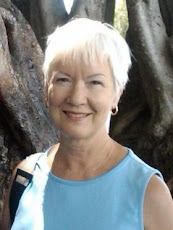

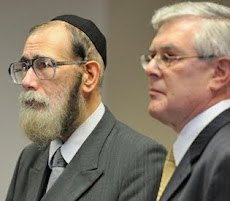

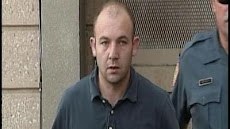









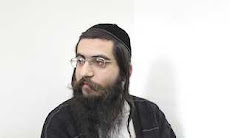





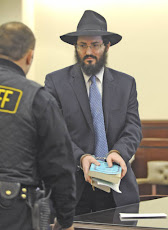














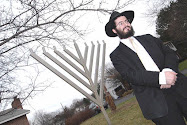




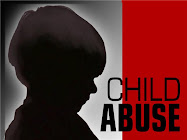



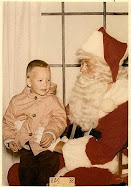









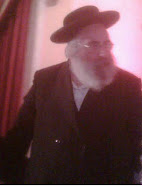



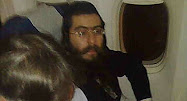




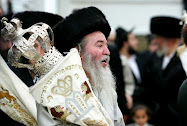


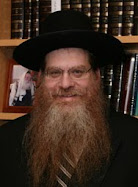












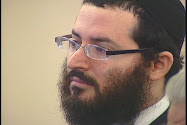
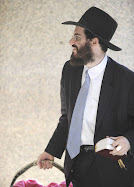
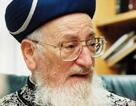









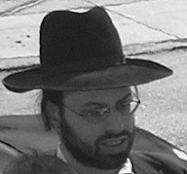











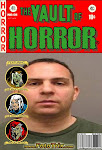











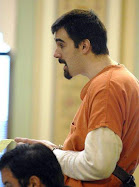


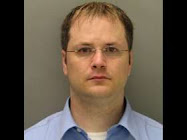


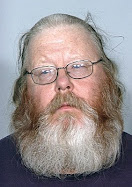

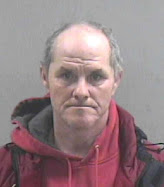
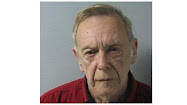
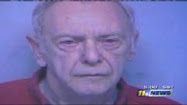













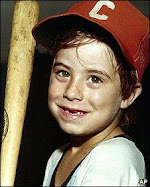

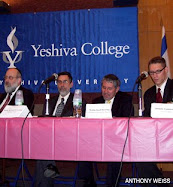







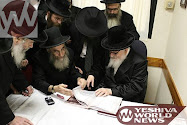






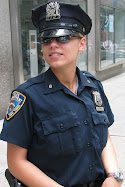


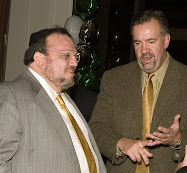
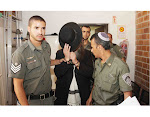



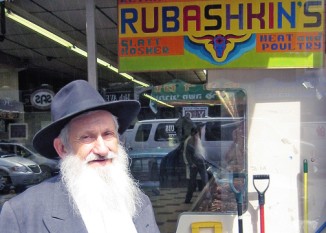


























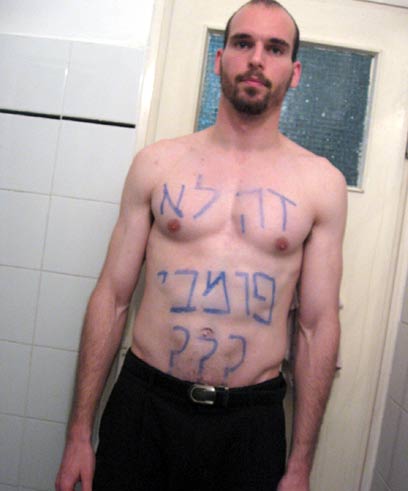
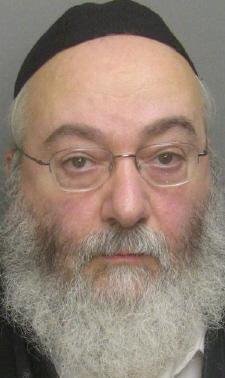












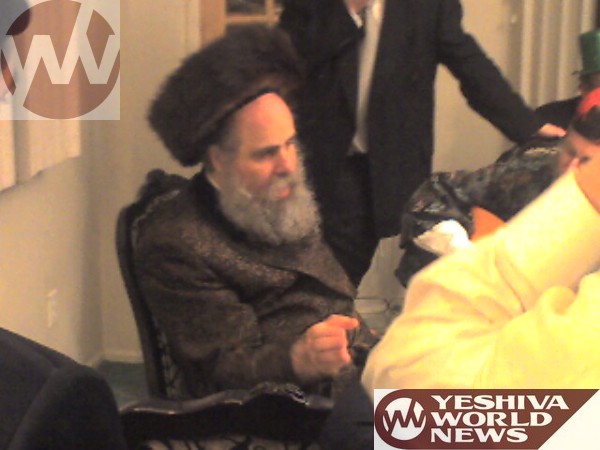






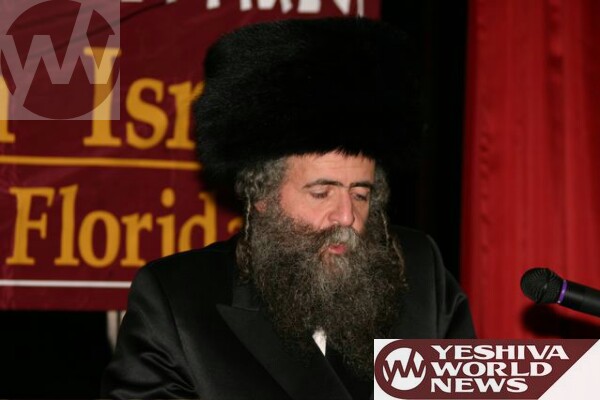


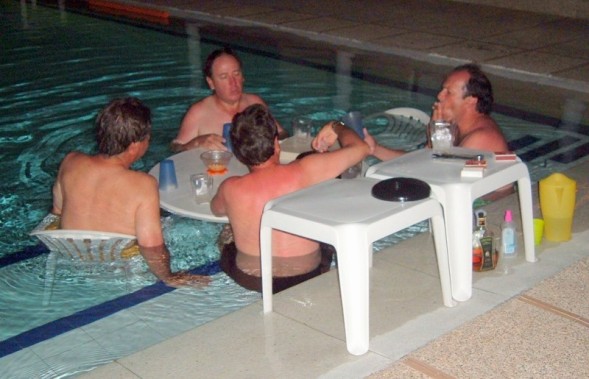

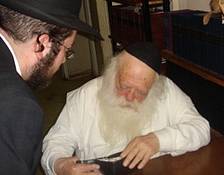

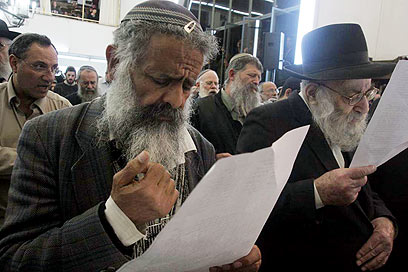
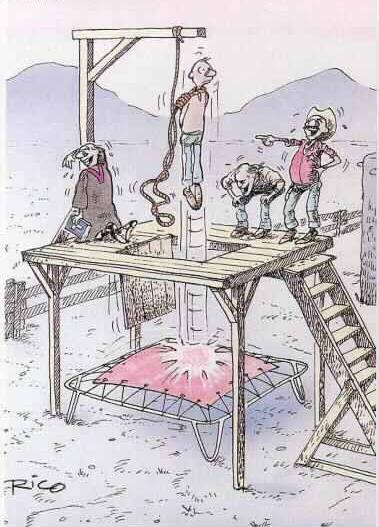



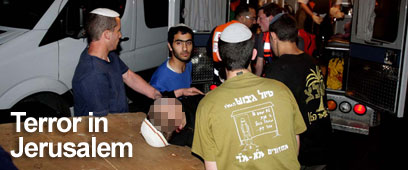
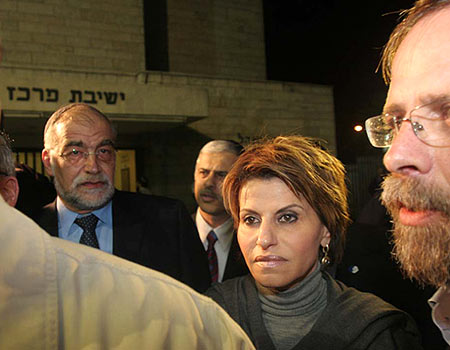
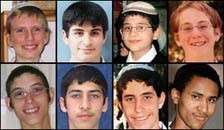
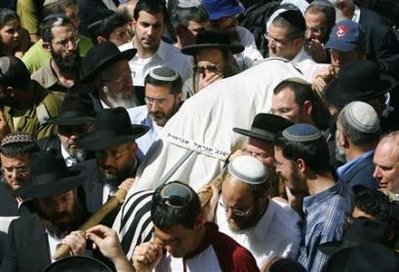
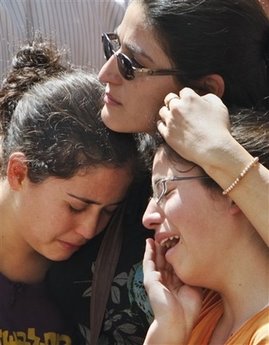
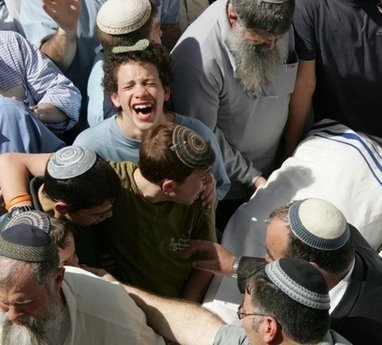
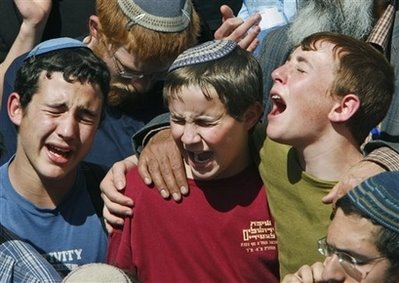
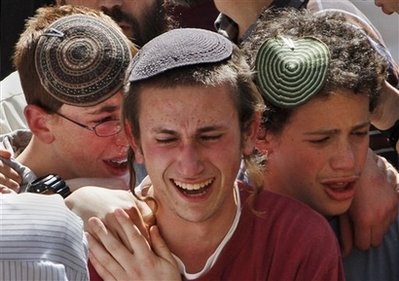
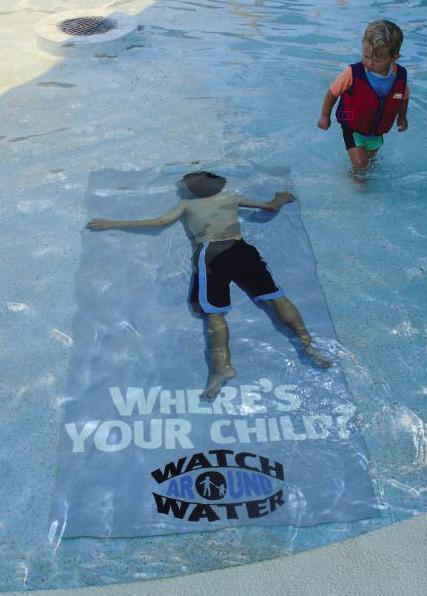

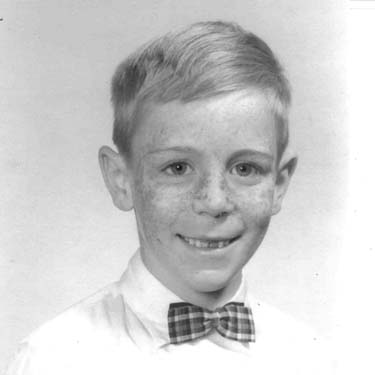







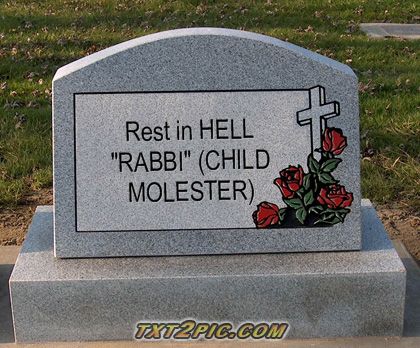
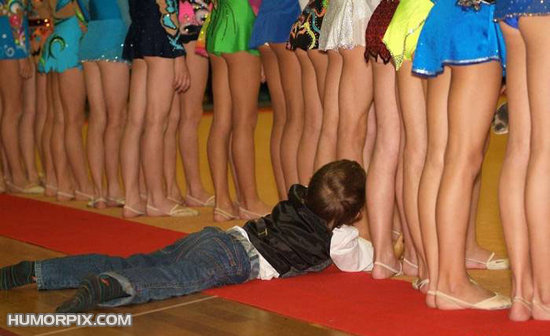







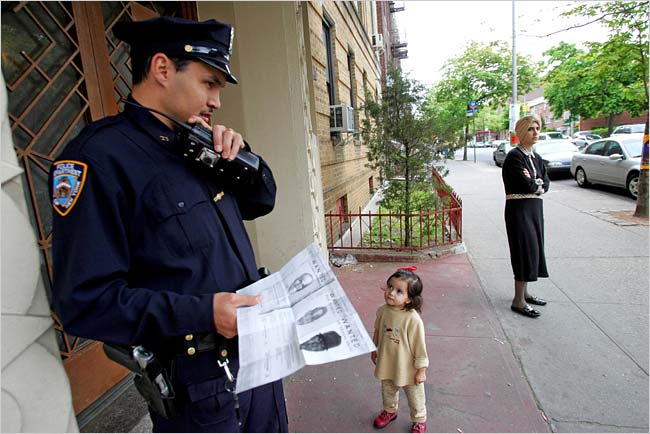















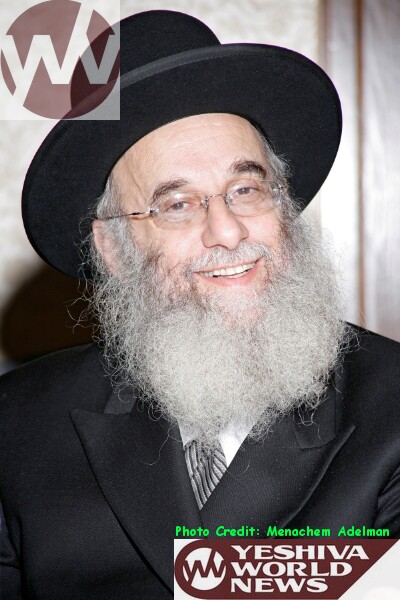

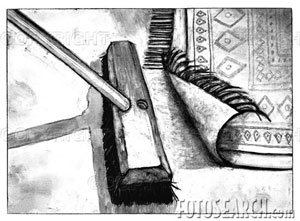
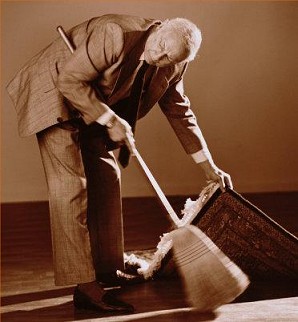








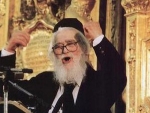
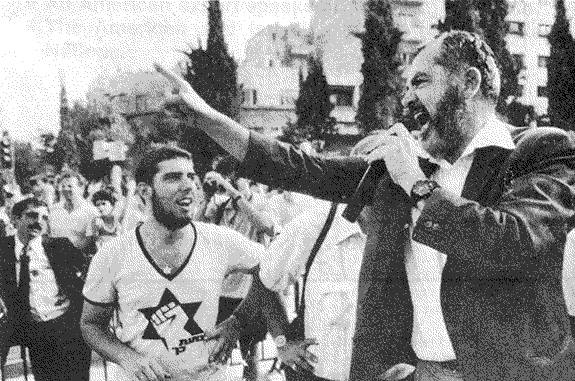

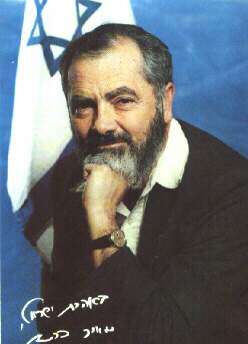

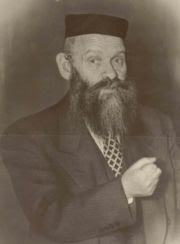




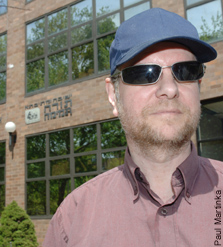


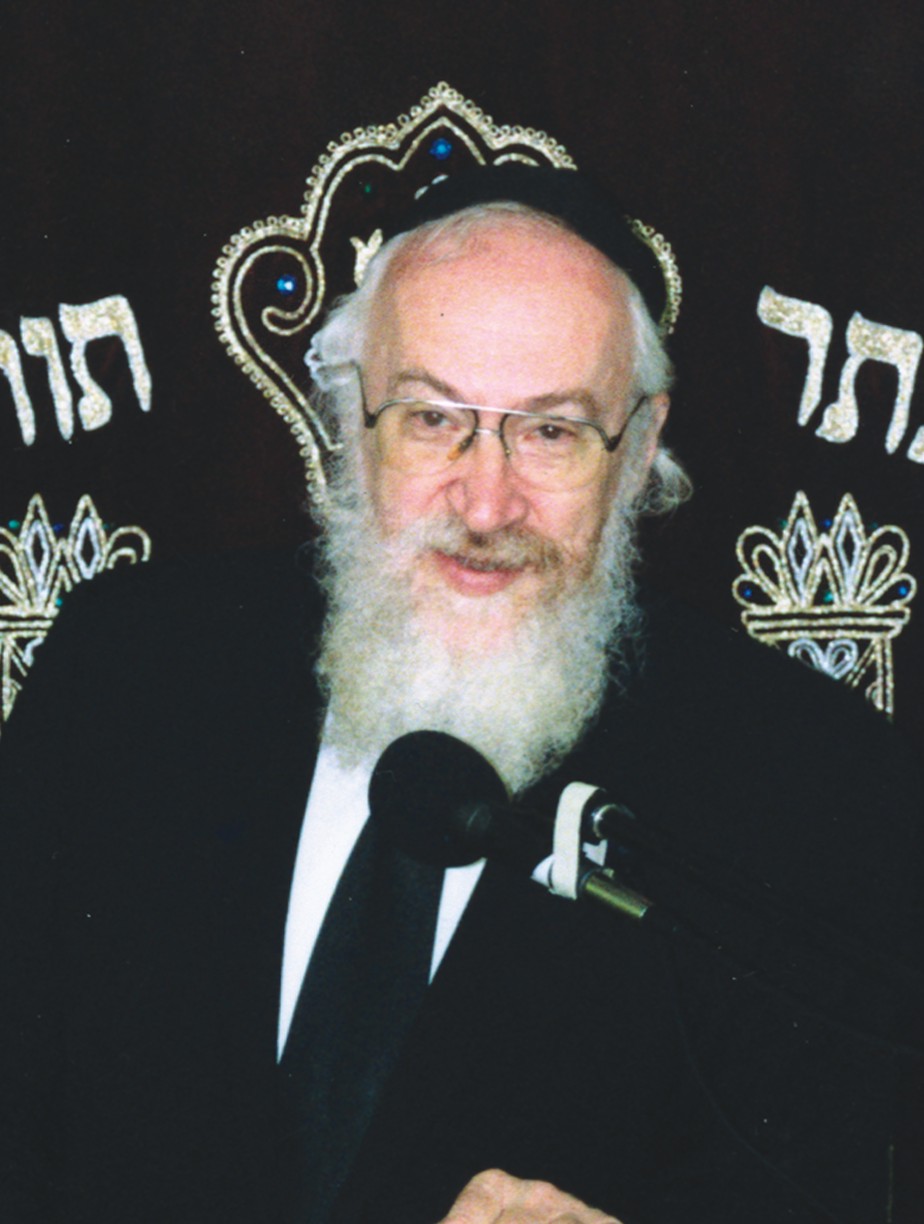





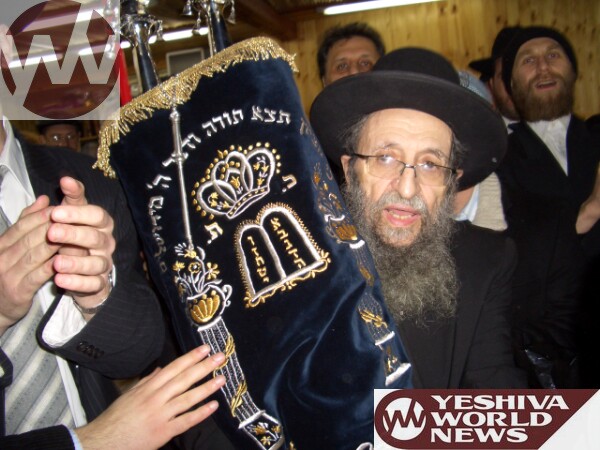

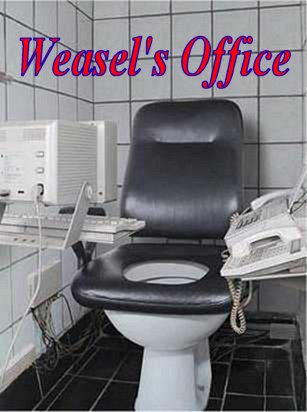


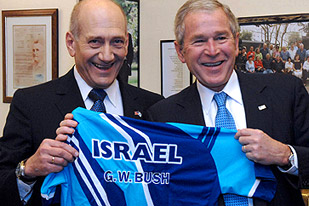
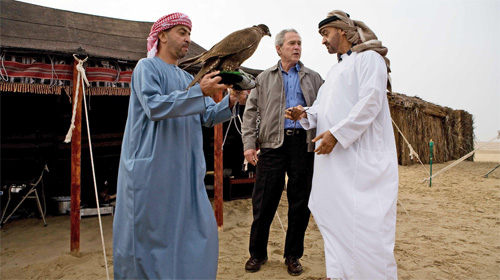


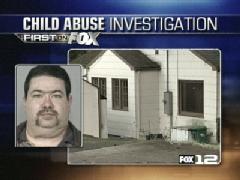
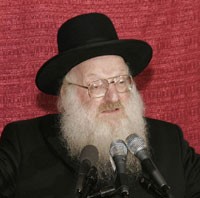

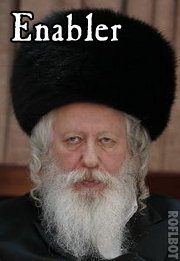













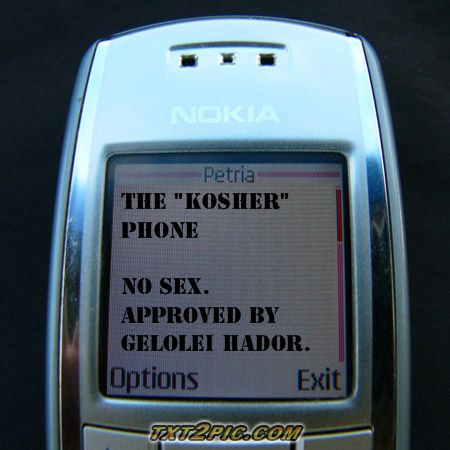





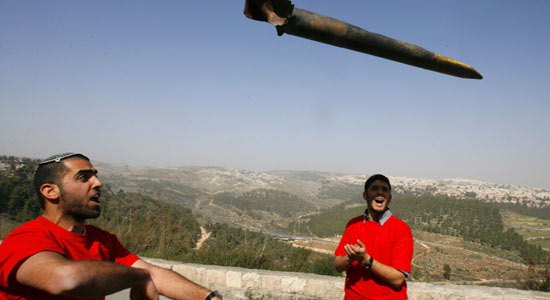
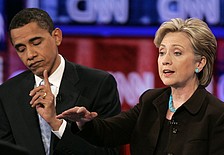


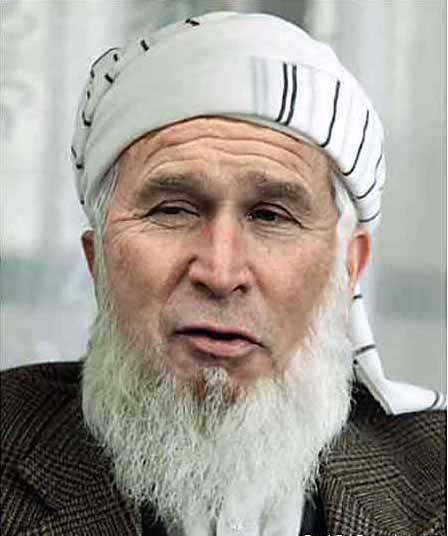









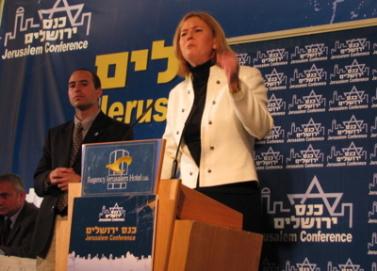


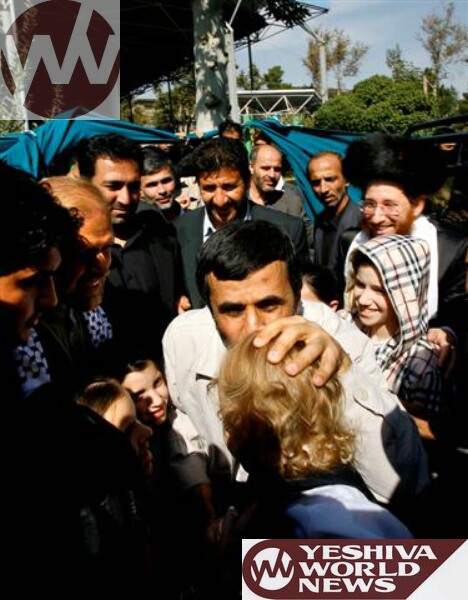
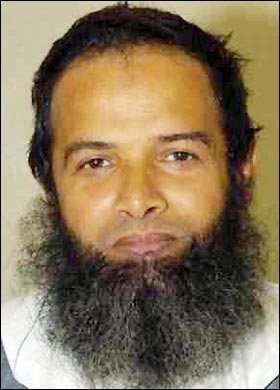


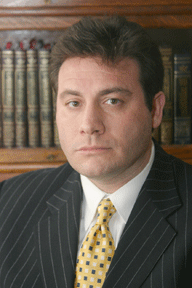

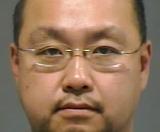
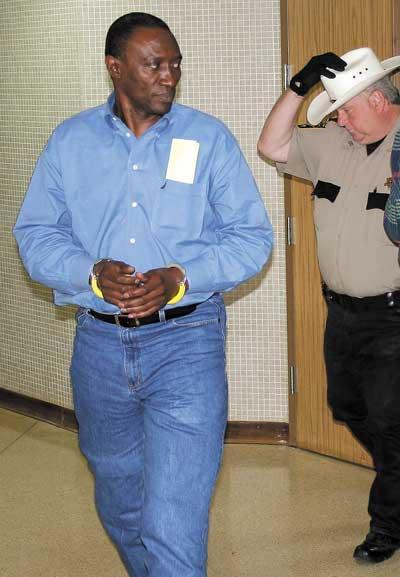

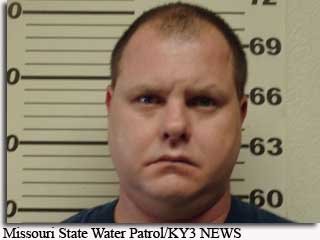



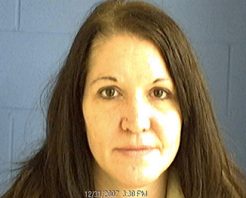


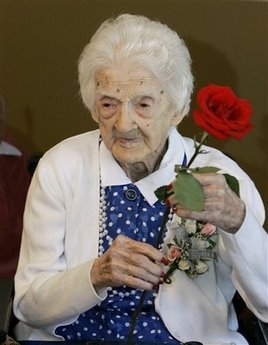

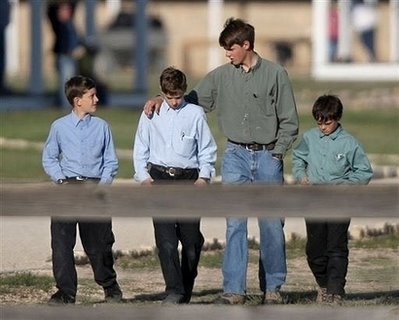



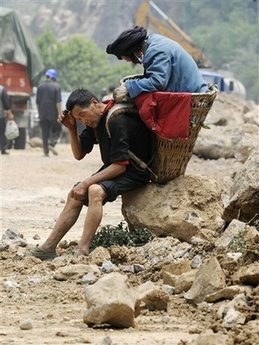



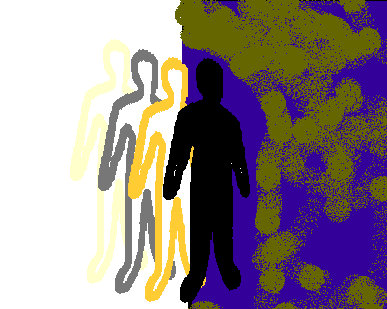

79 comments:
STEVEN Z. MOSTOFSKY, P.C.
is a law firm that concentrates on the areas of family and matrimonial law.
Our priority is to provide the highest level of commitment and professionalism to our clients, as well as, provide each client with individual attention. Clients are kept informed of all major developments in their case.
We represent clients in the Family Court and Supreme Court. In cases where a Jewish Divorce (Get) is sought by a client, we will represent the client at the Beis Din (Court of Jewish Law) and work closely with the Beis Din to assist our client in procuring a Get.
Steven Z. Mostofsky is admitted to the Bar in New York State. He served as a law secretary in the Supreme, Family, & Civil Courts. He is a member of the New York State Bar Association Committee on Family Court. He has written numerous articles, has and lectured on family and matrimonial law. He will provide you with personal service emphasizing on:
* Divorce
* Pre-Nuptial & Separation Agreements
* Custody
* Child Support
* Adoption
* Visitation Rights
* Child Abuse
* Neglect
* Domestic Abuse
STEVEN Z. MOSTOFSKY, P.C. also provides services in:
* Real Estate
* Personal Injury
* Commercial Litigation
* Religious Nonprofit Corporation Law
Express your anger!
Here's what you can do to help:
Call Rabbi Aaron Schechter who is Michael Hersh's spiritual advisor (Dean, Yeshiva Chaim Berlin) and the families attorney, Steve (Shlomo) Mostofsky, President of the National Council of Young Israel (which is a national synagogue organization representing 150 synagogues throughout the United States).
Contact Information:
Steve (Shlomo) Mostofsky, President
National Council of Young Israel
212-929-1525
president@youngisrael.org
Rabbi Aaron M. Schecter, Dean (Aharon Moshe Schechter)
Mesivta Yeshiva Rabbi Chaim Berlin (Flatbush)
1593 Coney Island Ave.
Brooklyn, New York, 11230
(718) 377-0777
For more information on Tranquility Bay go to: Coaltion Against Institutionalized Children
nvestigators ID alleged sex abuse victims
* Story Highlights
* Girls thought to be 7 to 9 years old when tapes made five years ago
* Suspect, 36, charged with one count of sexual battery on a child younger than 12
* He is also charged with 11 counts of sexual performance by a child
* Hundreds of videos found in a Florida apartment where suspect was arrested
(CNN) -- Florida investigators have identified two victims of apparent underage sexual abuse seen on a video found in the former home of a man arrested last week, authorities said Tuesday.
Matthew Kent Sheley, 36, of Hollywood, Florida, was charged Monday with one count of sexual battery on a child younger than 12, the Florida Department of Law Enforcement said.
He previously had been charged with 11 counts of sexual performance by a child.
One of the alleged victims was identified from the video and the other through photographs, the FDLE said.
Officials gave no details of how the two were tracked down, saying only they "were identified through investigative leads."
The additional charge against Sheley was filed after the victim seen in the videotape was found, the FDLE said.
Sheley is being held in the Broward County Jail.
Sheley was arrested Friday after Hallandale Beach police said they received five videos showing attacks on two girls, both about 7 to 9 years old.
They were found by Martin Halladey, a property manager cleaning up an apartment where Sheley recently lived. Halladey described the tapes as "pretty graphic." VideoWatch Halladey describe a girl in the tape as 'trusting' »
Although the faces of neither Sheley nor the girls were shown, police identified him through star tattoos on his left arm and hand that are seen in the video, Hallandale Beach police spokesman Andrew Casper said.
Police also released a chilling image of the handcuffed left arm of one of the young girls showing a "kidney-shaped mole."
Casper said a date on the tapes indicated the alleged abuse took place five years ago.
In a news release Tuesday, the FDLE said investigators had searched "several Broward County locations and have seized videotapes, computer equipment and other items."
Police found "hundreds of videos" at an apartment in Hollywood where Sheley was arrested, Casper said. Investigators are going through them to identify more possible victims.
Sheley is originally from Texas and had lived in Gainesville, Florida, before moving to South Florida about 10 years ago, Casper said.
He led "a transient life" and may have victimized girls in other states, Casper added.
Sheley's criminal record includes convictions for burglary and marijuana possession, according to the Florida Department of Law Enforcement.
All AboutChild Abuse
http://deseretnews.com/article/1,5143,695268544,00.html
Affidavit: FLDS raid spurred by girl's reports of physical, sexual abuse
By Brian West
Deseret Morning News
Published: April 8, 2008
SAN ANGELO, Texas — Officials in Texas on Tuesday released documents detailing the reasons why police raided a polygamist ranch and took custody of 416 children.
In the affidavit by the Texas Department of Family and Protective Services, officials say a 16-year-old girl living at the YFZ Ranch called a local shelter March 29 to report that she was being abused by an adult male to whom she had been "spiritually married."
The document states that the girl, who said she was several weeks pregnant and had an 8-month-old infant, requested assistance leaving the ranch, which is owned by the Fundamentalist LDS Church. The affidavit states that the girl called several times that day, expressing the "need to leave her current living situation."
Also on Tuesday, Marleigh Meisner, spokeswoman for Texas' division of child protective services, said "all the children have been safely removed from the ranch."
However, Meisner said she "still cannot confirm that we have the 16-year-old girl."
According to the affidavit, the girl told officials during the phone call that she was taken to the ranch by her parents three years ago. Then, last year, when she was 15, she was "spiritually married to an adult male member of the church." He was 49, and she became his seventh wife.
"The teenage mother stated that she began to be abused shortly after she started living at the ranch. She advised that the adult male would beat and hurt her whenever he got angry," according to the document.
This included hitting her in the chest and choking her, the affidavit states.
When the abuse occurred, the girl told officials, other women at the ranch would hold her infant child. The last time he beat her was on Easter Sunday, according to the affidavit. The document also indicated that on a previous occasion the man had beaten her so severely that it resulted in her having several broken ribs.
After that incident, she was taken to a hospital, and a doctor wrapped her torso with a bandage and told her, "Take it easy for a few days," according to the document.
The girl also said the man would force himself on her sexually, the affidavit states.
She told officials she was not allowed to leave the ranch except for medical care. In such cases, a man would drive and another woman would accompany her.
She tried to come up with a plan to escape by pretending to be sick, the document says. She then realized that wouldn't work, according to the affidavit, because she wouldn't be able to take the baby with her unless the infant was ill.
The affidavit states that the girl told people at the shelter that she was using someone else's cell phone. She was being quiet so no one would hear her, the document states.
The girl also said, according to the affidavit, that "her parents did not live on the YFZ Ranch and that she has not had any contact with them to explain that she does not want to continue to be on the ranch."
A day later, on March 30, a teenage girl called a local shelter. She reported that she had been "spiritually married" to an older man, but that man had left the ranch to the "outsiders' world."
The department of family services determined the man had been indicted in Arizona for sexual contact with a minor. During the same conversation, she said that church members told her if she tried to leave she would be found and locked up.
She also said that she had been told that outsiders would "hurt her, force her to cut her hair, to wear makeup and clothes and to have sex with lots of men."
The document states that the teenage girl also said her parents were preparing to send her 15-year-old sister to live at the ranch.
"At the conclusion of the conversation she began crying and then stated she is happy and fine and does not want to get into trouble and that everything she had previously said should be forgotten," the affidavit states.
Based on the information gleaned from the phone calls, Texas officials successfully petitioned a judge for a warrant to search the ranch.
While at the ranch searching for the girl, investigators observed a number of young girls who appeared to be pregnant. Investigators said there was a "widespread pattern and practice" at the ranch in which young females are "conditioned to expect and accept sexual activity with adult men at the ranch upon being spiritually married to them."
Based on the circumstances at the ranch, according to the affidavit, the state family services department determined that immediate danger exists to the children who live there.
"Similarly minor boys residing on the YFZ Ranch, after they become adults, are spiritually married to minor female children and engage in sexual relationships with them, resulting in them becoming sexual perpetrators," the affidavit states.
During interviews with child protective services, several children were unable or unwilling to name their parents or "multiple mothers." Some also would not provide information like birth dates, the document says. "This has made it difficult to determine who are the parents of the the children located on the YFZ Ranch."
A court hearing has been scheduled for April 17 to determine what will happen to the children who have been taken from the ranch.
Some 170 of the 416 children were moved Tuesday afternoon to a separate makeshift shelter. It appears they are being kept in the "cattle arena" annex of the San Angelo Coliseum.
The other shelter at the historic Fort Concho had reached maximum capacity. The children had first been taken there.
Texas officials apparently moved the children during the afternoon press briefing while all the members of the news media were indoors.
E-mail: bwest@desnews.com
I knew of abuse and allowed it to continue.
--------
Church knew of sex abuse, victims claim
There is 'no evidence' of alleged incidents being reported: Catholic officials
Andrew Seymour
Ottawa Citizen
Monday, April 07, 2008
PEMBROKE - The Catholic Church was aware of the sexual abuse of young boys by Bernard Prince four decades ago, but allowed it to continue, lawsuits filed by nearly a dozen victims of the pedophile priest allege.
It's a charge the church vehemently denies, claiming an "extensive search" of documents from the time period unearthed "absolutely no evidence" that anyone ever reported any incidents of sexual abuse by the now-retired priest, who is serving a four-year prison sentence after pleading guilty to 12 charges of indecent and sexual assault involving young males between 1964 and 1984 and being found guilty of a 13th.
Lawyer Rob Talach, whose law firm, Ledroit Beckett, is representing 11 men who have each filed lawsuits against Msgr. Prince and the Roman Catholic Diocese of Pembroke, says the older sister of one of the victims reported the abuse of her brother to a nun at her Catholic high school in 1968 while Msgr. Prince was at the St. Jean Baptiste parish in Pembroke.
Mr. Talach said the sister was assured the matter would be reported to senior officials of the diocese.
But it wasn't until two years ago, after the 72-year-old former Pembroke-area priest and Vatican official retired, that police launched a criminal investigation into the sexual abuse of the young boys.
"I think it just goes to show the attitude of the Catholic Church that they would just as well keep this buried," one of the men involved in the lawsuit said on Monday. His name is protected by a court-ordered publication ban.
Mr. Talach said the diocese also received a complaint about Msgr. Prince in the late 1990s, but he was allowed to continue to hold a prestigious post at the Vatican as secretary-general of the Pontifical Work for the Propagation of Faith.
Bruce Pappin, spokesman for the Roman Catholic Diocese of Pembroke, said he was not aware of a second complaint. Mr. Pappin said the priest who dealt with the complaints at the time has since died.
Any complaints would have been dealt with following the church protocol on abuse of young people by the clergy, he said.
There is no evidence of the complaint in 1968, said Mr. Pappin.
"There was an exhaustive search of all of the documentation and there is absolutely no evidence that the diocese knew," he said.
According to the statements of claim, the victims allege the diocese knew or should have known that Msgr. Prince had the "propensity to engage in such deviant behaviours" and took "no steps to stop the behaviour or protect the plaintiff(s)."
"All of these years, in my silence, I never thought the church knew about it," said the man who was sexually assaulted by Msgr. Prince in 1984, when he was 17 years old.
"Why would the Catholic Church allow this to continue and not do anything about it?"
The man said the abuse left him with nightmares and feelings of anguish and guilt. He said he'd like to see an "act of contrition" on the part of the church.
"If they had acted upon it when they first heard about it, I wouldn't be one of the victims standing here right now," he said, adding he has never received an apology from the church for what happened to him.
The 11 men - including 10 of the victims from the criminal proceedings - are seeking millions in damages to cover emotional and economic losses and to pay for counselling.
Two additional lawsuits, involving two of the other victims from the criminal proceedings, have also been filed by other law firms.
The males were between 10 and 16 when the assaults occurred. Court heard that the assaults usually occurred in bed, where a naked Msgr. Prince would fondle and masturbate the young males. In several cases, the complainants reported anal intercourse or oral sex, although Msgr. Prince denied those allegations.
Mr. Talach said the church has already provided some funding to victims for counselling. He said the victims he represents hope the Catholic Church will make institutional changes to prevent such sex abuse from occurring again.
aseymour@thecitizen.canwest.com
Seattle schools to pay $3 million in sex-abuse case
Seattle Public Schools will pay two students a total of $3 million in what plaintiffs say is the largest legal settlement by a Washington school district.
The district agreed to settle a lawsuit filed by the students in the case of former Seattle fifth-grade teacher Laurence E. "Shayne" Hill, 58, who was sentenced in 2005 to more than five years in prison for molesting students during the 20-plus years he worked for Seattle Public Schools.
Of the $3.05 million, $2.5 million will go to a now-17-year-old former student of Hill's whom the lawsuit said Hill molested for two years, beginning in 2001.
Over his two-decade career at Broadview-Thomson Elementary School in North Seattle, three principals and even the superintendent ignored 30 reports from at least 15 other teachers about Hill, according to the lawsuit.
Seattle Public Schools spokeswoman Patti Spencer said the district "has taken responsibility for the inappropriate behavior of its former employee."
Partly in response to the case, the district has strengthened its training of teachers and administrators to help them recognize grooming behavior, she said. The district's policy is that if teachers or administrators see a clear violation, they should report it to the police.
"We've learned a lot from that experience, and it reinforced what we knew was a need," Spencer said.
The settlement is paid out of a risk-management pool that operates like an insurance policy for the district.
Hill was arrested in 2005 after the mother of one of his victims walked in on him touching her 11-year-old daughter's buttocks. He resigned before the district could complete an investigation and pleaded guilty to first- and second-degree molestation.
Police said a total of seven girls told detectives that Hill had touched or kissed them. The lawsuit also alleged that Hill kept a rubber breast and phallus in his desk drawer and that he groomed the primary victim with gifts and letters before sexually assaulting her over two years. Hill even molested one student on his lap in the back of his classroom while his other students watched a movie.
I'm a putz that only a mother can love.
I was a Chaim Berlin guy. I want you to know that the place is a cult. It's true. They are not normal people.
Shimon Gabai was in police custody after the father of the abused children turned him in to police.
Gabai, who was wanted by police, was hiding in a forest near the capital, Jerusalem police spokesman Shmuel Ben-Ruby said.
He will be brought to a Jerusalem court late Wednesday for a remand hearing.
Meanwhile, police planned to issue an international arrest warrant this week against an extremist Israeli rabbi who fled to Canada and was one of the main suspects in one of the worst child abuse cases in Israeli history.
http://www.thejewishweek.com/viewArticle/c40_a7588/News/Israel.html
by Michele Chabin
Israel Correspondent
Jerusalem — Two new laws intended to increase the number of organ donations and transplants in Israel could actually have the opposite effect, due to the religious controversy surrounding their passage.
While transplant advocates initially hailed last month’s legislation as an historic compromise between the notoriously stubborn Ministry of Health and equally obstinate Chief Rabbinate, recent clarifications by Sephardi Chief Rabbi Shlomo Amar, and outright denunciations by Ashkenazi haredi leaders could plant doubt into the minds of Israelis already skeptical about donating organs.
This development is particularly worrisome, experts say, because of Israel’s dismal organ donor rate, which every year contributes to the death of roughly a tenth of the 1,000 citizens awaiting a transplant.
Opinion polls reveal that many Israeli Jews, even more...
http://www.mcgilldaily.com/article/3174--does-my-teen-need-help-
The McGill Daily
“Does my teen need help?”
Display_tranquilitybay
Apr 07, 2008
By Nadja Popovich
In 2006, Martin Anderson, a 14-year-old Florida teenager, died at a “boot camp” for troubled teens. When a video surfaced showing a group of guards repeatedly attacking the teen while a nurse appeared to look on, public outcry against this type of correctional facility came to a boiling point. Amid controversy over whether Anderson’s sickle-cell blood trait was the cause of death, the verdict was finally rendered that he had, in fact, died of suffocation from the guards’ abuse.
While Anderson’s boot camp was a state-run facility, privately-owned versions abound. “Tough-love” rehabilitation camps for teens are prevalent throughout the United States, with a disturbing lack of formal regulation.
“No one knows how many of these programs there are out there. They aren’t very regulated,” says Maia Szalavitz, author of several articles and books on abuse in tough- love programs and senior fellow for Stats.org, a media watchdog web site. “Many programs work outside the States too: in Mexico, Samoa, Jamaica, all over really. And they have these incredibly ironic names. like ‘Tranquility Bay.’”
Though not always manifesting themselves as a “boot camp,” all of these so-called tough-love programs seem to be based on the same approach: with enough confrontation, kids may undergo a sort of “reality check” that will allow them to put their past behaviour behind them when reintegrated into society. But according to many recent studies, including a National Institute of Heath State-of-the-Science conference statement on Violence and Related Health-Risking Social Behaviour, this is simply not the case.
“No matter what these places may call themselves – boot camp, ‘tough-love’ drug rehab, or emotional-growth boarding schools, or wilderness programs – the basic concept is always the same: break the kids down in order to fix them,” says Szalavitz.
Though much more prevalent south of the border, it would be naïve to think that Canada was devoid of boot camp rehab centres.
“I was shocked this place existed in Canada!” attests Rebecca Smith, a former “client” of a Canadian tough-love drug rehabilitation facility. “My Canada, which I know has a great human rights record. I could not fathom that this place was allowed to exist. While there, more than once I said, ‘You can’t do this! I have rights!’… and they said, ‘Druggies don’t have rights.’”
The breakdown
Szalavitz has traced the proliferation of most modern teen rehabilitation programs from Synanon, the first “tough-love” rehabilitation prototype, in Santa Monica, California. Initially a drug rehabilitation centre in the late fifties, Syanon gained cult status by the seventies, before it closed its doors in the 1990s. Its legacy still casts a large shadow on the drug rehabilitation field.
Founded in 1958, it was the first program of its kind, and it promised “lifetime rehabilitation.” The basic therapeutic idea behind Synanon was a “game” in which youths were encouraged to use humiliation and insults to break each other down. The organization, by then named the Church of Synanon, was raking in millions each year. It gained public infamy after a report was issued by a Grand Jury accusing the facility of child abuse – stunningly, no steps were taken to shut down the organization at the time. Synanon closed in 1991, however, facing financial problems and a multitude of allegations.
Since the closure of Syanon, a host of other tough-love teen rehab programs have come and gone. Even with crusaders like Szalavitz making their cases against these programs, the moment one centre closes, another one opens.
The latest in a line of controversies came from a rehabilitation chain named Kids Inc., a successor to Synanon’s breakdown model. Though no Canadian Kids programs were ever officially opened, so many Canadian youths were sent to Kids of Bergen County in northern New Jersey that a Kids of the Canadian West program, based in Alberta, was in the works in the early 1990s. But following several allegations of abuse against various Kids facilities, centres all over the United States were shut down.
Plans for such a Canadian Kids facility were scrapped. Instead, the man set to head the Kids camp in Alberta, Dr. Dean Vause, went on to found his own facility: the Alberta Adolescent Recovery Centre (AARC), in Calgary. While there have never been any formal charges laid, and the AARC firmly denies any allegations, a preliminary report done in 2003 by the nonprofit International Survivors Action Committee (ISAC) concluded that the AARC bore an all-too-striking resemblance to its Kids predecessors.
“With respect to allegations of abuse, I have yet to encounter one,” an AARC representative wrote to The Daily in an email: “If this did occur, however, it would be considered a critical and urgent clinical issue to be addressed by our clinical committee.”
Confined to recovery
One of the biggest problems with many of these programs is that they promise a quick-fix solution to deep-seated psychological problems. Usually these tough-love facilities are not staffed with psychological professionals.
The AARC, for one, touts its “teen-on-teen” care as integral to the rehabilitation process. “Addicts are adept at manipulating and conning others. But they can’t con a con,” reads the AARC web site. In fact, many peer counsellors are graduates of the program itself. “They know all the lines and have heard all the excuses – they’ve used them. Many counsellors have degrees, giving them a powerful blend of real life experience and clinical expertise.”
This model, however, cannot provide kids with adequate psychological help if they really do need it, asserts Szalavitz. Helpatanycost.com, Szalavitz’s accompaniment to her book of the same name, notes that one of the major questions parents should ask when considering sending their wayward children to one of these programs is: “What are the qualifications of the line staff who work directly with the teens?” According to Szalavitz, anything less than a Masters-level psychology degree for all group leaders should be considered a red flag.
Meanwhile, what Rebecca Smith and many other clients of tough-love programs find most unsettling about these facilities is the basic and uncompromising confinement that is integral to the rehabilitation models. As minors, teens have no control over their placement or stay at rehabilitation programs. As long as they are deemed “in need,” their parents can send them to any private rehabilitation facility, separated from friends, family, and the greater world, for an indefinite period of time.
This unconditional confinement is frustrating for those enrolled in these programs, but it can also be dangerous. Though she has grouped a wide range of programs into the tough-love category, Szalavitz argues that categorizing a program as specifically for “troubled” teens leaves youth stigmatized and vulnerable. When combined with a lack of control over their own circumstances, this labelling can prove deadly.
Szalavitz recounts a story from her book about a teen named Aaron Bacon who died of internal bleeding after a treatable ulcer ate through his stomach lining in 1994, during a “wilderness therapy” excursion.
“The ulcer could have been treated with over-the-counter medication,” she says, “but, instead, it ate through his abdomen over the course of several weeks. The program insisted he was faking.”
“An ‘outward bound’ trip with so-called normal kids can be very good and nurturing,” she continues. “But that’s with normal kids, so, [if you complain of something being wrong] you’ll be believed.”
Troubling labels
Tough-love programs’ remarkably low requirements for admittance is another troubling element, according to Szalavitz.
“I would call [what really drives admittance] a wallet biopsy,” she says. “If the parent can afford it, the child needs the program…[and] if you fill out any of the forms you can make a normal teenager seem troubled. These are not legitimate mental health evaluations.”
One web site, bootcampsforteens.com, offers a “Does My Teen Need Help?” section to guide parents through the process of evaluating their child’s “need” for these camps, concluding with: “When it comes to seeking help for a child in danger it is better to have sought help a little too early than a little too late.”
Not according to Szalavitz, however.
“Some [parents] have been terrorized by the drug war into thinking, ‘Oh my God, my kid is smoking pot, they’ll become a heroin addict.’ This won’t happen; the vast majority of marijuana users never even try heroin. People think, ‘It’s better to be safe than sorry,’ but these programs aren’t safe,” Szalavitz says.
She argues that most teens do not need medical attention for being “troubled,” arguing that developing better communication with teens and family therapy sessions with schooled psychiatrists, social workers, or psychologists as one route, and postsecondary education as another.
“If you actually want to prevent long-term addiction, get your kids through college!... Finding meaning and purpose in their life is the key to overcoming addiction, and you can’t force people to find meaning and purpose.”
Some names have been changed in this article to protect the privacy of those involved
I just saw a documentary about WWasp in tranquility bay. Horrible, evil, sick...it's beond any reason, it is just not acceptable that a democratic country like USA can allow this to happen! To destroy childrens mental and physical health like this!!! It's like in a nazi-camp! Did you know that USA is the only country along with SOMALIA not to have adopted the international UN-declaration about protection against childabuse!! Just incredible! This documentary is shown in Europe right now, and people are chocked, very chocked.
http://www.bulletinboards.com/v1.cfm?comcode=titsch
FUCK TB!!!!!
yo fuck that son!! i was in TB for a year 2004-05 and let me tell you that place is fucking bullshit. They accused me of being a gang leader, the supervisor h it on me and told that he loved me, MR COLEMAN WAS HIS NAME. i told MS. MAKENZIE and that horse lookin bitch didnt do shit. I would however say that academically i did accomplish a lot. As far as anything else its shit. One time when i was in intervention the embassy was coming to see the facility, when they came in op they turned on the fans, and when they left they turned them off. We began to scream to the embassy officials and they quickly turned them on again. But when they were officially gone they turned them off. REFORM has never had a harsher meaning, so whoever says that it is ok to have their kid in that hell hole ya better think again. One girl jumped into the ocean to try to get away. you tell me some shit like dont shut it down and ill shut you the fuck down, seriously on an adult note since i am now an adult, DON"T SEND YOUR KIDS THERE IT"S NOT WORTH THE MONEY!!!!!!!!!!!!!!!!!!!!!!
[Date/Time=02-08-2008 - 4:36 PM] Name:Dreamer Ph:none ya Malakaidreams@yahoo.com,
http://www.bulletinboards.com/v1.cfm?comcode=titsch
2 anonymous:
my name is Bassie Taibe, I live in Boro park with my husband and daughter. i was in tranquility bay for 13 months and was sent there from ivy ridge where i was at for 11 months. those years were the most hurtful, traumatic years of my life, and i cannot believe that this frum boy is stuck there now. what can i do???? maybe i can talk 2 his father or maybe my parents who live in monsey can talk 2 his parents, they didnt know i was being abused, they were very much deceived. there was no1 who cared enough to do any research. i really want to help this boy in any way i can. please give me an email adress where i can contact you or any1 else i could speak to. plz call me if you can at 646 316 4591 or at 718 687 8808.
[Date/Time=10-21-2007 - 3:21 AM] Name:bassie luvsoill@yahoo.com,
isaac
So i know this boy who was sent to tranquility bay and everyone who knows him is trying to do all we can to get him freed because his dad mcihael hersh knows that hes being abused bt does not care what happens to his son. so i would really appreciate it if we could get these posts against tranquility bay sent to the congress so they can investigate that place and hopefully shut it down. PLEASE FREE ISAAC & ALL THE OTHER KIDS SUFFERING!
[Date/Time=10-18-2007 - 9:43 PM] Name:anonymous
http://www.bulletinboards.com/v1.cfm?comcode=titsch
TO 1971 Experiment:
I agree that most of the teens who walk into Tranquility Bay are "normal, healthy". I was at Tranquility Bay because I had sex with two guys when I was 14. I was at Tranquility Bay for 2 years for having sex three times, twice with one guy and once with the other! I was a normal, happy girl, who always got good grades and never did drugs. During my time at Tranquility Bay, my father chose to open up to me by writing his life story in a letter to me; My father, who sent me to Tranquility Bay, was having sex, doing and selling acid, weed, and hash, had run away from home, and hitch- hiked around various states in the U.S. with his girlfriend, and even gone out of the country and joined a kibbutz in Israel against his parents' will. He was the ultimate deviant. And in my opinion, those behaviors were normal. Teens rebel, and modern- day teens' parents' rebelled against their parents', and their parents' rebelled against their parents', etc. Tranquility Bay is the place where parents put their kids when they're embarassed of their rebellious teens; It's where they hope their kids will retrack their wayward behaviour and conform to society...The sad reality is that TB may scare your child into behaving for a little while, but ultimately your child will have alot more problems than before.
I've been home from TB for 5, almost 6 years, and I still have major anxiety, started using cocaine (and any other drug i could get my hands on) a little while after leaving TB (once I established that my parents weren't going to send me back- but i probably would've started even if they were threatening to send me back, cause i just needed to self- medicate somehow), exhibit symptoms of PTSD, find it hard to make and maintain relationships with any1, get close to any1, etc., not in touch with my sexuality, feel dirty, degradable, and useless, and have not been able to hold a job. I can't cope with the memories of being stood up in seminars in front of the men and boys there, and being screamed at: "WHORE!!SLUT!!DIRTY GIRL!!SUCK MY DICK!!"..I know they had no choice and probably didn't want to do it, but going throught that seminar process repeatedly as a 14- 15 year old, really scarred me. And those times in O.P., when the staff thought I was planning a riot, and they hog- tied me, and slowly twisted my limbs, slapped me, and banged my head into the floor until i gave them information (this happened to me a few times, and all those times, i gave them names of other girls, saying they were involved in the riot plans. The truth was i had no idea about any riot plans, but couldn't take the pain anymore, so i gave them the names of girls that i didn't like or i knew the staff didnt like, just to get the heat off of me. Most of the time, there were no riot plans at all, this was just routine- random interrogations. The one time in the entire 2 years that i was at TB, that there actually was an uprising, the staff didnt find out about it b-4-hand.) The worst part was that the staff at TB told me i wouldn't go home till i was 18, that my parents didn't want me anymore, and they sent me here because they were ashamed of me (that last part is probably true). They made me feel as if i was a bad, manipulative, untrustworthy, degradable, undeserveing person. When once i was a happy, curious, trusting, confident person, i came home a mere shell of that girl. As soon as my parents realized the damage that was done, they sent me to a therapist to try to repair me.
But i am beyond repair. I'm just damaged goods, hoping one day some1 will put these pieces of me back together, but deep down i feel it will never happen. Most days, I just feel like ending it- maybe i can jump in front of an oncoming subway, or take too may of these pills i've been popping since this morning...
These tears won't stop..i'm sobbing now. Every night i dream TB all over again, and I'M TERRIFIED!!!!I'm PETRIFIED!!!Can some1 come and hold me?!??!for 2 years I WENT WITHOUT TOUCH, NOW I CAN'T BRING MYSELF TO EVEN EMBRACE MYSELF!!!when will these tears stop!!???When CAN I START LIVING AGAIN!>!>!?!?!?!!
[Date/Time=09-18-2007 - 1:28 AM] Name:HELP!
Tranquility Bay should be shut down forever. I can't understand how such a place can still exist. Where are our politicians when we need them?
How a creep like Shlomo Mostofsky can aid in the confinement of 16 year old Isaac Hersh - I'll never fully comprehend. However, I do know that this guy is a wicked, screwy, creepy fungus that has no moral decency whatsoever. Isaac deserves justice. Mostofsky should be held accountable for his despicable role in all of this.
This comment on uoj is right on the money.
------------------------------
http://theunorthodoxjew.blogspot.com/2008/04/thousands-of-children-are-starving.html
steve said...
From VIN:
Rabbi Metzger: I Call On Every Jew To Expel Abusive Rabbis, And Phony Educators From Our Community
Israel - Chief Ashkenazi Rabbi Yona Metzger made an emotional call to rabbis nationwide on Tuesday, asking them to denounce violence against children in their sermons on Shabbat next week. Rabbi Metzger’s call came shortly after the exposure of several cases of severe child abuse, two of them among families from extremist Jewish sects.
Rabbi Metzger asked rabbis to talk about Jewish education, “which is based on true love for our children.” Parents must realize the importance of setting a personal example for their children, and of teaching each child pleasantly and calmly according to his or her own needs, he said.
He harshly criticized those involved in the child abuse cases revealed this month, particularly a violent rabbi who has since fled the country. Religious Jews and rabbis “must vomit these parents and rabbis out of the camp and do everything in our power to save the souls of these young children,” he said. [arutz7]
----------------------------------
Too little too late. "Do everything in our power", why doesn't he say it straight out, "GO TO THE POLICE"?? When will they have the guts to stand up and say that these predators have a din of rodef and that it's a chiyuv to turn them over to the authorities? It's very easy to say "throw them out". When they get "thrown out" of one community, they will move to another community and continue their physical abuse. These "leaders" just don't get it.
http://lukeford.net/blog/
I Can Name The Jerusalem Couple Accused Of Child Abuse
Listen to this article. Powered by Odiogo.com
There’s a gag order in Israel against naming the couple but I am told they are David and Michal Shenbaum (nee Schwartz).
Here’s the Israeli document I was emailed.I can’t read Hebrew. Anyone care to translate anything important here?
I’m told that according to this document, Michal was born in the United States in 1970 and made aliya in ‘71 and her maiden name was Schwartz. Harold and Claudia are his parents. Her parents are called Naomi and Yehuda.
She’s apparently the product of Naomi Klass’s first marriage. Did Naomi and Yehuda split while they were in Israel? Who got custody of Michal? I assume Naomi.
David Shenbaum apparently made aliyah in 1993.
Does anyone know this couple and can offer any insights?
I can’t find anything about them on Google.
Anyone have YULA yearbooks from 1985-1988 to check this out? I initially heard that both Michal and David went to YULA. Now it seems that I didn’t get it right. Perhaps it was YU’s New York High School?
http://theunorthodoxjew.blogspot.com/2008/04/thousands-of-children-are-starving.html
Mother Accused Of Worst Child Abuse In Israeli History Is Granddaughter Of Jewish Press Founder Rabbi Jacob Klass
----------------------------------
We affirm our right not to have this printed as an OP-ED piece in our next issue - unless it was written by Avi Shafran.
http://failedmessiah.typepad.com/failed_messiahcom/2008/04/and-you-shall-b.html
"And You Shall be Holy…" – Haredi Child Abuse Cult Picture
http://failedmessiah.typepad.com/failed_messiahcom/2008/04/mother-accused.html
Mother Accused Of Worst Child Abuse In Israeli History Is Granddaughter Of Jewish Press Founder Rabbi Klass, Sources Say
This is perhaps the most bizarre story I've ever printed. There's even a connection, of sorts, to the Tendler family.
"Put stones on a hot plate . . . when they are boiling, put them on the bodies of the children and then they will be cleansed."
------Rabbi Elior Chen
Luke Ford breaks the story:
The mother of the daughter with the abused children is Naomi Klass Mauer, the daughter of the founding publisher of The Jewish Press — Rabbi Jacob Klass. She had the bitterest of divorces from her husband Yehuda Schwartz.
She was an agunah — a chained woman because he would not give her a divorce. She says he tried to extort vast amounts of money from her in exchange for a divorce.
She became a champion of the agunot in The Jewish Press, which features a seruv section for men who won’t listen to a Beit Din and won’t give their wives gets (Jewish divorces).
She married Dr. Mauer. They lived in Manhattan Beach (?). Their daughter went to YULA [Yeshiva University of Los Angeles high school] and then eventually married another YULA graduate from her class (what year?). They moved to Israel and became Modern Orthodox frum — West Bank Gush Kutif type frum (I am not saying they lived there but that type) and then they moved to the old city of Jerusalem and became Breslaver Hasidim. The couple became extreme frum (religious). They were introduced to some characters among the Breslavers who do drugs and get involved in their marriage. Some of these wild Breslavers move into the home.
The husband claims that once these guys moved in, he couldn’t see his children. So why didn’t he go see the police?
Anyone have any information on why these YULA grads would go on such a dark and deviant path?
How could their kids be so severely abused in the Old City of Jerusalem where everybody lives on top of each other?…
I asked Luke if he was sure the woman is Rabbi Klass's granddaughter. He told me he confirmed this with two separate sources.
The Tendler connection?
Both Rabbi Aron and Rabbi Shalom Tendler have been on the faculty at YULA. Aron was forced out, it is said, over allegations of sexual abuse. Shalom Tendler resigned not that long after. Both, however, were active when Rabbi Klass's granddaughter was a student there.
Background on the Breslov cult Rabbi Klass's granddaughter joined.
http://failedmessiah.typepad.com/failed_messiahcom/
Daf Yomi
By:Rabbi Yaakov Klass and Rabbi Gershon Tannenbaum Wednesday, April 9, 2008
Our Daf discusses the case of a woman who undertakes a nazirite vow and then drinks wine, intentionally, or becomes ritually defiled. She is liable for the administration of 40 lashes. However, if her husband had annulled her vow without her knowledge and she drank wine thereafter, she is not liable for the punishment of 40 lashes. R. Yehuda maintains that she is, in fact, rabbinically liable for the punishment of 40 lashes. The Gemara cites a baraitha indicating that she requires atonement and forgiveness – she had intended to sin and must now repent. The intention is the determinant.
How Much Is A Mitzvah Worth?
Someone once preempted another persons mitzvah: A ritual slaughterer (shochet) was about to observe the mitzvah of covering the blood after shechita and another person interceded and covered the blood. The Gemara (Bava Kamma 91b) relates that in that case Rabban Gamaliel obligated that person to pay the shochet 10 zehuvim (gold coins).
There are two very interesting co-dependent disagreements regarding this obligation.
A Kenas Or Payment for Damage?
We find two utterly different definitions among the Rishonim about the obligation of payment by someone who preempts a mitzvah. Some say that the payment is a kenas (fine) imposed by Chazal whereas others say that the payment is “a regulation intended to endear precepts.” In other words, Chazal instituted a payment for preempting a mitzvah, similar to the laws requiring payment for damages, and they thus sought to endear mitzvos (see Bava Kamma 32b, Rif ad loc. and Rosh; Responsa Rivash 506; Shitah Mekubbetzes in the name of Rabbi Yonathan).
http://www.forward.com/articles/13114/
Rabbi Elazar ben Azariah, the brilliant young sage from the generation following the Second Temple’s destruction, likened himself to “a man of 70” in the Passover Haggadah. If ben Azariah were alive today, his role model for wisdom might very well be Rabbi Adin Even-Israel Steinsaltz.
At 70, the indefatigable Steinsaltz — renowned Jerusalem scholar, philosopher, social critic, educator, author and Sanhedrin president — travels the world over, “trying to do something useful in every place.” Hailed by Time magazine as a “once-in-a-millennium scholar” for his innovative commentary and translation of the Talmud into Hebrew and other languages, Steinsaltz received the Israel Prize, the country’s highest honor, in the field of Jewish studies, in 1988. Today, he presides over a chain of schools in Israel and in the former Soviet Union.
“And there is always something else to do,” Steinsaltz told the Forward. “I have writing plans for about another 150 years.”
It’s that hectic season again, when Steinsaltz and Jews everywhere will busy themselves with Passover preparations. Nonetheless, he graciously agreed to speak with Simcha Prombaum for an interview of “four questions” in honor of Passover. His answers may serve as a stimulus for meaningful discussions around the Seder table.
Simcha Prombaum: In the Passover Haggadah, the Four Sons represent an archetype for the need to adapt Jewish educational efforts and methods to the needs of the students. In America, there are many different educational outreach initiatives: day schools, summer camps, Birthright, etc. Which of these initiatives have the best chance of producing the kinds of Jewish role models we will need for the future?
Adin Steinsaltz: An important question one has to ask about every educational experience and every educational experiment is “What do you remember?” The basic point is not “What should we do?” but “What is the outcome?” Which means you cannot rely on a one-time experience or a shorter experience. Any kind of stable educational system has better chances. The school system can be very effective if it is good. But there are problems attached to it. You can transmit some knowledge, but not too much knowledge, in school. And when you are staying in the school, especially in a Jewish one, it becomes a matter of enduring rather than enjoying. That’s a problem.
S.P.: In the Haggadah, we read: “And this same promise has stood by our fathers and ourselves. For not only one man has risen against us, but in every generation there are those who rise up against us to destroy us. But the Holy One, blessed be He, has delivered us out of their hands.” When you recite these words at your own Seder in Israel, is it an overt regional threat like [Iranian President] Mahmoud Ahmadinejad that comes to mind, or is it some less apparent but equally dangerous threat that is in your mind?
A.S.: Sometimes the dangers are obvious, sometimes there are other dangers. In some places there is a clear physical danger. In other cases, you will have life but nothing remains of it. Sometimes that is the biggest danger. Look at a family. In 50 years, how many will remain inside the family? Assimilation and intermarriage are now the dangers that face Jewry in America, more than most other dangers, and they are not completely novel ones. People think these problems are completely new. They are not. There were ages like this in the past. And we had to do something about it with whatever means we had.
S.P.: The Haggadah puts forth the following personal challenge: “In every generation, a person is supposed to see himself/herself as if he or she had personally gone forth from Egypt.” The Hebrew for Egypt, Mitzrayim, comes from a root suggesting “narrowness.” What is an example of a narrowness of thinking from which we need to break free?
A.S.: The Haggadah is basically optimistic, stressing a great amount of hope; it is not usually a recitation of our shortcomings and problems. It looks at the spiritual redemption [ge’ulah] and says that it won’t stop. But people can’t be just optimistic. I think that is one [narrowness]. We have to be aware that there are problems and do what we can to resolve them. There must be hope on the one hand and effort on the other. What do you do when you have a flat tire? You can stand there and hope it will heal itself. You hope that some people will help you. But you can’t just stand there and say, “Okay, an angel will come and take me away from it.”
S.P.: The Passover Seder ends with a wish: “Next year in the rebuilt Jerusalem.” As a native-born Jerusalemite who has seen the division and reunification of the city in his lifetime, do you believe Israel’s government will actually divide it once again as a concession for peace? What concessions should Israel be willing to make for peace?
A.S.: The Israeli government cannot do everything one-sided. I don’t know what will happen, but we don’t seem to get to a final agreement by conceding another piece of land. The major historical view of the Arab nations is that we are like the Crusader state: We came, we established some kind of a place, but eventually we are going to leave it. If we agree to it, we have to move and that’s the end of it. It’s a complete solution. If we want to stay, it means that we can concede points. The fact that there is or will be some kind of an Arab state in Eretz Yisrael is not a simple thing that everyone understands. It is a concession, and there are many others that we are doing all the time.
Simcha Prombaum, rabbi of Congregation Sons of Abraham in La Crosse, Wis., transcribes Rabbi Adin Steinsaltz’s interviews for Parabola magazine.
Disturbing details unveiled in sexual abuse case
LEE COUNTY: There are disturbing new details in the case of a Southwest Florida man having sex with a minor. Inside his home, investigators say they a three-year-old boy and an 18-month-old girl living in filth.
After he was under siege for hours at his North Fort Myers home, Seth Andrew Mills was caught by NBC2 cameras as deputies took him to jail in October.
Wednesday night, we dug up documents detailing the sexual abuse of a 15-year-old girl - a relative that Mills had been looking after.
But investigators say they also found that the two young children living inside the home were surrounded by the stench of rotting food, clothes covered in feces, and beds without any sheets.
After executing the search warrant, a report from the Lee County Sheriff's Office detailed bare cabinets with bugs crawling all over the food.
It was in that same house that 23-year-old Mills is said to have pushed porn videos and marijuana onto his 15-year-old relative.
At one point, the girl told detectives, Mills took her to a parking lot close to the home and forced her to have sex with him inside the car.
She also told them it wasn't the first time he had raped her. In fact, the allegations go back years. The girl says Mills forced himself onto her during Hurricane Charley.
Armed with her statement, detectives arrested Mills. Shortly after, they made another arrest they hadn't even planned on. They arrested Mills' girlfriend Dawn Pierson on child abuse charges because the home was so filthy.
So both parents were arrested and taken away from their children that, five months later, they are still not allowed to see
Now which Target did this happen at?
---------------------------
Alleged Target Masturbator Charged With Sex Abuse
OREGON CITY, Ore. -- A Gladstone man faced charges of sex abuse Wednesday in a case where, police said, he masturbated in a Target store and got his fluids on a female shopper.
Ricardo Faulk, 25, was arraigned Wednesday on charges of third-degree sex abuse and harassment, both of which are misdemeanors.
Police said he was caught on camera touching himself and then putting his bodily fluids on a woman who was shopping with her 3-year-old daughter at a Clackamas Target.
Police said someone saw the security video footage and identified the man as Faulk.
Click here to find out more!
Faulk's next hearing will be on May 13.
In the meantime he has been ordered to have no contact with the victim.
http://www.wjbc.com/wire2/news/05669_Brady_Sex_Bill_House_WEB_163915.htm
Brady sex abuse bill passes IL House
04/09/2008 16:39:18
State Representative Dan Brady's bill ammends The Abused and Child Reporting Act.
State Representative Dan Brady's legislation dealing with schools and child abuse was approved by the Illinois House Wednesday. Brady says the bill is in response to the Jon Andrew White child sex abuse case in both the Unit 5 and Urbana school districts.
Unit 5 administrators wrote a letter of recommendation for White to teach in an Urbana elementary school after he was suspended by Unit 5 for looking at porn while at work. Brady says his bill amends The Abused and Child Reporting Act.
Listen:
or Download Audio
Brady says it provides a school official immunity from civil or criminal lawsuits for providing the information. He says if an official knowingly doesn't disclose a report, they can be charged with a misdemeanor for a first offense and a felony for a second. The bill now heads to the Illinois Senate.
Pope: U.S. Trip to Heal Wounds of Sex Abuse
CBNNews.com
April 9, 2008
CBNNews.com - Pope Benedict will be in the U.S.next week and the Vatican says he will try to heal the wounds caused by the clergy sex abuse crisis.
The Pope is scheduled to speak to American clergy at Saint Patrick's Cathedral in New York.
He will deliver what the Vatican calls a message of "trust and hope."
The Pope says he wants all Christian denominations to view his visit as a "fraternal gesture," and others a "sign a friendship."
U.S. dioceses have paid hundreds of millions of dollars in settlements since the crisis began to unfold six years ago in Boston.
Almost 14,000 molestation claims have been filed against Catholic clergy since 1950.
http://www.helpguide.org/mental/child_abuse_physical_emotional_sexual_neglect.htm
----------------------
Related Articles
Domestic Violence
Signs & Types
Domestic Violence
Help & Treatment
Topics
Abuse & Addictions
ADD / ADHD
Alzheimer's / Dementia
Anxiety
Autism
Bipolar Disorder
Children & Parenting
Depression
Diet & Nutrition
Eating Disorders
Grief & Loss
Healthy Lifestyles
Mental Health
Relationship Help
Seniors & Aging
Sleep
Stress & Trauma
Rate This Article:
Home News Blog About Us Help Us Topics A-Z
Child Abuse and Neglect:
Types, Signs, Symptoms, Causes and Getting Help
Each year, tens of thousands of children are traumatized by physical, sexual, and emotional abusers or by caregivers who neglect them, making child abuse as common as it is shocking. The scars can be deep and long-lasting, affecting not just abused children but society. You can learn the signs and symptoms of child abuse and find out where to get help for the children and their caregivers.
In This Article:
Child abuse facts
Child neglect
Physical child abuse
Sexual abuse in children
Emotional child abuse
Causes of child abuse
Effects of child abuse
Getting help for an abused child
Preventing or stopping child abuse
Related links
EmailPrint
Child abuse facts
Most of us can’t imagine what would make an adult use violence against a child, and the worse the behavior is, the more unimaginable it seems. But the incidence of parents and other caregivers consciously, even willfully, committing acts that harm the very children they’re supposed to be nurturing is a sad fact of human society that cuts across all lines of ethnicity and class. Whether the abuse is rooted in the perpetrator’s mental illness, substance abuse, or inability to cope, the psychological result for each abused child is often the same: deep emotional scars and a feeling of worthlessness.
In the United States, the federal legislation that sets minimum standards for how states handle child abuse defines child abuse and neglect as “any recent act or failure to act on the part of a parent or caretaker, which results in death, serious physical or emotional harm, sexual abuse, or exploitation, or an act or failure to act which presents an imminent risk of serious harm.” In 2005, the most recent year for which the U.S. government has figures, 12.1 of every 1,000 American children, almost 900,000 in all, suffered abuse by adults, with parents of victims accounting for almost 80 percent of the abusers. Every day, about four children die in the U.S. because of abuse or neglect, most of them babies or toddlers. And those are just the cases authorities know about: for every incidence of child abuse or neglect that gets reported, it’s estimated that two others go unreported.
There are four primary types of child abuse:
physical abuse
sexual abuse
emotional abuse
neglect
While the first two categories get the most attention, perhaps because they involve physical violence, neglect is far and away the most common form of child abuse, accounting for more than 60 percent of all cases of child maltreatment.
Child neglect: types and warning signs
Neglect is a pattern of failing to provide for a child's basic needs, to the extent that the child’s physical and/or psychological well-being are damaged or endangered. In child neglect, the parents or caregivers are simply choosing not to do their job. There are three basic types of neglect.
Physical Neglect Failure to provide adequate food, clothing, or hygiene
Reckless disregard for the child’s safety, such as inattention to hazards in the home, drunk driving with kids in the car, leaving a baby unattended
Refusal to provide or delay in providing necessary health care for the child
Abandoning children without providing for their care or expelling children from the home without arranging for their care
Educational Neglect Failure to enroll a child in school
Permitting or causing a child to miss too many days of school
Refusal to follow up on obtaining services for a child’s special educational needs
Emotional Neglect Inadequate nurturing or affection
Exposure of the child to spousal abuse
Permitting a child to drink alcohol or use recreational drugs
Failure to intervene when the child demonstrates antisocial behavior
Refusal of or delay in providing necessary psychological care
Some signs of child neglect:
Clothes that are dirty, ill-fitting, ragged, and/or not suitable for the weather
Unwashed appearance; offensive body odor
Indicators of hunger: asking for or stealing food, going through trash for food, eating too fast or too much when food is provided for a group
Apparent lack of supervision: wandering alone, home alone, left in a car
Colds, fevers, or rashes left untreated; infected cuts; chronic tiredness
In schoolchildren, frequent absence or lateness; troublesome, disruptive behavior or its opposite, withdrawal
In babies, failure to thrive; failure to relate to other people or to surroundings
A single occurrence of one of these indicators isn’t necessarily a sign of child neglect, but a pattern of behaviors may demonstrate a lack of care that constitutes abuse.
Physical child abuse: types and warning signs
Physical child abuse is an adult’s physical act of aggression directed at a child that causes injury, even if the adult didn’t intend to injure the child. Such acts of aggression include striking a child with the hand, fist, or foot or with an object; burning the child with a hot object; shaking, pushing, or throwing a child; pinching or biting the child; pulling a child by the hair; cutting off a child’s air. Such acts of physical aggression account for between 15 and 20 percent of documented child abuse cases each year.
Many physically abusive parents and caregivers insist that their actions are simply forms of discipline, ways to make children learn to behave. But there’s a big difference between giving an unmanageable child a swat on the backside and twisting the child’s arm until it breaks. Physically abusive parents have issues of anger, excessive need for control, or immaturity that make them unable or unwilling to see their level of aggression as inappropriate.
Sometimes the very youngest children, even babies not yet born, suffer physical abuse. Because many chemicals pass easily from a pregnant woman’s system to that of a fetus, a mother’s use of drugs or alcohol during pregnancy can cause serious neurological and physiological damage to the unborn child, such as the effects of fetal alcohol syndrome; mothers can also pass on drugs or alcohol in breast milk. A woman who drinks or uses drugs when she knows she’s pregnant can be charged with child abuse in many jurisdictions if her baby is born with problems because of the substance use.
Another form of child abuse involving babies is shaken baby syndrome, in which a frustrated caregiver shakes a baby roughly to make the baby stop crying. The baby’s neck muscles can’t support the baby’s head yet, and the brain bounces around inside its skull, suffering damage that often leads to severe neurological problems and even death. While the person shaking the baby may not mean to hurt him, shaking a baby in a way that can cause injury is a form of child abuse.
An odd form of physical child abuse is Munchausen’s syndrome by proxy, in which a parent causes a child to become ill and rushes the chlld to the hospital or convinces doctors that the child is sick. It’s a way for the parent to gain attention and sympathy, and its dangers to the child constitute child abuse.
Is corporal punishment the same as physical abuse?
Corporal punishment, the use of physical force with the intent of inflicting bodily pain, but not injury, for the purpose of correction or control, used to be a very common form of discipline: most of us know it as spanking or paddling. And many of us were spanked as children without damage to body or psyche.
The widespread use of physical punishment, however, doesn’t make it a good idea. Most child-care experts have come to agree that corporal punishment sends the message to children that physical force is an appropriate response to problems or opposition. The level of force used by an angry or frustrated parent can easily get out of hand and lead to injury. Even if it doesn’t, what a child learns from being hit as punishment is less about why conduct is right or wrong than about behaving well — or hiding bad behavior — out of fear of being hit.
Signs of physical child abuse include visible marks of maltreatment, such as cuts, bruises, welts, or well-defined burns, and reluctance to go home. If you ask a child about how he or she got hurt and the child talks vaguely or evasively about falling off a fence or spilling a hot dish, think hard before you accept the child’s story at face value.
Sexual abuse in children: types and warning signs
Sexual abuse, which accounts for about 10 percent of child abuse, is any sexual act between an adult and a child. Such acts include:
Behavior involving penetration – vaginal or anal intercourse and oral sex
Fondling – Touching or kissing a child's genitals, making a child fondle an adult's genitals.
Violations of privacy – Forcing a child to undress, spying on a child in the bathroom or bedroom.
Exposing children to adult sexuality – Performing sexual acts in front of a child, exposing genitals, telling "dirty" stories, showing pornography to a child.
Exploitation – Selling a child’s services as a prostitute or a performer in pornography.
The adult who sexually abuses a child or adolescent is usually someone the child knows and is supposed to trust: a relative, childcare provider, family friend, neighbor, teacher, coach, or clergy member. More than 80 percent of sex offenders are people the child or adolescent victims know. It’s important to understand that no matter what the adult says in defense of his or her actions, the child did not invite the sexual activity and the adult’s behavior is wrong. Sexual abuse is never the child's fault.
Children are psychologically unable to handle sexual stimulation. Even toddlers, who haven’t formulated the idea that the sexual abuse is wrong, will develop problems resulting from the overstimulation. Older children who know and care for their abusers know that the sexual behavior is wrong, but they may feel trapped by feelings of loyalty and affection. Abusers warn their victims not to tell, threatening children with violence or ostracism, and the shame associated with the sexual activity makes the child especially reluctant to tell. When sexual abuse occurs within the family, children may worry that other family members won’t believe them and will be angry with them if they tell — as is often the case. The layer of shame that accompanies sexual abuse makes the behavior doubly traumatizing.
Some signs of sexual child abuse
Often children who have suffered sexual abuse show no physical signs, and the abuse goes undetected unless a physician spots evidence of forced sexual activity. However, there are behavioral clues to sexual abuse, including:
Inappropriate interest in or knowledge of sexual acts
Seductive behavior
Reluctance or refusal to undress in front of others
Extra aggression or, at the other end of the spectrum, extra compliance
Fear of a particular person or family member
Children who use the Internet are also vulnerable to come-ons by adults online. Among the warning signs of online sexual child abuse are these:
Your child spends large amounts of time online, especially at night.
You find pornography on your child's computer.
Your child receives phone calls from people you don't know, or makes calls, sometimes long distance, to numbers you don't recognize.
Your child receives mail, gifts, or packages from someone you don't know.
Your child turns the computer monitor off or quickly changes the screen on the monitor when you come into the room.
Your child becomes withdrawn from the family.
Your child is using an online account belonging to someone else.
Emotional child abuse: types and warning signs
Emotional child abuse involves behavior that interferes with a child’s mental health or social development: one website calls it “the systematic tearing down of another human being.” Such abuse can range from verbal insults to acts of terror, and it’s almost always a factor in the other three categories of abuse. While emotional abuse by itself doesn’t involve the infliction of physical pain or inappropriate physical contact, it can have more long-lasting negative psychological effects than either physical abuse or sexual abuse.
Examples of emotional child abuse include:
Verbal abuse Belittling or shaming the child: name-calling, making negative comparisons to others, telling the child he or she is “no good," "worthless," "a mistake."
Habitual blaming: telling the child that everything is his or her fault.
Withholding affection Ignoring or disregarding the child
Lack of affection and warmth: Failure to hug, praise, express love for the child
Extreme punishment
These are actions that are meant to isolate and terrorize a child, such as tying the child to a fixture or piece of furniture or locking a child in a closet or dark room.
Corruption
This involves causing a child to witness or participate in inappropriate behavior, such as criminal activities, drug or alcohol abuse, or acts of violence.
Emotional abuse can come not only from adults but from other children: siblings, neighborhood or schoolyard bullies, peers in schools that permit a culture of social ostracism (the “mean girl” syndrome). The signs of emotional child abuse include apathy, depression, and hostility. If it happens at school, the child may be reluctant to go to school and develop or fake a physical complaint.
Causes of child abuse
Why would someone abuse a defenseless child? What kind of person abuses a child? Not all child abuse is deliberate or intended. Several factors in a person's life may combine to cause them to abuse a child:
Stress, including the stress of caring for children, or the stress of caring for a child with a disability, special needs, or difficult behaviors
Lack of nurturing qualities necessary for child care
Immaturity: a disproportionate number of parents who abuse their children are teenagers
Difficulty controlling anger
Personal history of being abused
Isolation from the family or community
Physical or mental health problems, such as depression and anxiety
Alcohol or drug abuse
Personal problems such as marital conflict, unemployment, or financial difficulties.
No one has been able to predict which of these factors will cause someone to abuse a child. A significant factor is that abuse tends to be intergenerational – those who were abused as children are more likely to repeat the act when they become parents or caretakers.
In addition, many forms of child abuse arise from ignorance. Sometimes a cultural tradition leads to abuse. Such beliefs include:
Children are property.
Parents (especially fathers) have the right to control their children in any way they wish.
Children need to be toughened up to face the hardships of life.
Girls need to be genitally mutilated to assure virginity and later marriage.
Effects of child abuse
Child abuse can produce dire consequences during the victim’s childhood and adulthood. Some effects of child abuse are obvious: a child is malnourished or has a cast on her arm; a nine-year-old develops a sexually transmitted disease. But some physiological effects of child abuse, such as cognitive difficulties or lingering health problems, may not show up for some time or be clearly attributable to abuse. Other effects of child abuse are invisible or go off like time bombs later in life.
Emotional Effects of Child Abuse
Just as all types of child abuse have an emotional component, all affect the emotions of the victims. These effects includeLow self-esteem
Depression and anxiety
Aggressive behavior/anger issues
Relationship difficulties Alienation and withdrawal
Personality disorders
Clinginess, neediness
Flashbacks and nightmares
Many adults who were abused as children find it difficult to trust other people, endure physical closeness, and establish intimate relationships.
Behavioral Effects of Child Abuse
Child abuse can play itself out not only in how its victims feel but in what they do years later. Children who suffer abuse have much greater chances of being arrested later as juveniles and as adults. Significant percentages of inmates in U.S. prisons were abused as children. One of every three abused or neglected children will grow up to become an abusive parent.
Other behavioral effects includeProblems in school and work
Prostitution
Teen pregnancy
Suicide attempts Criminal or antisocial behavior
Alcohol and drug abuse
Eating disorders
Spousal abuse
Getting help for an abused child
Although many people are reluctant to get involved in other families’ lives, when it comes to child abuse, you don’t have the option of keeping mum. If you know of a child being abused or even suspect abuse, you have the responsibility to report it. In the United States, Canada, and Australia, the concept of mandatory reporting of suspected child abuse is well established and is beginning to catch on in other countries around the world. Laws on mandatory reporters designate classes of professionals — typically school personnel, social workers, health care workers, mental health professionals, childcare providers, and law enforcement personnel, but in some states also clergy, film processors, and drug abuse counselors — who must report suspected child abuse. Eighteen states and Puerto Rico require all citizens to report suspected abuse or neglect.
By reporting, you can make a tremendous difference in the life of a child and the child’s family, especially if you help stop the abuse early. Early identification and treatment can help mitigate the long-term effects of abuse. If the abuse is stopped and the child receives competent treatment, the abused child can begin to regain a sense of self-confidence and trust. Parents may also benefit from support, parent training and anger management.
The best first place to call to report suspected child abuse is:
The Childhelp National Child Abuse Hotline: 1-800-4-A-CHILD (1-800-422-4453)
Staffers at the hotline can help:
Victims: children and teens who have been abused
Survivors of child abuse
Abusers: people who have abused a child or who are afraid that they may abuse a child
Witnesses to child abuse
Childhelp cannot make a report of child abuse for you, but it can set up a three-way call with your local enforcement agency. You can also call your local enforcement agency directly to report child abuse. Childhelp has a list of local phone numbers you can call for your county or state in the U.S.
Reporting is anonymous. In most states, you do not have to give your name when you report child abuse. The child abuser cannot find out who made the report of child abuse.
Other places to call include:Help That You Need Phone Numbers
Emergency intervention
911
Agencies to call to report suspected child abuse. Organized by state within the U.S.
Child Abuse Reporting Numbers
Telephone hotlines, particularly for sexual child abuse, for missing or abducted children, for rape and incest, and for runaway and homeless children and their families
Toll-Free Crisis Hotline Numbers
Helpline for teens who are having problems at home
Youth and Teens or 1-800-RUNAWAY
Identification of paroled sex offenders
National Sex Offender Public Registry
and
Federal Bureau of Investigation’s Investigative Programs: Crimes Against Children (individual state databases)
Remember, too, that if your own child tells you that he or she has been abused, no matter how horrifying or incredible the report sounds, you must listen to your child and be a source of comfort — and action.
Preventing or stopping child abuse
Reducing the incidence of child abuse is a matter of education and intervention — and you can help with both.
Education
In terms of education, you can support organizations and programs that work with the public to encourage and teach good parenting skills and provide help for parents at risk of abusing their children. Such programs include
hotlines
parent education programs
emergency shelters
in-home services
family resource centers
parent support groups
mental health services
You can also teach your children how to deal with bullies and how to identify, fend off, and report attempts at sexual abuse. And you can learn how to monitor your children’s Internet use for signs of potential sexual abuse.
Intervention
In addition to reporting suspected child abuse when you learn about it, you can intervene effectively if you encounter a parent or caregiver abusing or about to abuse a child by striking the child or screaming at the child: it’s a matter of offering on-the-spot help rather than scolding or threatening to call authorities. If you yourself are overwhelmed by childcare responsibilities, frustrated by a baby who won’t stop crying, or in danger of harming your children, you can reach out for help. Pick up the phone and call someone who can help, even if it’s someone — like the voice at the end of a hotline — you don’t know.
All the topics mentioned in this section are addressed in websites listed below. Use the links to find out more about child abuse and how you can help prevent it from happening.
Related links for child abuse
Comprehensive sites
Child Abuse Learning Center – The nonprofit that runs the National Abuse Hotline® has a multipage site offering statistics and succinct lists and descriptions of different types of child abuse and their signs and effects, as well as strategies for prevention. (Childhelp)
Child Abuse and Neglect – This site, from a bureau of the U.S. Department of Health and Human Services, provides links to basic information about child abuse and neglect and to many other sites and publications that provide more detailed information and help. (Child Welfare Information Gateway)
Research [on child abuse and neglect] – The sections on “Child Abuse & Neglect” and “Preventing Child Abuse & Neglect” presented by this advocacy organization offer many detailed articles in PDF form. Some require registration, which is free. (Prevent Child Abuse America)
Physical abuse
Shaken Baby Syndrome – Crystal-clear, comprehensive description of what SBS is, how it causes brain damage and death, its signs and symptoms, and strategies for soothing a baby before the caregiver’s frustration mounts. (KidsHealth)
Munchausen by Proxy Syndrome – Excellent article on this stubborn, insidious mental illness that causes parents to abuse their children by causing illnesses or medical symptoms. (KidsHealth)
Drugs and Pregnancy – Good rundown of the ways various illegal and legal drugs, including prescription drugs, can damage a fetus and cause a baby to be born with brain damage, birth defects, and other physiological problems. (American Council for Drug Education)
Sexual abuse
Prevent Child Sexual Abuse: Facts About Those Who Might Commit It – Issued by a nonprofit that was founded by a survivor of childhood sexual abuse, this PDF pamphlet provides a concise but comprehensive primer on the warning signs of sexual abuse in children and in adults who sexually abuse them, along with tips on how to prevent child sexual abuse and how to stop it when you realize it’s happening. (Stop It Now!)
Understanding Child Sexual Abuse – A clear, objective explanation of the effects of child sexual abuse, the chances of recovery, and strategies for prevention. (American Psychological Association)
Sexual Abuse – Good brief description of what constitutes child sexual abuse, how to spot it, and what to do if your child tells you about it. (American Academy of Pediatrics)
Responding to Child Sexual Abuse – Clear, concise instructions for what to say and what to do if a child reports or hints of being abused. (American Academy of Child and Adolescent Psychiatry)
Mother-daughter Sexual Abuse: Breaking the Silence – From an organization that presents itself as the only one in the world specializing in mother-daughter sexual abuse, a fact sheet about what it terms a “grossly underreported crime.” (Making Daughters Safe Again)
Emotional child abuse
Parental Child Abduction is Child Abuse – Comprehensive paper on how abduction by a parent harms a child’s psyche and constitutes child abuse, with lists of causes and detailed descriptions of effects. (PANdora’s Box)
Fact Sheet: Emotional Child Abuse – Good overview of what emotional child abuse is, who abuses this way and why, how it affects children, and what can be done about it. (Prevent Child Abuse America)
Emotional abuse – See the “Answers to common questions” on this British site for good advice about recognizing and responding to emotional child abuse. (National Society for the Prevention of Cruelty to Children)
Child neglect
Child Neglect: A Guide for Prevention, Assessment and Intervention – Detailed and complete guide to what constitutes child neglect, how it affects children, what causes it, and how the community can intervene. (Child Welfare Information Gateway)
Neglect – Succinct lists of physical and behavioral indicators suggesting that a child is being neglected. (Coalition for Children)
Warning signs of child abuse
Recognizing Child Abuse: What Parents Should Know (PDF) – Lists signs and symptoms of child abuse in children and in their parents. Covering physical abuse, emotional maltreatment, neglect, and sexual abuse, this outline is useful for teachers, family friends, and relatives. (Prevent Child Abuse America)
Physical and Behavioral Indicators of Abuse – Clearly laid out in chart form, detailed lists of child abuse and neglect symptoms in several different areas. (The National Children’s Advocacy Center)
Child Abuse - Signs and symptoms – Detailed lists from a British nonprofit, plus insight on listening to children who may be abused and helplines for reporting abuse. Also available in a handy PDF brochure. (Kidscape)
Possible signs of abuse – Part of an Australian government site, this page lists risk factors for child abuse and signs of the different types of abuse. The complete site, with several pages under the heading Protecting children, offers a helpline number and much information about reporting abuse. (Department of Community Services, New South Wales Government)
Child Abuse Symptoms – This page opens with a list of common traits among families that tolerate child abuse, which may help in recognizing abused children. (Surrealist.org)
Effects of child abuse
Long-term Consequences of Child Abuse and Neglect – This government-sponsored site offers details on the physical, psychological, behavioral, and societal effects of child abuse. (Child Welfare Information Gateway)
Child Maltreatment: Effects on Development and Learning – Thorough discussion of how child abuse affects the psyche and the brain itself. (University of Illinois at Urbana-Champaign)
Witnessing, preventing and stopping child abuse
Prevention Tips for Parents – This page carries links to PDF articles and fact sheets that together provide a good overview of how to protect children from abuse. (Prevent Child Abuse America)
Personal Safety for Children – Part of a long series of pages about child safety, this article focuses on what you as an adult can do to protect kids who are vulnerable to abuse at a given moment. (KidPower TeenPower FullPower International)
Reporting Child Abuse – Guidance on how to find out what your responsibilities are and where to get more information. (Darkness to Light)
How to Stop Child Abuse in a Public Place – Tips for how to respond when you see someone mistreating a child. (Child Abuse Network)
Self-Defense – Teen-oriented article about how to avoid, defuse, or prevent an attack. (TeensHealth)
Dealing with Bullies – Written for children, this article presents positive ways to head off and stand up to physical and psychological attacks from bullies and explains the reasons bullies behave the way they do. See also Bullying and Your Child for similar information from the parent’s point of view. (KidsHealth)
Protection from child abuse on the Internet
A Parent's Guide to Internet Safety – Scroll down to the subhead “What Are Signs That Your Child Might Be At Risk On-line?” for ways to recognize possible child abuse, particularly sexual abuse, on the Internet and what to do to prevent and resolve it. (Federal Bureau of Investigation)
Kids’ Rules for Online Safety – A list of specific agreements, written from the child’s perspective, for children to make with their parents regarding their Internet use. (SafeKids.com)
Tips by Teens for Teens – Common-sense guidelines for safety on the Internet that don’t insult the reader’s intelligence. The site also includes suggestions on Internet use for parents of children of different ages. (GetNetWise)
Safety – Scroll down to “Safety Tips” for especially complete listings of ways to protect your child from Internet predators and to check on who’s been contacting your child and what your child is downloading. (Child Abuse Unit)
Discipline without physical punishment
Twelve Alternatives to Lashing Out at Your Child (PDF) – A one-page list of ways to keep from harming a child by yelling or hitting. (Prevent Child Abuse America) See also Teaching Children Discipline (PDF), a concise article on what works, what doesn’t, and why when it’s necessary to shape children’s behavior. (Prevent Child Abuse America)
Parenting Tools: What About Spanking? – Why parents spank, and why spanking doesn’t work. (University of Minnesota Extension)
A Workable Time-Out – Scroll down the page to this subhead for a description of Thomas Phelan's “1–2–3 Magic” child discipline technique, which promises a simple way to warn of and enforce time-outs. (University of Nebraska-Lincoln Cooperative Extension)
Ellen Jaffe-Gill MA , Jaelline Jaffe, Ph.D .,and Jeanne Segal, Ph.D., contributed to this article. Last modified on: 10/10/07
Thursday, April 10, 2008
Kosher reds for Passover
Like everything else in the world, kosher wines have gone "high-tech." From vineyard to cellar, their production has been revised to capture flavors never before possible. The variety available is staggering: labels from the Judean Hills of Israel; the Douro Valley of Portugal; the Alexander Valley in Sonoma County, Calif.; and Bordeaux. Here are some amazing tastes for Passover.
A new attitude
• 2005 Psagot Merlot, Judean Hills, Israel, $23. Show it off for the edgy label and country of origin. Aromas are so intense, it's like a perfume of ripe plums, spice, raspberries, blackberries, espresso and chocolate. Tannins are polished and sweet, but still have a gentle scratch. Israeli wines are finally being noticed.
• 2005 Herzog Special Reserve Cabernet Sauvignon, Alexander Valley, $30. This wine is so beautifully built, so lush and delicious, it could stand up against any of the great names in this storied growing region, and it's a testimony to the strides made in kosher wines. It's 100-percent ripe, intense Cabernet Sauvignon, aged almost two years in new American oak barrels. Flavors, integration of wood and the supple tannins are so in sync.
• 2003 Baron de Rothschild "Edmond Benjamin" Haut-Medoc, France, $30. The "Baron" wines may not be as celebrated as Mouton-Rothschild or Lafite-Rothschild, but they hold their own for expressing fine Cabernet Sauvignon and Merlot flavors from this part of France. The fruit's so ripe you could almost mistake it for California.
• 2005 Casa da Corca Reserva Douro Valley, Portugal, $34. It's not a Cab, Merlot or Pinot Noir, which makes it all the more perfect for stumping the stars. It's a bold blend of Portuguese and Spanish grapes, and makes a wine with body and flavors reminiscent of Spain's Tempranillo or Italy's Sangiovese.
Reach Sandra Silfven at (313) 222-2440 or ssilfven@detnews.com.
Find this article at:
http://www.detnews.com/apps/pbcs.dll/article?AID=/20080410/LIFESTYLE10/804100419
Rabbi on run after child is forced to drink solvent
-------------------
Rabbi on run after child is forced to drink solvent
11/04/2008
By Eric Silver Jerusalem Israel is seeking the extradition of a strictly Orthodox rabbi, Elior Chen, who fled to Canada after being accused of instructing a mother of eight to brutally abuse her children as a means of “cleansing” and “educating” them.
The case, the second of its kind in recent weeks involving Charedi families, has shocked Israelis.
The 38-year-old woman was charged in a Jerusalem court this week with savagely beating her two younger sons, aged four and three, forcing them to eat their own faeces and drink a concoction of salt water and turpentine until they “vomited out the devil”. Two of the rabbi’s disciples are suspected of working with her.
The three-year-old was admitted to hospital in a vegetative state from which he is not expected to emerge. The mother, an American immigrant, is separated from her husband. Her name cannot be published for legal reasons.
Police spokesman Micky Rosenfeld told the JC that detectives searching the family’s Jerusalem home “found knives, hammers and heaters which we believe were used to punish the children”.
They also seized allegedly incriminating documents and instruments from Rabbi Chen’s home in the Charedi town of Betar Illit. In one of his notebooks, he is said to have told his followers to heat stones on a hotplate then put them on the children’s bodies “and they will cleansed”.
“We believe the rabbi frequently visited the family’s home and was directly involved in what happened there,” Inspector Rosenfeld said. “We know he fled to Canada and we are continuing the extradition process.” Israel has an extradition treaty with Canada.
Dr Yitzhak Kadman, director of the National Council for the Child, said that while there was no evidence that child abuse was more prevalent in Charedi families than elsewhere — in Israel as a whole, 38,000 cases were reported last year — such groups tended to harbour conspiracies of silence. Like other “closed and conservative communities”, such as Israeli Arabs and kibbutzim, they didn’t want outsiders to know about them.
“Based on our experience and knowledge,” he told the JC, “child abuse exists in the Charedi community. We find all sorts of abuse, including physical abuse, emotional abuse, even sexual abuse.
“But they keep the problem inside. They say they can cope with it without any outside assistance. They’ll deal with it their way, even in a better way.”
Dr Kadman reported, however, that over the past two years there had been a slight but sure change in attitude among Charedi rabbis and families. “In more and more cases we find a willingness not to hide the problem any longer, to complain to the social services or the police. They are even turning to us to escort the complainants through the legal and bureaucratic processes. We have a Charedi rabbi on our board.”
Sadistic Child Abuser in Canada Masquerading as Rabbi
Filed under Judaism, Crime, Jewish diaspora, Opinion Editorials, Children, Religious extremism, Israeli society - on Thursday, September 04, 2008 - By: Ragen, Naomi
On the cover of yesterday's newspaper, Yediot Acharonot, is a photo of hammers, knives, guns, turpentine, and heaters all of which - according to the newspaper -were used to torture small children allegedly at the behest of a so-called haredi Rabbi, Elior Chen
(see photo at http://tinyurl.com/598r78)
According to the article, a four year old is in the hospital with irreversible brain damage from one of Chen's "hassidim", David Kugman. Chen and Kugman have fled the country and are now in Canada, along with at least one family of Chen's "hassidim," the family of Joseph Fisher. Chen is suspected of leading a cult that believed that torturing children would remove the "devil" from them.The removal of the devil, according to notebooks found in Chen's apartment filled with his instructions, included force-feeding toddlers drinks of alcohol and turpentine. Making them eat feces.
Forcing them against electric heaters until their skin turned black then pouring alcohol on the wounds. Stuffing their mouths with skullcaps and taping them closed, and then zipping them into suitcases for days. Leaving stones on the Shabbat "blech"all day and then placing the stones on the tender skin of these babies. The following is excerpted from an article in Haaretz on April 8 by Uri Blau, Yair Ettinger, Jonathan Lis and Ofra Edelman:
"Chen may be meeting other members of the sect in Canada, where the family of one of the members lives, according to a friend of Chen's who is familiar with the group but doesn't belong to it. The friend said Chen fled with Joseph Fisher, whose name was not mentioned in an indictment filed yesterday against the mother of the children suspected of being abused by Chen's followers.
The remand of the mother was extended Sunday until April 14. Two of the family's eight children, aged 4 and 5, were hospitalized in serious condition two weeks ago, after Chen allegedly ordered two of his followers to discipline the children by beating, burning, pushing and shaking them, and tying them up as a way of "correcting" their behavior. The 4-year-old remains in a coma.
Police suspect that Chen's supporters also doused the children in hot and cold water and broke their bones with hammers and blows. The mother was charged with forcing the children to eat feces, beating them unconscious and locking them up in a suitcase for three days. Jerusalem police also arrested an additional suspect in the case, and have issued a gag order regarding his identity. The Magistrate's Court extended his remand by five days.
Chen and three of his supporters allegedly began providing the family with "educational lessons" several months ago. They allegedly kicked the father out of his home and began abusing several of the family's eight children, especially the two youngest. Chen and Fisher left the country legally, and their exit was registered at border control. Afterward, their wives and children went into hiding.
The Fisher apartment has been cleared out and its contents have been placed in storage. Police said they do not know the location of Chen's and Fisher's families, but Chen's friend said they were hoping to go to Canada as well and may have already left the country. Chen and his supporters chose Canada in part, the source said, because "the extradition law is tough" there. "Only in very exceptional cases does Canada extradite," he said. "
All families with children involved in this cult are IN IMMINENT DANGER if even a fraction of these allegations turn out to be true. The people involved all dress as haredi Jews and are most likely to live in a haredi neighborhood. Other members of the cult are still in Israel. Please keep your eyes and ears open and report anything that might be helpful to the authorities. The heart weeps and the heart cannot fathom such cruelty.
As former Chief Rabbi Yisroel Meir Lau said: "Judaism cannot justify the tears of helpless child...I call on every mother in Israel to recognize that not every person who wraps himself in the title of Rabbi is deserving of thie title... Is the terror of a mother towards her children any different from a terrorist who spills innocent blood?" This is the worst case of child abuse in Israeli history. Even the police are in shock.
The opinions and views articulated by the author do not necessarily reflect those of Israel e News.
Ask me before being oiver a lav deorisa by eating chametz on pesach. That's why I made sure that all Coke bottles pass my bechina before I can certify it with a kosher lepesach symbol.
--------------------
Local rabbi oversees kosher-for-Passover Coke® production
By MICHAEL C. DUKE
It’s noticeably sweeter, and arguably superior tasting.
Coca-Cola Classic®, as well as Diet Coke®, both are available in kosher-for-Passover varieties, and both are bottled in Houston.
Rabbi Yehoshua Wender, for the past 17 years, has served as a local field representative for the Orthodox Union, which nationally oversees the koshering-for-Passover certification for Coca-Cola, including the Houston Coca-Cola Bottling Plant, located at 2800 Bissonnet, near Rice Village.
The Houston-Bissonnet plant is one of eight regional Coca-Cola bottling plants in the United States that produces special kosher-for-Passover products. The HB plant, which produces two kosher-for-Passover flavors, Coke Classic and Diet Coke, in 2-liter bottles, distributes to the largest region, the southwest, and fills special orders in states as far away as Missouri.
This year, the HB plant produced 20,000 cases – 160,000 2-liter bottles – of kosher-for-Passover products. The kosher-for-Passover run was made April 1, and the products arrived at Houston-area stores on April 4.
Coca-Cola currently is the only soft drink beverage company to produce kosher-for-Passover products nationwide. Other soft drink companies, such as Coke’s main rival, Pepsi-Cola®, produce kosher-for-Passover products only in select markets. Certain New York-based companies, such as Dr. Brown’s®, also produce kosher-for-Passover products, which retailers in other states can choose to stock.
Fructose vs. cane sugar
“The major issue in Coke Classic is high-fructose corn syrup, which Ashkenazic Jews don’t consume on Passover,” Rabbi Wender explained to the JH-V. “So, instead, kosher-for-Passover Coke Classic uses liquid sugar [sucrose] from sugar cane,” he said.
Coke products produced and bottled south of Houston, in Mexico, use cane sugar year-round and, as such, are available as kosher-for-Passover. These products, which are glass-bottled, can be found at select retailers in Houston on “import” shelves.
“The ‘connoisseurs’ of Coke tend to favor the cane sugar products,” Rabbi Wender pointed out, “especially the people who have been working at the factory for a long time – they all rush out and buy the Passover Coke. They say it tastes much better, and the ‘balance’ is much better,” he added.
This year, there are two distinguishing markers that readily identify the special kosher-for-Passover Coke Classic: The ingredient label reads “sucrose,” instead of “fructose”; and, the kosher-for-Passover Coke, both Classic and Diet, bear bright yellow bottle caps, marked with the U P hechsher.
Other kosher-for-Passover ingredients
Diet Coke, to keep its calorie-count low, substitutes fructose with an artificial sweetener, aspartame. In order for Diet Coke to be kosher-for-Passover-certified, its aspartame must specifically be marked as “kosher-for-Passover.”
“It’s a big deal,” the rabbi remarked. “This year, in fact, we had a problem, because the aspartame didn’t come in with the special ‘kosher-for-Passover’ marking. So, we had to check out the lot number to make sure it was part of the ‘Passover run.’ We, and another city that had a similar problem, had a frantic 24 hours until we were able to track down the right person who verified that we could use it,” he explained.
Coke products also contain ethanol, which must be kosher-for-Passover-marked if it is to be used as such. “Ethanol might be a minute part of the formula, but it’s a part nonetheless, and the formulas all need to come in with special kosher-for-Passover certification,” the rabbi said.
The different Coke formulas arrive at the various bottling plants as concentrates. The plants add water and CO2, and then bottle the beverages. When a plant converts to kosher-for-Passover production, the supply trucks and storage silos involved must be cleaned, and the production equipment sanitized. Because of the change in certain ingredients for the kosher-for-Passover products, quality controls ensure that the chemical balance is not thrown off and that the CO2 levels are properly modulated.
“You might think that a simple ingredient substitution would have little effect, but it’s a pretty big deal, and a lot of work is involved,” Rabbi Wender noted. “This plant only produces two-liter bottles, because every line that would be converted to kosher-for-Passover therefore would require more shutting down and more sanitizing. Two flavors in two-liter bottles are the minimum that the national requires of a plant, which is all that we do in Houston,” he added.
A favorite job
Though the rabbi is permitted behind-the-scenes access at the HB bottling plant, he said the various Coke formulas are kept as closely guarded company secrets. “There’s only one OU rabbi who knows the secret formulas, and he’s in Atlanta,” he remarked.
Rabbi Wender has worked for the OU for the past 20 years. When he began, field representatives received on-the-job training; today, it is part of rabbinical school for those interested. “It’s a real fun job,” he said. “I normally do a bunch of chemical plants throughout the year. The Passover Coke visit, by far, is my favorite and the most interesting.”
Shortly after the rabbi spoke to the JH-V, he paid a visit to his dentist. Jokingly, he assured that there was no connection between this appointment and any possible sampling he might have done of the sweeter-tasting Coke, earlier that week.
michaeld@jhvonline.com
anchuldicks! Excuse me! I want to state my opinion. Why is everybody up in arms about some children who were being disciplined altz chinuch? Who can say these kids won't have fineh middos when the get older?
-----------------------
More indictments likely on Sunday in Jerusalem child abuse caseEtgar Lefkovits , THE JERUSALEM POST Apr. 10, 2008
Two more indictments are expected to be filed on Sunday in the alleged abuse of as many as eight children of a Jerusalem family, as the monthlong police probe turns to Canada, police said Thursday.
Police plan to to issue an international arrest warrant for radical Rabbi Elior Chen, who fled to Canada and is considered the ringleader and "spiritual mentor" in one of the worst abuse cases in the state's history.
The two suspects who are expected to be charged on Sunday, Avraham Maskalchi and Roi Tzoref, had their remands extended on Thursday for four days.
The two men are suspected of taking part in the systematic abuse of the children that included severe beatings, whippings and burnings.
The suspects deny the allegations.
During a pre-trial hearing on Thursday, a police representative told the Jerusalem Magistrate's Court that one of the suspects, who was responsible for educating a 12-year-old boy for half a year, would repeatedly beat and punch the child when he didn't want to study or didn't pay attention.
"We are not just talking about a simple assault. We are talking about beating a 12-and-a-half-year-old boy with sticks," the police representative testified.
At their arraignment on Sunday, the state plans to ask the Jerusalem District Court to remand the two men in custody for the duration of their trial.
This past Sunday, the mother and a companion were charged with severely abusing her eight children, particularly the two youngest ones.
Four other men are under arrest in the case, including a key suspect, Shimon Gabai, who was turned in to police on Wednesday by the father of the abused children.
Chen and his followers are suspected of savagely and systematically beating two boys, aged three and four, with hammers, knives and other instruments for months, until the three-year-old suffered permanent brain damage last month.
He is expected to remain in a vegetative state for the rest of his life.
The men who allegedly carried out the abuse with the mother received instructions from Chen on how to "fix" the children's behavior and "cleanse" them of their "Satanic possession," according to the indictment.
The mother forced her children to eat feces, locked them in a suitcase for three days - letting them out only for brief periods of time - repeatedly beat, whipped, and shook them, burned their hands with a lighter and a heater, and gave them freezing showers, according to the charge sheet.
The mother and the "educators" are also suspected of pouring salt on the burn wounds of more than one child, stuffing their mouths with kippot, sealing their mouths with masking tape, and giving them alcoholic drinks until they vomited.
April 11, 2008
Backstage With Joann Sfar
The Man Behind 'The Rabbi's Cat'
Drawing on His Jewish Heritage, a French Artist
Leads a New Golden Age of Comic Books
By BRIGID GRAUMAN
April 11, 2008
This could be the golden age of French comics, with top-quality writing and drawing merging in the work of several authors, including Marjane Satrapi ("Persepolis"), Lewis Trondheim ("Dungeon") and David B (the autobiographical "L'Ascension du haut mal"); some 4,000 titles are now published every year.
The leader in the current wave is Joann Sfar, author of "The Rabbi's Cat," whimsical, humorous tales set in 1930s Algeria. The series has sold 700,000 copies in France alone since it was first published in 2003 and is translated into 15 languages. The fourth and fifth volumes were published in English last week, bringing the series up to date.
The main protagonists are a rotund rabbi, his sultry daughter and a cat who talks (he eats a parrot and then insists that he wants to study the Kabbalah and have a bar mitzvah). The cat's thoughts offer a wry and at times skeptical running commentary on events as they unfold. Mr. Sfar finds his roots in Soutine's vivid colors and Chagall's magical whimsy, the Italian directors Ettore Scola and Dino Risi's comedies tinged with tears, and the wit and fantasy of the Yiddish writers Sholem Aleichem and Isaac Babel. His drawing style is squiggly lines and hatchings, with lots of funny details you notice on second reading.
Mr. Sfar is now working on an animated film of the series, with a budget of about €15 million and release slated for 2010.
Born in Nice, the loquacious, ukulele-playing 36-year-old studied philosophy while enrolled at art school there. He moved to Paris in 1993. Success came young, at 24, with "The Little Vampire," which hit the New York Times best-seller list its first week and was made into a series of short films.
He has been writing and drawing prolifically since for both mainstream and underground publishers. So far, he has published some 150 books with eight publishers and has worked collaboratively, including on the Donjon heroic fantasy series with Lewis Trondheim (also translated into English).
We spoke in Paris last month at his production company, Autochenille.
I saw a picture of you with a cat that looked very much like the Rabbi's cat. Was that him?
A page and cover (below) from the French edition of part five of 'The Rabbi's Cat.'
It certainly was. Imhotep. He's an Oriental cat from Thailand, gray with long ears, thin and with a very strong personality. He behaves like a dog, and he's clearly frustrated that he can't speak. As an illustrator, I obviously wanted to make him talk.
You have Sephardic roots on one side, which you evoke in "The Rabbi's Cat," and Ashkenazi roots on the other, which go into your Klezmer series set in Odessa. Tell me more.
My father's family came from Algeria, and on my mother's side they were Ukrainian, and the meeting of these two branches has produced most of the stories I tell. They're very different traditions. On my father's side, they were religious Jews. On my mother's, many were killed during the Second World War, and they tend to be more ironic and to hold religion at a distance. I had a very traditional upbringing, Hebrew lessons two mornings a week, but at the same time I was encouraged not to take it too seriously.
Your mother died when you were 3½; has that got anything to do with why you draw so compulsively?
The act of drawing undeniably creates presences; it's a way of talking to people. I was an only child, and until I was five they told me that my mother had left on a journey. It was a way of not giving me a voice, and maybe at the time I felt like the family's animal, the cat. I sat at the table with the grown-ups, but no one told me the truth. "The Rabbi's Cat" may well evoke something of that.
How do you start on a story?
They invent themselves as I go along. It's a little like a philosophy dissertation: You know the theme and you have to stick to it, and there are dialectic links that bring the story to its logical conclusion. I don't plan ahead, but I wonder a lot about the characters and what's going to happen to them.
"The Rabbi's Cat" also has a political dimension. I invite the reader into a Jewish home. Everyone in France has something to say about the Jews. Everybody has had a Jew in their classroom, but hasn't necessarily gone to eat at his home on the Shabbat. In Arab families in particular, people have been quick to forget how close Jews and Arabs once were in North Africa. When I speak in schools, the Jewish and Muslim children don't know that their ancestors lived side by side. Instead, they talk about the Israeli-Palestinian conflict. "The Rabbi's Cat" uses humor and a sense of the absurd to encourage reconciliation.
Are the books received differently in America?
In New York, particularly when I speak to non-Jewish audiences, I've been told "what a clever idea it was to make Jews live in an Arab country." I realized that many Americans don't know that not only did Jews live in the Arab world, but that they were already there in Roman times, long before Algeria became Islamic. I'm not religious, my wife isn't Jewish and I haven't given my children a religious education, but I have a lot of tenderness for my religion, and I like to talk about it.
Is there a key to your style?
The French comic-strip artist Fred, who is one of my mentors, told me, "It's not hard to surprise the reader with something you've spent six months working on and which he takes 20 minutes to read. It's harder to surprise yourself." How do I do that? I don't take the first idea that comes along. Instead, I deliberately imagine something else. I also choose not always to be funny; someone will die, for instance, so it's never quite clear if this is comedy or tragedy. That's why I like the cinema of the Coen brothers: You never know whether or not you're going to laugh.
To which comic-strip tradition do you feel closest?
The Americans, people like Will Eisner [a pioneer of the graphic novel, who created The Spirit] and Jack Kirby [who helped create The Hulk and Captain America, among others], even Charles Schulz [who created Peanuts]. I recognize myself in them. I met Eisner in Paris a little before he died. He is a very important figure. He was the man who made comic strips enter the world of good writing. In France and Belgium after the war, comic strips were aimed at the children's market, whereas in the United States they very quickly became adventure stories about cities and violence, even the superhero strips.
You started drawing as a child. When did you turn professional?
I started sending projects to publishers when I was 15. I'd send them things every month, and I'd never get a reply. When I was finally published at 24, it felt like I'd been at it for 10 years. I was lucky to start out simultaneously doing underground work with L'Association [an alternative comic-strip publishing house] and for mainstream publishers like Dargaud and Delcourt. I did things for both audiences from the start, although the distinction is arbitrary. Basically, I want to appeal to people who don't necessarily read a lot of comic strips, but who know about the cinema, books and art.
What do you start with when you're working on a strip?
First I write the text to see how much room it will fill; then I draw and scan it [into a computer], where the colors are done by a colorist. I wanted "Klezmer" to be more jazzy, so I did it myself in watercolor to give it that unfinished air. "The Rabbi's Cat" was more contemplative and had to have a cleaner look.
Did L'Association teach you to do collaborative work?
For many years, 10 to 15 of us used to share studios, and I liked to work with my close friends there, like [Lewis] Trondheim, Christophe Blain and Emmanuel Guibert, with whom I did "Sardine in Outer Space," which sells better in the U.S. [where it's a hit with young girls] than in France. Collaborations are fun because they allow one to change style and universe. L'Association was originally a salon des refusés for all the new authors who couldn't get their work published. It's thanks to them that all the big publishing houses now have literary comic-strip labels.
So now is a heyday for French comic strips?
It's a fantastic period, the first time French authors have exported so much, particularly to the U.S. France is the country with the second-highest manga sales, and comic books from the U.S. do very well, people like Charles Burns, Daniel Clowes and Chris Ware. The dynamism is incredible. There are a couple of schools that teach bande dessinée, including Saint-Luc in Brussels, but I tell young people to study fine arts, not comic strips. It's such a small milieu, and they'll belong to it soon enough. They're better off encountering other art forms first, other people.
What are you doing at present?
Usually, I'd be working on three or four strips at the same time, but now I'm concentrating on one strip and an animation film of "The Rabbi's Cat." It's a big production, with a budget twice that of Marjane Satrapi's "Persepolis." There'll be 100 people working on it for three years, and I'll be leading the animation team, as well as scripting and directing.
What did you think of the Muhammad cartoon debacle in Denmark?
When France's weekly Charlie-Hebdo published the cartoons in 2006, they were taken to court and the editor commissioned me to record the trial. [In France, you can't film or take pictures during a trial.] I did a book, "Greffier," about the debates and testimonies. Blasphemy is not a crime in France; we can make fun of God if we want to, and I think that's healthy. In other parts of the world, many Muslim writers and journalists are putting their lives at risk by protesting against Islamic extremism, and they look to us Europeans to be free and courageous on these subjects.
Your next project is a live-action film about a singer, the late Serge Gainsbourg. You're not intimidated at the idea of directing a feature film?
Not at all. I'm a little scared but very excited. It's a colossal project I've been working on for two years, and shooting starts in September. It'll be a little like "La Môme" about Edith Piaf, but my universe -- a tale at once Russian, Jewish and romantic. France has many excellent film technicians, and I've got a great team. It's not entirely new to me. I've made two video clips, and I did a TV series of "The Small Vampire." Besides, there's plenty of drawing to do; I've done a storyboard and lots of watercolors. As for "The Rabbi's Cat," of course he'll continue. I'll pick up the characters again when I feel like it and try to bring them back to life as vividly as ever. URL for this article:
http://online.wsj.com/article/SB120785868731405779.html
I'm good to the Jews as long as they vote for me in return. New Square Hasidim know what I mean.
If I am the next President of the u.s.a (my fantasy), I will do what is good for me and not the Jews.
------------------------
http://www.jewishexponent.com/article/15798/
Rabbis Hear From Clinton Surrogate
April 10, 2008 - Michelle Mostovy-Eisenberg, Staff Writer
With the Pennsylvania primary just a few weeks away, the importance of the Jewish vote was reinforced April 1, as surrogates for U.S. Sen. Hillary Clinton (D-N.Y.) reached out to influential community leaders -- that is, local rabbis -- who may be in a position to know what issues are uppermost in the minds of their congregants during this pivotal election year.
Ann Lewis, a senior policy adviser for Clinton, told about two dozen rabbis present for a lunch at Max & David's, a kosher restaurant in Elkins Park, that the senator is a leader who understands and supports "every issue that is of concern to the Jewish community," both on the national and international fronts.
She added that Clinton acknowledges that Israel is both an ally and a resource for the United States and, with her "consistent record of leadership," is committed in her support to "Israel's continued well-being."-----
If he gets 10 years for abusing 7 boys over a 17 year period, how many years would I desreve for abusing 25 boys over a 40 year period?
Independent.ie
Pensioner gets 10 years in jail for sexual abuse of boys
By Brian McDonald
Friday April 11 2008
Brian McDonald
A pensioner was jailed for 10 years yesterday after he was convicted of sexually abusing seven boys over a 17-year period.
Brendan Tuohy (67) of Main St, Castlerea, Co Roscommon, pleaded guilty to 26 sample counts of indecently assaulting the boys between January, 1970 and December, 1986. Some of the boys were abused for more than five years.
Tuohy had been given a four-year jail sentence by the Central Criminal Court on Monday for indecently assaulting a teenage girl in the 1980s.
Roscommon Circuit Criminal Court heard yesterday the abuse of the boys took place at Tuohy's home in Castlerea at a time when the victims were aged between 10 and 15.
The boys had come to stay at Tuohy's home during school holidays and the abuse took place almost exclusively when they separately had to share his bed because of the number of people staying there.
Each of the victims made statements to gardai describing how the one-time electrician snuggled close to them in the bed, kissed them and removed their pyjamas before sexually interfering with them.
On occasion, Tuohy asked them about girls and what they might do with them. He sometimes "talked dirty" while engaging the boys in sex acts.
Tuohy promised them sweets and money and taught them how to drive, but warned them not to tell their "special secret".
Trapped
All of the boys felt trapped while in Tuohy's bed and one said that, to this day, he could still smell his Old Spice aftershave and Brylcreem. Most of them were abused 20-30 times a year over a number of years and came to dread having to share his bed.
"I felt like a rag doll for his sexual gratification," one of his victims told gardai.
Another victim said Tuohy had told him he was "a great lad -- the best lad" before abusing him.
Yet another victim admitted to gardai: "while I never said no to him, I hated every second and wanted it to stop".
In their victim impact statements, each of the victims spoke of the devastating effects of the abuse. A number of them had turned to drink, suffered from depression and had contemplated suicide.
The abuse had resulted in some of them changing jobs, moving as far as possible away from the area of the abuse and struggling with their sexuality.
One victim described Tuohy as "a serial paedophile" who had abused his trust, and left him with deep scars which had yet to heal. He quoted the character played by Marlon Brando in the movie 'Apocalypse Now' when he said "there is nothing left but the horror -- the sheer horror of it all".
When arrested and questioned by Sergeant John Hynes in February of last year, Tuohy admitted most of the offences, but took issue with some of the detail. He said he wanted to apologise to the boys.
In the witness box, Tuohy repeated that he was sorry for the things he had done to all of the boys and hoped that they might one day be able to forgive him.
Judge Anthony Kennedy said that Tuohy had displayed an insatiable sexual appetite and had taken full advantage of the boys. The judge noted he must have been skilled to maximise his opportunity to molest them in a crowded house, getting away with it for 17 years.
Judge Kennedy said Tuohy had denied many of the accusations, minimising his guilt and had poor empathy for his victims' plight. He had dominated them, used coercion, bribery and secrecy, while exercising manipulation, slyness and cunning.
"And it was all for his own perverted sexual excitement and pleasure," the judge added.
He refused a defence application to suspend any part of the 10-year sentence.
- Brian McDonald
Attorney Michael Dowd who is representing kolko victims in lawsuits against YTT/Margo - is in the news.
============================
http://www.ny1.com/ny1/content/index.jsp?stid=10&aid=80389
Queens Attorney Demands To Know Pope's Actions Against Clergy Sex Abuse
April 10, 2008
A Queens attorney representing victims of clergy sex abuse reacted Thursday to news of the pope's plans to heal wounds left by the scandal.
Michael Dowd of Howard Beach said that although he is anxious to know what the Pope plans to do about the abuse crisis in the Catholic Church - he suspects that the pontiff will do nothing constructive.
Dowd said he thinks the Pope will only repeat apologies to victims - which Dowd calls nothing but empty words. He wants to know when the church plans to make reparations to victims and hold church officials accountable.
"No words are going to mean anything to anybody without substance behind them. The time for talk is over. The time for action is now," said Dowd.
http://jewishwhistleblower.blogspot.com/2005/03/ozzie-orbach-story-how-ohel-and.html
Pages 30-36 The Jewish Voice and Opinion March 2005
A 20-Year-Old Custody Battle Brings Charges of Abuse to the Orthodox Community: In Edgewater, a Mother Waits for Her Daughter To Come Home
By Rachel Bluth and Susan Rosenbluth
Almost 20 years ago, Dr. Amy Neustein of Edgewater, now 47, lost custody of her daughter, Child, and has not seen her only child since. In a new book due to be published this spring, Dr. Neustein and her co-author, attorney Michael Lesher of Passaic, detail the first major study of the problems mothers face at the hands of judges when reporting abuse in family courts. Renowned matrimonial attorney Raoul Felder wrote the book’s foreword. While no one denies that the reverse side of the coin exists and that some fathers have been falsely accused of abuse and suffer greatly as a result, Dr. Neustein has fought for nearly two decades to publicize the truth about her daughter’s case and others like it. She has devoted her professional training (she holds a Ph.D. in sociology) to exposing the maltreatment accorded to mothers who lose custody of their children as a result of reporting sex-abuse allegations against the children’s fathers. The book, which will be published by the University Press of New England, is entitled From Madness to Mutiny: Why Mothers Are Running from the Family Courts—and What Can Be Done about It.
Still Estranged
Now 24, Child Orbach is still estranged from her mother, her mother’s family, and, as far as Dr. Neustein knows, from the entire Orthodox-Jewish community. “She seems to have put distance between herself and everything connected with her childhood,” says Dr. Neustein. “Considering what was done to her childhood, I’m not really surprised. Why should she trust the Orthodox community she grew up in? At critical moments when the Orthodox community could have helped, it didn’t.” In fact, Dr. Neustein and her co-author believe mother and daughter were torn apart by powerful arms of the Brooklyn Orthodox community. Despite the supportive attention she has received over the years from a number of formidable politicians and officials, some of whom have noted publicly that she has been the victim of “a criminal conspiracy” between social workers, courts, and rabbis, nothing ever happened to help her case.
Orthodox Family
Dr. Neustein’s late father, Rabbi Abraham Neustein, was a prominent Orthodox educator and rav of the Jewish Center of Brighton Beach. Dr. Neustein, Mr. Lesher, and Dr. Neustein’s former husband, Dr. Ozzi Orbach, are also Orthodox Jews. One of Dr. Neustein’s goals in writing the book is to reach someone who may know Child Orbach and help the mother effect a reconciliation with her daughter. Ms. Orbach graduated from the University of Pennsylvania in 2002 and is now reported to be living in Hoboken. She has an unlisted number, but, discovering her address, her mother called the building, only to be told that the daughter has left instructions to ignore her mother’s calls. “I’m so tired of spending Pesach alone. I’d give anything to have a relationship with my child,” says Dr. Neustein. Equally important, she says, is the fact that cases like hers are still being adjudicated unfairly, especially in Brooklyn. “A federal investigation into Child’s case cannot come a moment too soon. After all, I am still receiving calls from mothers who are suffering at the hands of the same lawyer and judge who took Child from my home. These current cases clearly show that the crimes are ongoing and must be stopped once and for all,” she said.
Sole Custody
In 1983, Dr. Neustein divorced her husband, Dr. Orbach, an internist at the Veterans Administration Hospital in St. Albans. Although she says she had been severely abused during the marriage, at the time of their divorce, there was no dispute over custody. Child, then 3, remained with her mother. Although Dr. Orbach did not re-quest visitation rights, Dr. Neustein says she saw to it that he could visit Child whenever he wished. Three years later, however, during a visit between Child and her father at the Neusteins’ Ellenville, New York, summer house, Dr. Neustein’s mother, the late Shirley Neustein, witnessed an incident which she later testified about in court. “He [Orbach] was lying on the floor in the hallway with Child on top of his pelvic area,” said Shirley Neustein. “He was holding her wrists and gyrating back and forth. I immediately pulled Child off of his pelvis to find his pants were unzippered, and he was wet.” Dr. Neustein was not present when the incident occurred.
Strong Evidence
Child psychologist Anne Meltzer, who co-authored some of the guidelines on sex abuse used in New York courts, later interviewed the child and reported that there was “strong reason to believe Dr. Amy Neustein that Child had been sexually abused on more than one occasion by her father.” Child told Dr. Meltzer and a supervisor from the Brooklyn Society for the Prevention of Cruelty to Children (BSPCC) that her father had abused her. To another psychologist, she expressed anxiety about being in his presence. BSPCC, however, filed charges in Brooklyn Family Court against both parents, claiming that Dr. Neustein had made a report that was “not totally true” – when in fact the report had come from her mother—and that Dr. Neustein had failed to protect Child from abuse, when in fact she had not been present at the time. According to Dr. Neustein, she has since learned from many matrimonial attorneys that the now-defunct BSPCC of-ten used such tactics to gain control over a mother in a case of alleged abuse.
Foster Care
At BSPCC’s urging, Brooklyn Family Court ordered both parents to undergo psychiatric and psychological testing. When Dr. Neustein missed an appointment with a BSPCC psychologist because she had gone instead to a hospital, suffering chest pains, the Family Court judge ordered Child removed from her mother’s home and placed in foster care. According to Dr. Neustein, the judge acted without giving her notice, even though Dr. Neustein had already rescheduled her appointment and Dr. Orbach had not yet been tested either. Dr. Neustein’s and Mr. Lesher’s research indicate there is no legal basis in the State of New York for removing a young child from her home under such circumstances, particularly since there was no evidence of any danger to Child from her mother or grandparents, who shared the house with her. “At the minimum, the removal of Child Neustein from her home violated the Constitution, our state statutes, decisions of our highest court, and decency,” wrote Jeremiah B. McKenna, former counsel to New York State’s Select Committee on Crime and Correction, in his 1987 report to then-State Senator Christopher Mega on this issue.
At Odds with the Community
To her surprise, Dr. Neustein discovered that her struggle to bring her daughter home pitted her against many figures in her own Orthodox-Jewish community. In his report on the case, Mr. McKenna noted that he learned the BSPCC had gained a reputation for assisting Orthodox-Jewish men in custody-related cases. Granted visiting privileges with Child at the offices of Ohel Children’s Home, which oversaw Child’s foster care, Dr. Neustein says she was astonished to hear Bracha Ingber, an Ohel social worker, tell the child that she had been removed from her mother’s home because “you lied about your father.” “Child had told everyone exactly the same thing, which was what my mother had seen with her own eyes. And here was this social worker telling her, right in front of me, that she was a liar,” says Dr. Neustein. Immediately afterwards, Child wrote a note and handed it to her mother. Written in a child’s scrawl, it read: “I am not lying. I want to go home.” Dr. Neustein has kept the note preserved to this day. “Ohel acted like judge and jury,” she says.
“Brainwashed”
Child was never returned to Dr. Neustein, who was accused of “brainwashing” her daughter into believing she had been abused. In a 1992 article about the case, published in the Manhattan-based Village Voice, reporter Sheila Weller pointed out that, long before the case went to trial, “an official from the Ohel foster care agency…threatened Neustein with the termination of her parental rights and [admitted] to having talked to Ohel’s attorney about putting the child up for adoption.”Ohel’s records, subpoenaed by Dr. Neustein’s attorney, confirmed that Ohel had discussed placing Child for adoption at one of its monthly staff meetings, despite the fact that Ohel had no legal power to proceed.
“What Do I Have To Do?”
Dr. Carmen Alonso, a board-certified child and adult psychologist chosen by Child’s law guardian, appointed by the court to protect the child’s rights, report-ed being asked by Child, “What do I have to do to get back to Mommy?” After examining Dr. Neustein, Dr. Alonso reported finding no mental-health issues and concluded that it was “unfair to make Child suffer by keeping her away from the only home she has ever known.” But Ohel and the family court had other plans. While Child’s visits with Dr. Neustein were riddled with restrictions, Dr. Orbach, though accused of abusing his daughter, was allowed overnight visits.
Another Incident
A few months after Child’s placement in foster care, her foster mother, Chaya Berger, reported her suspicion of a new incident of sexual abuse by Child’s father. Ohel was legally required to convey the foster mother’s report to New York’s Central Investigation Unit hotline, but, according to Dr. Neustein, the name of the investigator Ohel claimed to have contacted turned out to be fictitious. Dr. Neustein holds Ohel responsible for a great deal of the misfortune that befell her and her daughter. Dr. Sidney Fein, a psychiatrist who examined Child, testified in family court that the child termed her stay in Ohel’s foster care “miserable.”
A Relationship
Ohel does seem to have sided completely with Dr. Orbach, which Dr. Neustein feels is consistent with the agency’s practice of supporting men over women. In 1996, the Village Voice reported than an Ohel advisory board member, Susan Schulman, commented that she always deferred to rabbinic advice before making a child-abuse report, although she acknowledged that she “could be arrested” for doing so. Nevertheless Ohel is considered an Orthodox community bulwark which shares officials with many important Orthodox groups, including the National Council of Young Israel and the Orthodox Union. In 1990, Democratic NY State Sen. David Paterson, today the minority leader, said, “The more I read about [Dr. Neustein’s] case, the more I felt there was a relationship between Ohel, the BSPCC, and family court.”
Still Married
In late 1988, Brooklyn Family Court Judge Leon Deutsch awarded custody of Child, then 8, to her father, relying on the testimony of Dr. Arthur Green, a court-appointed psychiatrist who, according to Mr. Lesher, had gained a reputation for testifying against divorced mothers in custody disputes. Dr. Green testified that Dr. Neustein suffered from “circumscribed psychosis,” leading Judge Deutsch to label her as “paranoid delusional” and blame her for brainwashing Child into believing she had been abused. Dr. Neustein’s visitation with her child was limited to four hours per week and she was not permitted to bring Child into her own home. During the proceedings, which began in 1986, Dr. Orbach claimed he did not know he and Dr. Neustein were ever divorced, and his suit, therefore, was for divorce and custody of Child. When Dr. Neustein’s attorney countered that, three years earlier, Dr. Orbach had given her a get, a Jewish writ of divorce, that the two had not lived together for three years, and that they had each filed tax returns for the past three years as singles, Ohel’s lawyer objected and Judge Deutsch allowed the objection to stand. “Judge Deutsch did not find anything unusual in Orbach’s statement that he didn’t know he had been divorced for three years,” said Dr. Neustein.
Delay
Dr. Orbach based his claim on the fact that Dr. Neustein and her family delayed making the abuse allegations for a month after the incident, filing charges five days after he instituted his suit for divorce and custody. Dr. Neustein says charges were not filed against Dr. Orbach immediately because her father, the rabbi, did want to embarrass his family by publicly airing an issue that is so taboo in the Orthodox community. “Orbach’s visits were sporadic anyway, and, after he was found sexually abusing Child, my mother yelled at him to leave and never come back, and he didn’t argue,” says Dr. Neustein. One month later, however, Dr. Neustein says, she received in the Brooklyn home she shared with her parents and daughter, legal notification from Dr. Orbach that he was suing her for divorce and asking for custody of Child. “We assume he filed because he must have been worried that we would file and someone told him he would be better off against charges of abuse if he could show that he had gained custody,” says Dr. Neustein.
Easier Route
Mr. Lesher believes Dr. Orbach knew quite well that he had been divorced for three years, but rather than asking for a change in custody, which can be difficult, he decided to proceed as if it were a new divorce case and he was asking for custody. According to Dr. Neustein, at about the same time that she received notice that Dr. Orbach was suing her, her family began getting crank phone calls and windows were discovered broken. When Dr. Neustein’s mother went to the police to complain, she was asked if she had any idea what might have caused the disturbance. Mrs. Neustein then told the police about the abuse incident, and the police filed the official report about it. In court, Dr. Orbach also produced a tape recording of a conversation between himself and Dr. Neustein after the alleged abuse incident in which she said she wanted to forget about his new divorce proceedings, see if there could be a reconciliation between them, and even have another child together. Dr. Neustein says she spoke that way to her former husband because she feared he was “out of control” and she hoped she might be able to placate him even though, she says, she meant not a word of it. In court, Dr. Orbach alleged that Child had been coached into believing that she had been abused and that the Neusteins had fabricated the charge to prevent him from gaining custody of the child.
Interrelated Power
A few months after awarding Child to her father’s sole custody, Judge Deutsch was forced to resign based on an ethics grievance lodged against him by Mr. Paterson. Mr. Paterson said he acted because, during hearings he was holding on child abuse cases, Judge Deutsch’s law secretary, Steven Mostofsky, sat in “with the intention of intimidating mothers whose cases were before Judge Deutsch from testifying to the committee.” According to Mr. Lesher, Mr. Mostofsky sat on the board of the Council of Jewish Organizations of Flatbush, was president of the Young Israel of Midwood, and, before that, had served as president of the Redwood synagogue in Brooklyn where Dr. Orbach was a regular congregant. According again to Mr. Lesher, Mr. Paterson’s hearings invited the fury of many others in the Brooklyn Orthodox community. In a June 1995 letter to the Child Exploitation and Obscenity Section of the Justice Department, Mr. Paterson alleged that he had been warned by an Orthodox state assemblyman not to hold the hearings and a Gentile NYC Council-woman told him that if he persisted, “the Orthodox-Jewish and Chassidic community would be coming after me, and that it would be unlikely that I would ever be elected to office again in New York City.” Asked about this state of affairs, a rabbi, who served as spiritual leader for the synagogue attended by Dr. Orbach, told the Village Voice that Ohel probably called the assemblyman and said, “Get Paterson off our back.”
Back Again
In 1989, a New York Daily News article accused Judge Deutsch of being “extremely weak on child sex abuse” and said that at least two mothers whose cases were before him had been driven to suicide. In 1990, Assemblyman (now Congressman) Jerrold Nadler (D-NY) and NYC Councilwoman Susan Alter joined together to force Judge Deutsch from the bench. But, about three months later, he was back, having been appointed by the administrative judge in New York State to the matrimonial division of Brooklyn Supreme Court. He is still there. But BSPCC is gone. The city ended its contract with the agency after Mr. McKenna’s report was released. BSPCC’s lead attorney, Harvey Jacobs, moved from that agency to Ohel.
Provocative Behavior
In 1988, after hearing about Dr. Neustein’s plight, Rebbetzin Rachel Anolick, then living in Passaic, volunteered to supervise the mother’s visits with her daughter, allowing them to meet in her home rather than in an institution. Although Mrs. Anolick knew neither Dr. Neustein nor her daughter before this involvement, she says she has never been able to forget the child’s behavior both in her home and on the trips to and from her father’s house in Woodmere. “I was repeatedly surprised at Child’s sexually provocative behavior, which seemed to me very unusual for a girl her age, particularly one raised in an Orthodox-Jewish environment,” Mrs. Anolicklater wrote in a sworn affidavit. “For instance, Child was sitting on the couch in my living room with me, my children, and Waiting for Child’s grandfather. Child spread her legs and fondled her [genitals]…Child would dance in a sexually provocative way, thrusting out her hips and chest. To my surprise she informed me that her father had taught her this sort of dancing.” Ms. Anolick testified that Child would become “very stiff, her head went down,” when “going back again” to her father’s house after a visit with her mother.
Losing Weight
Also disturbing was the fact that Child was steadily losing weight. Mrs. Anolick testified that Child “began exercising excessively and compulsively” and dieted obsessively. Eventually, Child’s condition deteriorated to the point that Mrs. Anolick could not believe that Child’s father and the court-appointed therapist did not notice. “Her bones stuck out of her legs,” Mrs. Anolick testified. “Her face became gray and wrinkled, her checks were hollow, her eyes were sunken. If you hugged her, you could feel the bones beneath the thickness of a down coat.” “She looked like a concentration camp victim,” said Mrs. Anolick. According to Dr. Neustein, when she asked Dr. Orbach to do something for Child, the child’s father, a medical doctor, told her she was overreacting.
Emergency Room
Although Dr. Neustein was forbid-den by court order to seek medical attention for her child without Dr. Orbach’s permission, in March 1989, she consulted her attorney and, acting on his advice, she and Mrs. Anolick took photographs of Child and then brought her to the Kings County Hospital Emergency Room. Doctors at Kings County found Child to be suffering from life-threatening anorexia nervosa, dehydration, anemia, hypoglycemia, and hypothermia. The physician on call that evening, Dr. Jeffrey Birnbaum, called Child “by far the worst case of emaciation I have ever seen.” He told Dr. Neustein that if she had not been hospitalized, the child could have died.
Abnormal Behavior
Dr. Birnbaum later testified that “the child was emaciated, with very bizarre behavior consistent with anorexia nervosa which is very abnormal in an eight-year-old child.” In his testimony, Dr. Birnbaum was also struck by Child’s sexualized behavior. “I remember that Child, during her admission to the hospital, used language, some of it of a sexual nature, that seemed grossly inappropriate for a girl her age,” he wrote. Meeting with Dr. Orbach later that night, Dr. Birnbaum detailed the serious-ness of Child’s condition. Dr. Birnbaum described the father’s response as “very cold and offish.”
Seductive Poses
Dr. Neustein says she will never forget the irony that her emaciated eight-year-old was nevertheless wearing lipstick and fingernail polish. But Dr. Neustein said she was not surprised. In photographs taken of Child by a member of Mrs. Anolick’s family almost a year earlier, the child is seen posing seductively and wearing make-up. In April 1995, Kathy Rosenthal, president of Children’s Rights of America, wrote to the Chief of the Child Exploitation and Obscenity Section of the US Department of Justice that Child’s poses in the photographs are “suggestive of having been prompted to pose in coy, seductive-type poses that closely resemble photography of a child who might be in the process of being ‘groomed’ for more explicit sexual material that might be offered as ‘child erotica.’”
“I’m Going To Tell”
For reasons of his own, Dr. Orbach had his daughter transferred from Kings County to Brookdale Hospital, where she remained for six weeks hooked up to an IV. Rosalie Harman, a super-visor for New York’s Human Resources Administration, testified at Mr. Paterson’s 1993 legislative hearing investigating the case that she had seen a notation in Child’s Brookdale Hospital file that a nurse had heard the child tell her father, “You got me into this. If you don’t get me out of here, I’m going to tell everything.” Although the nurse reported the statement to a child welfare worker, according to Ms. Harman, “There was no follow-up on what the child said.” Ms. Harman said that when she inquired about Child’s file in 1992, her only motivation was to ascertain if the child was still alive. Nevertheless, she testified, she was severely reprimanded.
Punishing the Rescuer
When the issue of Child’s visit to the Emergency Room reached Brooklyn Family Court, Judge Deutsch reacted by punishing Dr. Neustein with an indefinite suspension of her visitation privileges. Dr. Orbach was never charged with abuse or neglect in connection with this incident, despite testimony from experts that such severe anorexia in a child of Child’s age can be a symptom of sexual abuse. Court-appointed psychologist Steven Klee, who examined Child, submitted an April1989 affidavit suggesting that the “early onset of this disorder would raise the suspicion that she might have had a very early introduction to sex.” But Judge Deutsch barred Dr. Klee and Dr. Winston Price, who also examined Child, from divulging their suspicions. Continuing Issue According to Mr. Lesher, Dr. Orbach contended that the visits between Child and her mother contributed to the child’s anorexia. But the symptoms continued well after the judge stopped the mother’s visitations. According to a report in Newsday in 1992, three years after Dr. Neustein stopped seeing her daughter, Child lost 11 pounds in two weeks. In 1993, Mr. Paterson described the forces arrayed against Dr. Neustein as “an intensely ferocious effort made by judges, service and law-guardian agencies, rabbis, and elected officials to protect the father from an investigation.” Mr. Lesher, who first met Dr. Neustein in 1996, said officials who have tried to help Dr. Neustein in her struggle to regain her child believe that the way her case has been handled may be linked to powerful players within Brooklyn’s Orthodox-Jewish community who have been offended by her periodic public broadcasts against Orthodox leaders, and sympathetic to an Orthodox father accused of molestation. In 1996, Mr. Lesher wrote an op-ed in the New York Jewish Week about the case, citing Thaddeus Owens, Jr, an activist who had gained fame by attempting to reconcile the African-American and Jewish communities in the wake of the1991 Crown Heights riots. Atone of Mr. Paterson’s hearings, Mr. Owens testified that rabbis he had spoken to about Dr. Neustein suggested her tirades against the Orthodox community that she felt had betrayed her had rendered her a “self-hating Jew” and that because she had publicly accused an Orthodox Jew of child abuse, her daughter’s death, presumably from anorexia, “would only be justice.”
Nothing Will Change
In August of 1996, Mr. Lesher interviewed Dr. Orbach for an article the Village Voice was doing on the issue, even though it had long since passed out of the courts. According to the report, which was published in October of that year, Dr. Orbach’s demeanor was “detached and he spoke in an almost mechanical fashion, saying repeatedly, ‘I have nothing to prove.’” He had no comment when asked about the charges of abuse, but when presented with Dr. Neustein’s claim that he was a “cold father,” he told the paper, “I have custody of the child. I think that speaks for itself.” “All I can tell you is that I’ve been cleared,” he told Mr. Lesher, adding, “Your story isn’t going to change anything.” And he was right.
Defies Logic
Dr. Neustein initially contacted Mr. Lesher be-cause she had seen some of his articles in the Village Voice, and, knowing he lived in Passaic as a neighbor of the Anolicks, she thought he might be able to help. His first impulse was to walk away. “Everything that happened in this case defies logic so completely that you keep thinking there must be something you’re missing or overlooking,” he said. He pored over her documentation, and concluded—as did so many others outside the Brooklyn court system—that what she was saying was the truth. “No amount of staring at the facts of this case will make any sense of them. It’s as though no one in a position of power was watching what was happening,” he said.
Watching
But people were watching. In November 1992, Mr. Nadler wrote to child welfare officials, saying about Child, “If this child dies, you will be guilty of accessory to murder.” Child didn’t die, but the relationship between her and her mother is comatose, teetering beyond life support. Still Dr. Neustein lives on hope. “Perhaps this Pesach we will see redemption,” she says.
Rabbi: Send johns to jail
Rabbi Sherlo rules that men who solicit services of prostitute should be imprisoned
Ynet
A man who visits a prostitute should be sent to jail, according to a special religious opinion drafted by prominent Religious-Zionist Rabbi Yuval Sherlo.
After being approached by National Religious Party Chairman Zevulun Orlev, Sherlo recommended that faction members back MK Zahava Gal-On's bill, which calls for a six-month prison term for men who solicit the services of a prostitute.
"The desire to prevent prostitution in Israel should be one of the major moves in maintaining the sanctity of Israel and the status and dignity of women," Sherlo wrote in his response to Orlev's query. "Therefore, one should seemingly be a party to any initiative that advances this reality."
However, the rabbi said that the bill proposed by Gal-On is partial and added that some responsibility should also be born by society. As such, he ruled that men should not be the only ones to be held accountable, unless this proves to be more effective.
"The ban on prostitution in line with the Torah position is not meant to only protect the woman, but rather, speaks of a promiscuous reality of prostitution to which the woman is also a party," Sherlo wrote in his opinion. "Our position against prostitution draws on much deeper places: The sanctity of the country, the sanctity of the family in Israel, and many other matters."
Meanwhile, Knesset Member Orlev characterized prostitution as a "disaster first and foremost for women who were forced into this state."
"Israeli society must do everything possible in order to curb this inappropriate phenomenon, and therefore I saw fit to assist in saving the women and backing the bill," he said. "I thought it would be appropriate to receive the backing of the Hebrew law and Jewish sources."
I am so against this. How dare the Reformeisters try to say they are Jewish.
-----------------------------
Some Reform Jews at the time were so infatuated with Christianity that United American Hebrew Congregations president Maurice Eisendrath called for a reciprocal reconsideration of Judaism's understanding of Jesus. Now this spirit of ecumenism, like so many others among Reform's assorted historic experimentations with theological striptease, is giving way to a new sobriety, in line with Reform leader Nelson Glueck's 1963 cry to Eisendrath that Reform was not prepared "to put Jesus in a central role as a great rabbinical leader."
The Justice Ministry had warned on April 5 that the accreditation for Gurevich -- who has lived in Uzbekistan since 1990 -- may not be renewed. The ministry says it has multiple complaints against Gurevich and the Chabad-Lubavitch movement of Orthodox Judaism that he heads. Among those are that the group is not submitting its financial records, making its funding impossible to trace; that the organization meets at a different address than the one given to Uzbek authorities; and that Gurevich "says the laws of the Republic of Uzbekistan are not applicable to him."
The Jewish Standard - http://www.jstandard.com
Passaic rabbi is new head of the Beth Din of America
http://www.jstandard.com/articles/4150/1/Passaic-rabbi-is-new-head-of-the-Beth-Din-of-America
Abigail Klein Leichman
By Abigail Klein Leichman
Published on Today
Rabbi Shlomo Weissmann of Passaic has been named the new director of the Manhattan-based Beth Din of America.
The young father of two will oversee the daily caseload of this 48-year-old rabbinical court (literally, "house of law"), where each year some 600 affiliated and unaffiliated Jews seek halachically and secularly recognized divorce decrees, personal-status confirmation, and arbitration/mediation of commercial, familial, and communal disputes.
A Fair Lawn native and graduate of Yavneh Academy in Paramus and Yeshiva University’s high school for boys, Weissmann follows the rabbi-attorney model of his predecessor, Yale Law School graduate Rabbi Yona Reiss. Reiss is leaving after 10 years to become dean of Yeshiva University’s Rabbi Isaac Elchanan Theological Seminary.
Passaic rabbi is new head of the Beth Din of America
Rabbi Shlomo Weissmann of Passaic has been named the new director of the Manhattan-based Beth Din of America.
The young father of two will oversee the daily caseload of this 48-year-old rabbinical court (literally, "house of law"), where each year some 600 affiliated and unaffiliated Jews seek halachically and secularly recognized divorce decrees, personal-status confirmation, and arbitration/mediation of commercial, familial, and communal disputes.
A Fair Lawn native and graduate of Yavneh Academy in Paramus and Yeshiva University’s high school for boys, Weissmann follows the rabbi-attorney model of his predecessor, Yale Law School graduate Rabbi Yona Reiss. Reiss is leaving after 10 years to become dean of Yeshiva University’s Rabbi Isaac Elchanan Theological Seminary.
"I was an intern at the Beth Din of America for a year while I was in [Columbia] Law School," said Weissmann, whose parents, Peter and Carol, live in Fair Lawn. "When I heard Rabbi Reiss was moving to Y.U., I contacted the Beth Din to ask if they would consider me."
Rabbi Gedalia Dov Schwartz, the court’s Av Beth Din, or overall head, said a search committee of rabbinic arbitrators and board members interviewed several candidates before offering the position to Weissmann, who received rabbinical ordination from RIETS in 2001.
Weissmann left his career as a commercial real-estate attorney at the Parsippany law office of Kelley Drye & Warren to start working with Reiss at the BDA on March 24, although his directorship does not officially begin until July.
"I will have three months to learn the ropes of this multi-faceted job," he said. "Rabbi Reiss has proven himself to be an effective and capable administrator, so stepping into those shoes is exciting but challenging."
As director of one of the largest rabbinical courts in the United States, Weissmann will work with a cadre of about 20 on-call rabbinic judges — among them Rabbi Steven Pruzansky, a lawyer and leader of Cong. B’nai Yeshurun in Teaneck — as well as lay professionals and experts in law, business, and psychology. The BDA is affiliated with the Rabbinical Council of America and is sponsored by the Orthodox Union.
During Reiss’s 10-year tenure, the BDA was asked to adjudicate some high-profile matters such as determining the status of 10 women whose husbands were missing in the World Trade Center wreckage. A panel composed of Rabbis Schwartz, Hershel Schachter, and Mordechai Willig worked with authorities including the New York City medical examiner to prove a presumption of death in each case, thereby assuring that their widows could remarry under Jewish and secular law.
However, the most common function of any rabbinical court is to issue a "get," or bill of divorcement, upon the dissolution of a Jewish marriage. As Reiss wrote in the Orthodox Union’s magazine "Jewish Action" in 1999, this a vital procedure.
"Without a get," Reiss noted, "a couple remains married according to halacha even if they have obtained a civil divorce. Until the husband has given his wife a get, neither party may remarry. Should the wife bear a child from another man, that child will be a mamzer, and prohibited from marrying within the Jewish community." Reiss added that the BDA networks with other rabbinic courts across the world to help resolve difficult cases and to arrange for a get to be delivered by proxy if necessary.
The BDA judges do not permit a man to remarry or even to date other women until he has delivered a get to his wife, and it encourages Jewish communities to withhold privileges (such as synagogue membership, burial rites, social acceptance, and business relationships) from husbands who are recalcitrant.
These are just some of the sensitive issues with which Weissmann is familiarizing himself over the next few months.
"I am expecting to put my full energies into it," said Weissmann, a member of Cong. Tifereth Israel in Passaic. "This is not a 9-to-5 job; I’ll be on call all the time. Right now my only real charge for the future is to strengthen the Beth Din and help it continue on its path of growth."
For more information on the Beth Din of America, see www.bethdin.org
www.news10now.com
Hate crime investigation at Norwich Jewish Center
Updated: 04/10/2008 05:56 PM
By: Dana Hendrickson
NORWICH, N.Y. -- Like the path a tornado leaves, police say a vandal or vandals left little untouched inside the Norwich Jewish Center. And for the first time since destruction was discovered, the rabbi visits the scene of a hate crime investigation.
"I was frightened for my congregation, and for in particularly the older people of the congregation who have memories of the Holocaust," said Rabbi Dawn Rose.
Police are not letting members of the congregation or the rabbi inside.
"I actually don't fear the damage there, what I fear is the damage here," said Rose.
Visible evidence is this broken window and presence of the FBI, State Police, and Norwich officers. But inside, top to bottom, police said damage to the entire three-story building is indiscriminate.
"If you took this room right here, everything that you could break, break it," said Norwich Police Chief Joseph Angelino.
From stained glass windows to what police said is an anti-Semitic graffiti message in the synagogue.
"We're investigating this as a hate crime because first, this is a religious building, secondly because of evidence we found inside, and also this building has been the target of a hate crime in the past," Angelino said.
Back in 2003, the rear windows of this building were damaged and the person responsible was sentenced to jail. But this time, the Norwich chief said the damage is on a different level.
"We're trying to see if that's in any way connected," said Angelino.
The rabbi is asking for as many people as possible to attend a community-wide prayer service Friday night. It will be at 7:00 p.m. at the Emanuel Episcopal Church in Norwich.
Meanwhile, members of the congregation are resilient.
"We have to be strong, the Jewish people. People have tried to destroy us many, many times. They have not succeeded and they won't now either, " said Linda Horovitz, the synagogue's vice-president.
The rabbi said miraculously the Torah scrolls which have the five books of Moses written on them and are the most revered objects in the synagogue were spared.
'Top Chef' Hung Huynh has a lot on his Seder plate
BY RACHEL WHARTON
Friday, April 11th 2008, 4:00 AM
Watts/News
Huynh ladles out his non-matzo-ball soup (the dumplings are vegetables) at Solo.
As the winner of last season's "Top Chef," Hung Huynh knows how to master a challenge.
Here's his latest: As the new executive chef for Solo, an upscale glatt kosher restaurant in midtown, the Vietnamese-born Huynh will be making his first Seder when Passover begins a week from Saturday night.
"I've never eaten a Passover dinner before," says the chef, who's a practicing Buddhist.
So with help from Solo's on-staff rabbis and Steven Taube, the restaurant's director of operations, Huynh's been taking Pesach 101. Not surprisingly, his coursework can be amusing to those who already know the ropes.
There's his first glimpse of matzo: "What's this?" he asks, holding up a thin sheet of the unleavened bread Solo buys for the holiday.
There's a lesson in haroset, the sweet mix of apples, honey and nuts meant to signify mortar on the Seder plate. (His introductory batch was made by a rabbi.)
There's the gefilte-fish practice. "I'm making kippers," says Huynh mistakenly, much to Taube's delight.
But Huynh's Jewish culinary education really began in February. That's when he was hired to help rework Solo's menu with an Asian touch and the fresh, ingredient-focused techniques he was lauded for on "Top Chef."
"When Hung first came to the restaurant, he had no idea about kosher at all," says Taube. "He thought a rabbi would bless the food and that would be it."
But at kosher restaurants like Solo, says Taube, a rabbi has a more active role, and some have even been to culinary school. In fact Solo hires two, who split the shifts between 6 a.m. and 1 a.m.
Each day one must light Huynh's burners, take care of all the monetary transactions with food suppliers, inspect every box and every can to make sure they're kosher, and hand-wash every scrap of his produce in search of overlooked insects. (They're just as taboo as shellfish and pork.)
And all those spices, vinegars, oils and Chinatown tins of chilies and sugarcane that Huynh used to use as shortcuts? Forget 'em, unless they're certified kosher.
Fish and meat must be kept apart, so Huynh has two storage areas and two cooking areas. Because there's meat, Huynh can't use dairy, meaning no cheese, no butter, no ice cream - though he makes soy-milk "ice cream."
Even if his pantry list is limited, Huynh says his mission has stayed the same: "I'm just trying to make great food with natural ingredients.
"The food is just as good," he adds. "It's just different."
Different is also good for Solo's customers, who don't get to experience a chef who has worked at Per Se or Guy Savoy very often. For Passover, they'll be treated to lemongrass-infused chicken soup with "matzo balls" made of baby vegetables, seared Scottish salmon with horseradish and olive-oil mashed potatoes, and gefilte fish with cilantro, kaffir lime leaves and tamarind sauce.
"Jews," says Taube, "have never tasted food like this before."
The chef is happy, too. "Hung's a little disappointed he can't eat pork belly," says Taube, "but he loves having Friday and Saturday nights off."
Chicken 'Matzo Ball' Soup
Serves 6-8
For the stock:
2 3-pound chickens
2 medium carrots, cut into large chunks
1 onion, quartered
2 stalks of celery, chopped
2 bay leaves
5 sprigs of thyme
2 tomatoes, quartered
8 quarts water
5 sticks of lemongrass, smashed
1-inch piece of ginger
For the soup:
1 large carrot
1 yellow squash
1 zucchini
A few springs of parsley, minced
Bring all stock ingredients to a low boil in a large pot and then lower the heat. Cook for an hour, skimming occasionally. Season with salt and pepper, strain and reserve chicken meat.
With a small melon baller, create "matzo balls" out of the vegetables, then gently cook them in the stock until just tender. Add the chicken and garnish each bowl with parsley.
Gefilte Fish, Hung's Style
Serves 6-8
1/2 pound of salmon
1/2 pound of halibut
1 egg
2 teaspoons of salt
1 teaspoon pepper
1/2 teaspoon sugar
2 cloves of garlic, minced
1/4 to 1/2 cup minced mixed herbs, like cilantro, chopped scallions, kaffir lime leaves and lemongrass
Salt and pepper to taste
Olive oil for cooking
For the garnish:
1/4 tablespoon extra-virgin olive oil
1/8 teaspoon red-wine vinegar
Salt and pepper to taste
Microgreens or chopped herbs for garnish
Tamarind paste (optional)
Pulse the gefilte-fish ingredients in a food processor. Form a patty out of the mixture, and sauté in a small amount of olive oil on either side until cooked through. Mix extra-virgin olive oil and red-wine vinegar. Top gefilte-fish patty with herbs or microgreens and drizzle with vinaigrette. Optionally, you can make a tamarind drizzle or dipping sauce by mixing tamarind paste with an equal amount of water and adding salt to taste.
Obama Letter Seeks Jewish Support
April 10, 2008 - Bryan Schwartzman, Staff Writer
The presidential campaign of U.S. Sen. Barack Obama (D-Ill.) released an open letter to the Jewish community, signed by nearly 70 Jews across the state -- including religious leaders, elected officials and party activists -- asking for support for the lawmaker in his April 22 Keystone state showdown with U.S. Sen. Hillary Clinton (D-N.Y.)
"We have each chosen to pray with our feet and stand with Barack Obama because he is sensitive to the issues of the Jewish community and a stalwart supporter of Israel," read the letter, which was released on March 31 and signed by, among many others, State Rep. Josh Shapiro (D-District 153) and State Rep. Daylin Leach (D-District 149.)
The letter praised Obama's response to the controversy surrounding his former pastor, Rev. Jeremiah Wright, who has made comments blasting Israel and who also reprinted a Hamas-written opinion piece in a church newsletter.
"While we are profoundly disturbed by the unpatriotic, bigoted and anti-Semitic comments of the retired pastor of Sen. Obama's church, we are moved that Barack stood up at the National Constitution in Philadelphia ... and expressed his own views on issues near and dear to the heart and soul of the Jewish community," the letter continued.
The letter also claimed that "Obama has voted 100 percent consistently with the position of AIPAC (American Israel Public Affairs Committee) on foreign aid and all other and resolutions affecting Israel."
This is difficult to gage since, unlike other lobbying groups, AIPAC does not rate candidates; the organization has maintained that all three remaining presidential candidates possess strong records on Israel.
Nearly 30 of the signers hailed from the Philadelphia region, including six rabbis. Only one heads a pulpit -- Rabbi Joshua Waxman of Or Hadash: A Reconstructionist Congregation in Fort Washington, who said he felt little hesitation at lending his name to the letter, which does not mention the congregation.
Waxman said that there has been a steady effort within some segments of the Jewish community to portray Obama as unsympathetic toward Israel. The rabbi added that he needed to take an overt political stand in order to repudiate such efforts. He noted that he hadn't discussed the issue from the bimah, but had addressed it in his personnel blog.
Waxman said that "it was important for there to be a public voice from the Jewish community saying no to these attacks."
The campaign has also privately reached out to rabbinic leaders. Last week, U.S. Rep. Jan Schakowsky (D-Ill.) held a meeting with Rabbi Leonard Gordon of the Germantown Jewish Centre and Rabbi Steven Wernick of Adath Israel to discuss Obama's positions and candidacy. According to Gordon, the campaign had not asked for an endorsement -- in fact, he said, it wasn't appropriate for a congregational rabbi to offer one.
On April 9, Obama supporter Daniel C. Kurtzer -- former U.S. ambassador to Israel and Egypt -- was slated to speak at a Huntington Valley event and lay out Obama's Middle East policy.
Rabbi Ephraim Padwa, head of the Union’s rabbinate, urged members of the strictly Orthodox community not to back plans for a local eruv that would cover the Charedi strongholds of Stamford Hill and Stoke Newington in North London.
http://www.thejc.com/home.aspx?ParentId=m11&SecId=11&AId=59351&ATypeId=1
http://www.ynetnews.com/articles/0,7340,L-3529543,00.html
West Side Story, Meah Shearim style
International millionaire's family opposes daughter's marriage to young Jerusalem resident, rabbis object in harshly-worded manifest, but young couple claims victory and weds according to Jewish law
Neta Sela
The bride's parents objected, rabbis protested and the public took to the streets – but the young couple refused to give up. Against all odds and despite violent demonstrations outside the wedding hall, a young ultra-Orthodox woman from overseas and her Jerusalemite fiancé were married in the capital Tuesday evening.
It all began when an international millionaire, a renowned haredi philanthropist, sent his 19-year-old daughter to study in an ultra-Orthodox institution for girls in Jerusalem.
In Israel, the daughter got involved with a young haredi man, but according to sources familiar with the affair, the woman's father objected to the relationship from the very beginning, claiming that the young man was a "shababnik" (a yeshiva dropout).
Love wins all? Bride and groom (Photo: Guy Assayag)
From the moment the bride's family overseas learned of her desire to marry the young man, her relatives began sending messengers and public activists to the Holy Land in a bid to persuade her not to go ahead with her plans.
The family also appealed to the most prominent Orthodox rabbis, asking that they exert efforts in a bid to cancel the planned wedding. The rabbis even issued a manifest against the engagement, but to no avail.
According to the sources, messengers on behalf of the bride's family visited the groom's father in a bid to convince him to call off the wedding. The father, the sources said, promised he would work to cancel the engagement. Shortly afterward, however, an engagement ceremony took place, at the father's presence.
Prominent rabbis get involved
At the beginning of the week, the family discovered that the wedding would take place Tuesday evening. Claiming that the young man's family had exploited wealthy families in the past, the woman's family managed to convince prominent rabbis to issue another manifest against the wedding.
Demonstration outside wedding hall (Photo: Guy Assayag)
Leaflets slamming the marriage were hung in haredi neighborhoods, carrying the signatures of Rabbi Chaim Kanievsky, Rabbi Nissim Karelitz and Rabbi Michal Yehuda Levkovitch.
Addressing the groom's father, the rabbis wrote, "After hearing from important scholars that your son is about to marry a girl as opposed to the Torah's wishes, we demand that you prevent this marriage which will not be held according to our dedicated Jewish law.
"Who can tolerate such a marriage with such great sorrow on the part of the daughter's mother and father? It is a defamation of God to marry a person from the street considered problematic like the groom."
Wedding hall's guards clash with protestors (Photo: Guy Assayag)
The announcements called out, "An act of villainy being carried out in Israel," claiming that the groom's family did not listen to the rabbi's demands to call off the wedding, and urging the haredi public to protest outside the groom's home and outside the Jerusalem wedding hall during the ceremony.
At around 5 pm Tuesday, announcements were sounded across Jerusalem's ultra-Orthodox neighborhoods, calling on the public to go out and protest. The groom's family, upon hearing the calls from its home, located in the heart of a haredi neighborhood, rushed to leave the house before the demonstrators' arrival.
When the protestors realized that the family was not at home, they continued towards the Beit Hakerem neighborhood, where the wedding ceremony was being held.
Several yeshiva students stood outside the wedding hall, carrying signs protesting the event. A violent scuffle erupted between the protestors and the wedding hall's security guards, and police officers were dispatched to the area.
The skirmish did not interrupt the bride and groom's plans. They were married, and celebrated with their guests into the night. What will happen next? Time will tell.
Two Palestinians sent by Hizballah to poison Tel Aviv restaurant food
April 10, 2008, 8:38 PM (GMT+02:00)
The two men, Ahab Abu Riyal and Anas Salum, from the Balata refugee camp in Nablus, were arrested by Israeli security Shin Bet officers last month before they could carry out their mission on behalf of the Lebanese Hizballah. Their Fatah-al Aqsa Martyrs’ Brigades branch is controlled by Hizballah.
Posing as illegal out-of-work entrants from the West Bank, they were hired as kitchen workers by the Tel Aviv Grill Express fast food outlet at the Diamond Exchange in Ramat Gan. Their orders from their Hizballah controllers were to dump slow-acting colorless, tasteless and odorless poison in the food set out for customers. It was to take effect after four hours, time enough to murder a large number of Israeli diners. The substance has not been identified.
The pair also plotted to spirit a suicide bomber into Tel Aviv from Nablus.
One of the two men was detained on March 19, days before the target date for their mission, the second was picked up at the home of an Israeli Arab friend in Jaffa. The poison had not yet been handed them.
Israeli ex-general sharply criticizes official “defensive” policy as recipe for war
April 11, 2008, 8:54 PM (GMT+02:00)
Former OC Central Command and ex-defense ministry Dir.-Gen Ret. Gen. Shraga Biran said Friday, April 11, that Israel’s security problems will not be solved through defensive operations. In an unusually outspoken diatribe against current government policy by an apolitical military strategist, Biran warned that this defensive posture would lead inexorably to war, while strengthening Israel’s antagonists, Syria, Hizballah and Hamas.
He faulted the West as a whole for closing its eyes to Iran’s rising strength and nuclear aspirations.
DEBKAfile’s military sources hold up Israel’s military action in Gaza Friday to illustrate the point made by Gen. Biran.
Following the murder on April 9 of two Israeli civilians at the fuel terminal supplying Gaza, Israel’s Givati Brigades, tank and engineering units, supported by combat helicopters advanced to between one and 1.5 km deep into the Gaza Strip and stopped short outside the El Bureij camp. All day, they engaged fire with armed Palestinians who used rocket-propelled grenades, heavy machine gun and mortars. The troops kept on dodging the fire without advancing.
Israeli helicopters hit Palestinian firing positions, killing six gunmen and a child. In the afternoon the IDF spokesman accused the Palestinians of fighting from inside populated areas.
Two things happened in this engagement, according to DEBKAfile’s military analysts:
1. Palestinian forces had another chance to hone their combat skills by watching Israeli tank movements and learning how to defend themselves, before going on the offensive.
2. The Palestinian population practiced ways of supporting their gunmen.
It is a well-known convention that Hamas draws its forward front lines in and around Gaza’s urban centers, such as Gaza City and Al Bureij and uses the population as human shields.
The operation was mounted to exact a penalty from the Palestinian terrorists two days after their unprovoked incursion into the fuel facility and two murders. Instead of showing their deterrent mettle, Israeli combat forces had to make do with fighting from a distance and presenting Hamas with a demonstration of ineffectiveness. The presence of an Israeli force outside al Bureij did not deter the Palestinians from continuing to shell Nahal Oz, launching a missile at Erez and shooting at ID border patrols. Snipers again aimed at an Israel farm tractor working in the fields of Nir Oz, two days after the IDF embarked on an earlier operation to put a stop to the harassment of Israeli farmers from Gaza.
All in all, because of the excessive caution of chief of staff Lt. Gen. Gaby Ashkenazi and his superiors, Israel has not only failed to halt missile attacks from Gaza but even mortar shelling and light automatic rifle by lone snipers.
http://www.theguardian.pe.ca/index.cfm?sid=124967&sc=98
More Canadian children surviving cancer print this article
JIM DAY
The Guardian
Margaret Arsenault of Summerside said being diagnosed with breast cancer 13 years ago did not have the same intense sting of learning years earlier that her then two-year-old daughter had kidney cancer. Both mom and daughter beat the disease. Guardian photo by Jim Day
Margaret Arsenault of Summerside said being diagnosed with breast cancer 13 years ago did not have the same intense sting of learning years earlier that her then two-year-old daughter had kidney cancer. Both mom and daughter beat the disease. Guardian photo by Jim Day
Each year on P.E.I., roughly five children are diagnosed with cancer.
While the handful of cases may seem relatively small, ranging in recent years from a low of three in 2007 to a high of six in 2006, each diagnosis is devastating.
“Mostly what happens is a parent knows that their child is really sick, but sometimes the kids are not that sick and (the cancer diagnosis) is a huge shock,’’ said local pediatrician Dr. Kathryn Bigsby.
“People tell us all about the emotions that they experience: the denial and the grief.’’
The uplifting news, released Wednesday by the Canadian Cancer Society, is that more Canadian children with cancer are surviving.
For all childhood cancers combined, the five-year survival is estimated to be 82 per cent — an increase of 11 per cent over 15 years.
“The improvement in cures are very heartening,’’ said Bigsby.
“The disappointment is we don’t know why kids get cancer in the way that we can do things that we know will stop kids from getting cancer.’’
Bigsby said Island children with cancer receive the same high level of treatment as children anywhere else in the country.
When a child from P.E.I. is suspected of having cancer, she said, the child is quickly seen by the pediatric oncology specialists in Halifax.
“Most children are offered the opportunity to be on a clinical trial and if there is no clinical trial or the family for whatever reason doesn’t feel the clinical trial doesn’t really suit their situation, they are offered the best treatment that is currently available,’’ she said.
She said the P.E.I. government has provided good ongoing support to the Atlantic Provinces Pediatric Hematology Oncology Network and she urges the province to continue to do so.
Margaret Arsenault of Summerside remains grateful for her daughter, Nathalie, surviving kidney cancer after being diagnosed at just age two. Margaret also beat breast cancer through surgery that followed early detection of the disease through a mammogram.
Arsenault said her own diagnosis did not have the same sharp sting as news years early that her baby had cancer.
“That wasn’t nearly as bad because we had been through the anger and through the frustration and through the hell,’’ she said.
“It was terrible. It was probably the worse thing that anybody can tell a parent, that your child has the ‘C’ word.’’
Arsenault offered her personal stories of cancer to the media Wednesday at the release in Charlottetown of the Canadian Cancer Statistics 2008 report.
She also makes hats for women with cancer who have lost their hair through treatment and she co-ordinates a visit program for women who have had a mastectomy.
“My involvement with the Cancer Society under different programs is my way of saying ‘Praise the Lord, I can do that’,” she said.
April 12, 2008
Prominent rabbi, wife die in New Rochelle fire
Stacy A. Anderson and Theresa Juva
The Journal News
NEW ROCHELLE - A fast-moving house fire killed a prominent Westchester rabbi and his wife early today, sending waves of shock and grief through a tightly knit Orthodox community centered around the synagogue Young Israel of Scarsdale.
Firefighters were called to the home of Jacob S. Rubenstein and his wife Deborah at 43 Baraud Road around 3:30 this morning to find flames had already destroyed the roof and the second floor was threatening to collapse, said New Rochelle Fire Commissioner Raymond Kiernan. Inside, they discovered two bodies.
City fire officials said early this afternoon that they were "leaning" toward a lightning strike as the cause of the blaze. They said there was no indication that the fire was anything other than "a tragic accident."
Neighbors heard a big boom about 3 a.m., fire officials said, but the fire likely started closer to 1:30 a.m., on the roof or an area of the wood-frame structure's attic. The noise may have come from a propane tank that was later found in the back yard.
The remote ignition and the likelihood that the couple were asleep allowed the fire to burn for nearly 90 minutes before firefighters were called. Fire officials said the propane tank probably wasn't as crucial to the intensity of the fire as the amount of time it burned unabated.
Members of Young Israel of Scarsdale were gathering throughout the day in front of the destroyed home and at the Weaver Street synagogue, many openly crying as they heard the news. Some stood outside the rabbi's house reciting prayers in Hebrew.
"We are all devastated," said Eileen Greene outside Young Israel, which began as a fledging congregation at 43 Baraud Road and grew into a thriving community of more than 400 families.
Rubenstein died on a special Sabbath, she said, the one before Passover, which begins at sundown next Saturday. She described him as a beloved rabbi known for his kindness, telling of the time he came to visit her husband after open heart surgery.
"He is a very, very special man," Greene said. "The loss will be horrendous."
The couple had four adult children, according to the synagogue's Web site.
Hundreds packed the synagogue this morning as they went through a traditional service, which seemed to offer a sense of solace and continuity at a time of intense emotion. Assistant Rabbi Jonathan Morgenstern led the prayers. Afterward, many congregants wept as they embraced each other. Many sat alone in stunned silence. Others gathered in the hallway for more than an hour to talk about the deaths that still didn't seem real.
"We're all lost," one man said as he shook his head in disbelief.
"Such a tragedy," another congregant said as he told friends that "this makes all the little worries seem so unimportant."
The assistant rabbi and other synagogue officials said they weren't yet ready to comment publicly, not until at least sundown tonight, which marks the end of the Sabbath.
Rubenstein, 58, was a prominent rabbi in the world of modern Orthodox Judaism. From 1997 to 1999, he served as president of the Rabbinical Council of America, the largest group of Orthodox rabbis in the country.
He was also deeply involved in Jewish life across Westchester and New York. He was a past president of the Westchester Board of Rabbis and often served as the Orthodox voice at Jewish gatherings.
On Baraud Road, many stunned neighbors and friends struggled to understand the loss.
Susan Schneider, who has lived in the community for 22 years, said Rubenstein was "brilliant."
"He was close to the entire community for 25 years," she said. "He was a father figure to all the children and he was a close friend."
And despite his academic and theological credentials - he was a graduate of Hebrew University in Jerusalem and held a master's degree from Harvard University - "he was a rabbi who didn't stand at a distance," Schneider said.
Fire officials were surprised by the intensity of the blaze, which took at least an hour and between 30 and 40 firefighters to bring under control.
"There was fire everywhere," said New Rochelle Chief Douglas Kelly.
Like the synagogue, that stretch of Baraud Road is in a section of New Rochelle with a Scarsdale postal address.
This morning, the roof was just a skeleton of blackened wood, the inside of the home gutted. More than 10 hours after the initial call, Baraud Road remained closed between Country Ridge Road and Atherstone Road.
In a story that will no doubt be retold in days to come, Jacob Rubenstein once helped New Rochelle firefighters save a neighbor's home.
It was August 2001 and passersby banged on Rubenstein's door to tell him 16 Baraud Road was on fire.
He ran with them to the house, where they smashed through the front door to see if anyone was inside - no one was - and alerted fire officials.
Rubenstein helped firefighters connect a hose to the hydrant.
Gary Stern, Shawn Cohen, Greg Clary and Kathleen Ryan O'Connor contributed to this report.
Check back here for updates and in tomorrow's Journal News.
What an unbelievable tragedy! You know as the saying goes - what are the chances of someone getting struck by lightening?
By THE ASSOCIATED PRESS
NEW ROCHELLE, N.Y. (AP) — A rabbi and his wife were killed early Saturday in a blaze at their home here, firefighters said.
The bodies of the rabbi, Jacob S. Rubenstein, and his wife, Deborah, were found in the burning house about 3:30 a.m., nearly 90 minutes after the fire started, officials said. The couple may have been asleep when the blaze started, firefighters said, adding that it may have been caused by lightning.
Neighbors of the couple reported hearing a boom about 3 a.m., and firefighters said that a propane tank in the couple’s backyard caused the noise.
Rabbi Rubenstein led Young Israel of Scarsdale, an Orthodox synagogue. On Saturday, congregation members gathered outside the synagogue to mourn and pray for the couple.
Why were we not notified of this project? We think Jake Perlow and Avi Shafran know how to pose better for the camera than these mutts.
----------------------------
http://www.nytimes.com/2008/04/13/nyregion/13bias.html?ref=nyregion&pagewanted=print
The New York Times
April 13, 2008
Backstage With Six Rabbis, Six Imams and No ‘Kumbaya’
By ANTHONY RAMIREZ
Marc Schneier, 3 years old and not yet a rabbi, had a knack for getting the attention of adults.
The story is told that he liked to wander. One night he was nowhere to be found in the synagogue during Yom Kippur services. His frantic mother searched. His stern father, who was officiating, started the service anyway.
When the congregation concluded a prayer, the ark holding the sacred Torah scrolls (about the size of a minivan) was opened.
And inside, waving at the congregants with both hands, was the toddler.
Last week, Rabbi Schneier, 49, worked on his latest attention-getting venture: a television commercial to promote tolerance between Muslims and Jews.
It is set to air in September, during Ramadan, the month in which it is said the Koran was revealed to Muhammad. It will also play in early October, during the Jewish High Holy Days.
And in November, Rabbi Schneier’s group, the Foundation for Ethnic Understanding, plans a national initiative matching a synagogue with a mosque in 25 cities and towns; together, they fight anti-Semitism and what the foundation calls Islamophobia.
In a studio in Chelsea on Thursday, Rabbi Schneier gathered five other ecumenically minded rabbis as well as six ecumenically minded imams, some of whom had traveled from other states for the occasion.
They were there to record their condemnation of prejudice against Muslims and Jews, and intolerance between Muslims and Jews.
“Six rabbis, six imams, no waiting,” joked the commercial’s director, Alan H. Zwiebel.
“This is serious work,” said Rabbi Eric Silver, 65, of Temple Beth David in Cheshire, Conn., whose son is serving in the Army in Kirkuk, Iraq. “This goes far beyond just talking about brotherhood and joining hands and singing ‘Kumbaya.’ ”
An imam, Muneer Fareed, secretary general of the Islamic Society of North America in Plainfield, Ind., noted that Islam, like Judaism, had no central authority like the pope of the Roman Catholic Church.
“It creates a democratic chaos without Robert’s Rules of Order,” said Imam Fareed, 52. “No one can speak in the name of Islam. If only that fact got out to the general public, people would know that Osama bin Laden doesn’t have the authority to speak out on Islam nor does any other person on the face of the earth.”
In truth, the interfaith commercial they made was a little plain vanilla. Rabbis and imams, no doubt forceful in the pulpit or minbar, seemed as halting as schoolchildren before the TV camera.
If there was awareness to be had, however, it was in the green room, as the rabbis and imams waited for their close-ups over the course of three hours.
There, in an exchange resembling a graduate school seminar, they talked freely about the common and not-so-common ground between those who believe in the Koran and those who follow the Torah, both of whom call themselves the children of Abraham.
Sometimes the participants talked shop. What was the necessity of such-and-such a Muslim garment? a rabbi asked. Modesty, came the answer.
Could a woman become an imam? In some senses, yes, but not in name, came the answer.
Other times, the talk veered toward brass tacks. “Does Islam seek to convert?” asked a rabbi. “No,” an imam replied. “It seeks only to convey, to convey the truth.”
And so, another rabbi asked, if a non-Muslim encounters this truth, can he find salvation? No, came the answer, “if he knows the Koran and knowingly rejects it, then he cannot.”
When the talk seemed to founder, the focus turned instead to the other children of Abraham, the Christians, and specifically, the Roman Catholic Church and Benedict XVI, its 265th pope, who is scheduled to visit New York this week.
An imam cited the Muslim uproar after the pope’s speech in September 2006, in which he quoted, without reproach, a 1391 text in which a Christian emperor says: “Show me just what Muhammad brought that was new, and there you will find things only evil and inhuman, such as his command to spread by the sword the faith he preached.”
(The pope made the remark in an academic setting at a German university. He apologized for or clarified the use of the quotation at least four times and has said repeatedly that he respects Islam.)
Then a rabbi cited another controversy, in July 2007, when the pope authorized a wider use of the old Latin Mass, a move that dismayed many Catholics. The pope said the rite was an important tradition for some.
A prayer in the old Latin rite that called for the conversion of “the perfidious Jews” was changed in the 1960s, the Vatican noted, to “Oremus et pro Iudaeis” or “Let us pray for the Jews.”
But a rabbi, his palms upraised, exclaimed, “It still implies conversion.”
For Rabbi Schneier, such talk is part of the hard work of cooperation. The latest of 18 generations of rabbis stretching back to the 1500s in Russia, Rabbi Schneier is the founding rabbi of the Hampton Synagogue in Westhampton Beach on Long Island, and rabbi of the New York Synagogue in Manhattan.
While Rabbi Schneier wears a traditional black hat on the Sabbath, he looks nothing like the Orthodox rabbi of the popular imagination. He wears a dapper suit, an Hermès tie and silver cufflinks. His hair is slicked back.
His friends have flair, too. In 1989, he and Joseph Papp, head of the Public Theater, started the Foundation for Ethnic Understanding, to improve relations between African-Americans and Jews. After Mr. Papp’s death, Russell Simmons, the hip-hop record producer, joined the foundation in 2002 as its chairman.
Indeed, it was Mr. Simmons’s idea to make a commercial starring imams and rabbis. The idea was an outgrowth of a popular public service announcement in 2007 in which Mr. Simmons and the rapper Jay-Z denounced anti-Semitism as “not cool.”
Mr. Simmons, who was raised as an Episcopalian, said: “Actually I’m not very religious. I have a spiritual practice that I do religiously and that’s yoga.”
Hillary Sucks. Obama Sucks. John McCain wins the presidency by default.
------------------------------
http://www.americanthinker.com/blog/2008/04/another_problem_preacher_for_o.html
April 10, 2008
Another Problem Preacher for Obama
Rick Moran
Barack Obama may have put the Jeremiah Wright controversy behind him for the most part. But the "preacher problem" for Obama continues.
One of Obama's most prominent supporters in California gave what can only be called an anti-Semetic harangue at a ceremony honoring an Israeli-American citizen for community service.
Daphna Ziman received the Tom Bradley Award at an event attended by dozens of prominent Los Angelinos including the mayor, city councilmen, and leaders from the African American business and legal community.
Also in attendance - and scheduled to deliver a speech congratulating Ziman for her work - was the Reverend Eric Lee who is head of the local LA chapter of the Southern Christian Leadership Conference.
What transpired next is best seen on a video interview with Roger Simon, CEO of Pajamas Media. Reverend Lee gave one of the most nauseatingly anti-Jewish rants imaginable:
After Ziman received her award, Reverend Lee, who is the President/CEO of the Los Angeles branch of Dr. King’s Southern Christian Leadership Conference, began his keynote speech. In the midst of this, after praising Malcolm X, he started staring directly at Ziman, according to an email she sent.
Ziman’s email states “[Lee] started talking about the African American children who are suffering because of the Jews that have featured them as rapists and murderers. He spoke of a Jewish Rabbi, and then corrected himself to say ‘What other kind of Rabbis are there, but Jews.’ He told how this Rabbi came to him to say that he would like to bring the AA [African-American] community and the Jewish community together. ‘NO, NO, NO!!!!’ he shouted into the crowd, ‘we are not going to come together. The Jews have made money on us in the music business and we are the entertainers, and they are economically enslaving us.’”
The diatribe against Jews got so bad the Ziman got up and walked out in tears. But the Reverend Lee's shocking public display of anti-Semitism raises a troubling question; since the Reverend Wright controversy has faded into the background with apparently little damage to the candidate, has this been a liberating factor in giving African American preachers carte blanche to spout their hateful rhetoric with little concern that they would face any consequences for their vile speech?
Perhaps this is Obama's idea of racial dialogue. If so, it seems to me to be a one way conversation.
If anyone else did this they would face criminal charges. Was Rabbi Heschel ever prosecuted?
http://wcbstv.com/investigates/rabbi.isaac.heschel.2.240124.html
by Scott Weinberger
NEW YORK (CBS) ― You see it all over the city, an unmarked car with emergency lights flashing trying to make it through traffic. But have you ever wondered while you're sitting in gridlock what the emergency was?
A natural thought from drivers who on any given day deal with some of the worst traffic in the country -- average commute time 90 minutes -- is "this guy must be headed to a serious emergency."
Or is he?
CBS 2 caught up to one such unmarked car in a heck of a hurry.
Scott Weinberger: "Can you tell me what emergency your are responding to?
Man: "Excuse me?"
Scott Weinberger: "What emergency are you responding to?"
The man's name is Isaac Heschel. His official looking black Crown Victoria is his personal car. However, the lights and sirens he admits he paid someone to install.
Heschel is a rabbi who volunteers his time as a chaplain to the MTA and Port Authority Police, but both agencies said he has no right to have emergency lights, or drive like this.
Scott Weinberger: "Why do you have lights and sirens in your car?"
Heschel: "There are reasons for that sir."
We first learned of Rabbi Heschel's unusual driving habits from a home video sent to CBS 2 by a member of law enforcement who wants to remain anonymous. Sent with the tape was a note that claimed Heschel was putting pedestrians and other drivers in danger.
We had to see for ourselves. So, on the ground and in the air we followed Heschel for days, and what we found was stunning.
At crosswalks he used lights to move pedestrians along. And if traffic gets too bad he drives the wrong way up a street.
Remember, he is not a cop. He is not going to an emergency.
Heschel is actually a 47th Street diamond dealer with some multifaceted perks. Not only does he get to take the fast lane to work, a sweet free parking spot was always waiting for him. Heschel avoided tickets by using a special parking placards.
Scott Weinberger: "Why don't you use the same placard everyday?"
Heschel: "It's a matter, uh ... there's reasons for it."
Scott Weinberger: "Can you tell me what they are?"
Heschel: "It depends what I'm doing that day."
It was on the way to the Diamond District that day we saw Heschel's official looking car use the HOV lane to avoid a major traffic jam on the Prospect Expressway.
When lights and sirens aren't enough, not even a tie up at the Lincoln Tunnel stops our reckless rabbi. The lights flash; he gets out and actually moves several traffic cones, and then drives past a Port Authority Police checkpoint without ever being challenged.
Scott Weinberger: "What was the necessity for you to use your lights, to remove cones, to go through a closed entrance of the Lincoln Tunnel?"
Heschel: "Sir, I don't think what I do I need to discuss with you."
While Heschel seemed unconcerned, others were.
"It goes to show us that that we have some vulnerabilities from people who pretend to be official emergency vehicles," former FBI agent William Daly said. "They could be used to transport explosive devices."
Once Heschel realized what our cameras had captured he changed his tune and said he was sorry.
"We all make mistakes and when I make a mistake I apologize, and that's basically what I'm saying to you," Heschel said.
Because of his use of lights and sirens, both the MTA and Port Authority Police told CBS 2 they have decided to part ways with Rabbi Heschel.
April 13, 2008
Funeral today for beloved rabbi and wife killed in house fire
Mourners will gather today for the funeral for Rabbi Jacob Rubenstein and his wife Deborah. The couple died in a house fire early yesterday morning at their New Rochelle home.
The funeral will be at 1:30 p.m. at the synagogue, Young Israel of Scarsdale, 1313 Weaver St.
They are survived by their four children, Shira, Daniel (Orite), Jonathan (Samantha) and Yocheved, four grandchildren, four siblings, Debbie's parents, Sarah and Jerry Powell of Montreal, and a grieving community.
The synagogue released this statement late last night:
"The Rubensteins led the Young Israel of Scarsdale for nearly 25 years, transforming it from a small Orthodox enclave in Westchester to one of the County's most dynamic synagogue communities. The psalmist exhorts us to "serve the Lord with joy." The Rabbi and Debbie practiced a joyous, inclusive and embracing traditional Judaism that will now serve as their lasting legacy. Their home was open to all and they were renowned for their hospitality, compassion and acts of kindness."
To read more about the Rubensteins and their community: http://www.lohud.com/apps/pbcs.dll/article?AID=2008804130412
He was taking business away from my mehadrin shmurah matzoh. Serves him right.
---------------------------------
Rabbi must answer queries on matzo-baking business
By John Sullivan
Times Herald-Record
April 12, 2008 6:00 AM
Monroe — A local rabbi is operating a clandestine matzo business in the guise of religious freedom, an attorney for the rabbi's neighbor charged.
The allegation, at a Zoning Board of Appeals meeting Thursday, came with legal theatrics. In the end, the neighbor's attorney, Alan Lipman, left his opponent, David MacCartney of Rockland County, on the defensive, and the variance application of his client, Rabbi Herman Wagschal, in deep trouble.
Wagschal is asking that the ZBA grant him a variance to keep a garage he built illegally onto his home-synagogue at 16 Lanzut Court.
His attorneys argued that the space is needed to specially bake matzos for the congregation as well as provide a separate entrance to the synagogue. The attorneys suggested that denying the variance would violate religious land-use laws.
The case has dragged on for months as the ZBA weighs the argumentss involved. Lipman is representing Wagschal's neighbor, Eli Neuhauser, who has complained about an influx of truck traffic and people into the synagogue next door. Lipman showed the board photos of a tractor-trailer as well as copies of Hebrew news publications advertising what he claimed was an international business run by Wagschal and his congregants.
Lipman directed his questions to the board, as required, and the board looked to MacCartney for answers. How long had Wagschal's congregation been in existence?
"I fail to see how that is relevant," MacCartney said.
"Does the phone number on the ads belong to the rabbi?"
"I don't know," MacCartney said.
Lipman continued: When did matzo production begin?
How many days have congregants been working at the bakery?
Why is there a tractor-trailer parked at the property?
MacCartney responded "I don't know" again and again. Wagschal bowed his head, and placed a hand over his face.
MacCartney contended that the matzo business has no bearing on the variance application.
But the Zoning Board's attorney, Kevin Dowd, said the sale of matzos for profit would be an illegal use of the garage, and run counter to the arguments for the variance.
Board Chairman Scott Braghirol said he wanted the rabbi to answer some of the questions.
MacCartney requested that his client respond in writing only. The board agreed, pushing off the hearing for yet another month.
jsullivan@th-record.com
These BT's are giving the rest of us a bad name. Abuse in whatever form it comes (sexual, physical, emotional) is usually not a Haredi problem. That's why I still refuse to believe Yudi Kolko did anything wrong. I think he was set up by the reform and conservatives or the Baal Tshuvas.
http://www.jpost.com/servlet/Satellite?cid=1207649985277&pagename=JPost%2FJPArticle%2FShowFull
The Jerusalem Post Internet Edition
Between the Lines: Breaking the haredi 'conspiracy of silence' on domestic abuse
Calev Ben-David , THE JERUSALEM POST Apr. 10, 2008
No local media coverage has been more compelling - and disturbing - the last few weeks than that dealing with the two horrendous cases of child abuse, one in Jerusalem and the other in Beit Shemesh, exposed as having in part been the result of a twisted religious fanaticism in the families involved.
It is the latter fact that has made it unavoidable in reporting on these cases that the accused abusers belong to the haredi community (evident anyway from the appearance and behavior of the two accused mothers in the television footage of their arraignments). This has sparked complaints from that sector that mainstream media coverage of the crimes is being deliberately highlighted in such a way as to unfairly tarnish the entire community.
Covering such extreme cases of domestic abuse always poses a series of challenges. To protect the privacy of the victims, the media is obligated (legally and morally) to tread carefully when it comes to identifying the individuals involved.
The press must also walk a fine line between accurately reporting on the specific type of abuse involved, and indulging in sensationalist overkill of the specific details - a particular problem with the kind of truly gruesome acts involved in the Jerusalem incident. (I could have lived without the front-page photos in the tabloids this week of the various household items used to torture the children in that horrific home.)
Then there's the issue of judging to what degree the background of the participants in the abuse - if they belong to a specific subculture - is relevant to the story.
Sometimes it is unquestionably so. For example, "honor killings" of young women would make no sense to the media consumer unless presented in a specifically Arab, Beduin or Druse context. The same could be said of the many cases in recent years of spousal abuse in the Ethiopian immigrant community, which experts have asserted has been in large part due to the extreme cultural shock and displacement its members have undergone following their sudden immigration here.
REGARDING THE two child abuse cases now making headlines, it has become clear that the bizarre religious beliefs of the cult-like groups to which the families belong is a direct factor in the criminal behavior of the parents and other individuals involved. Certainly any responsible reporting of this story has to delve into the circumstances behind the development and sick ideology of these sects.
Some haredi commentators have argued that the media has not put enough stress on the fringe nature of these groups, or on the fact that most of their adherents were ba'alei tshuva (newly religious). They have also claimed, as in the past, that such abuse is no more common - or is even less so -- than among the secular public, yet the media never specifically talk of "secular families" when reporting on such cases.
Those are legitimate points. But while it's certainly debatable to argue that mainstream haredi ideology is not in any way relevant when domestic abuse takes place in such households, certain sociological aspects of the community - in particular, its increasing poverty and the overcrowding in homes - could be said to be a contributing factor.
But those are issues for another column. One aspect definitely relevant to media coverage, though, is the perceived reluctance within the haredi community to openly discuss and deal with these issues.
As Tali Farkash, the Ynet columnist born and raised in the haredi community, wrote this week: "The famous conspiracy of silence among the haredi population, which the welfare services and police are dealing with, is a mark of disgrace to the entire sector. Wanting to maintain an image of morality at any cost, they fall into the hole dug by negative elements in the name of Torah, in the name of righteousness. An intensive brainwash has turned psychologists into 'religion's enemies,' social workers into those 'causing people to leave religion' and the police into the messenger of the foreign regime. In this glass house, monsters grow and thrive among us."
Farkash also this week went on Channel 2's media review program Tik Tikshoret (Communications File) to specifically accuse the haredi media of failing to report or comment on such cases, thus reinforcing this "conspiracy of silence."
This certainly seems to have been true of the Beit Shemesh case, which apparently went on for years until one of the family's neighbors alerted the authorities and later told a journalist he knew that in doing so he was going against the mores of the community.
Farkash did acknowledge that there has been some progress in this matter in recent years, but not enough. It seems to me the haredim cannot have it both ways - arguing on one hand that behavior like this is exceptional in their environment, usually committed by someone not "really haredi," yet still showing reluctance to expose crimes being committed right in their own backyard in order to stop (or prevent) them.
This is an issue on which the haredi media should be taking a lead among their public - as has been the case with the secular media - and not holding it back by reinforcing negative patterns of behavior.
Perhaps I'm being a bit naïve about a press which still won't publish any images of women, no matter how modest - even children - but I hope this isn't entirely the case, especially in the future.
One last point: Whenever such charges are made, haredi commentators are often too quick to shoot back that it's not only such abuse - or a media reluctance to deal with it when it involves certain individuals - that's not unique to their sector.
Well, that's true to some degree. A notable example in Israeli secular society was the exploitative behavior of leftist icon Dahn Ben-Amotz, which was only revealed (by Amnon Danker) after his death.
There have also been several cases involving among non-haredi and Orthodox religious figures in the US in recent years. I myself pleaded guilty in these very pages two years ago to having failed as an editor in not having more vigorously followed up on rumors that reached me about the sexual misbehavior of the now-disgraced "New Age rabbi" Mordechai Gafni. All that only argues for more coverage of these issues, both within and without the haredi community, as long as it is done in a responsible manner - one that avoids salacious scandal-mongering, properly respects the privacy of the victims, and puts such actions in the proper sociological context when necessary.
The stories told these last few weeks out of Jerusalem and Beit Shemesh have been truly stomach-turning. The proper response, though, is not to avert our eyes, but openly to address them in a manner that will only encourage those who learn about such incidents in the future to make sure the proper authorities are notified.
ON ANOTHER very related matter: Just six weeks ago, I wrote a column summing up the media's role in the sex scandal of former president Moshe Katsav, "as it hopefully draws to a close."
Oy vey iz mir - woe is me - or all of us, as is in the case here. Alas, I'm afraid the shower of sleaze this affair has already dredged up, every sordid detail reported in the press and broadcast on the evening news, will soon turn into a deluge. This will surely be so if this case goes to trial, and Katsav's alleged victims testify in court expounding on some of the accusations against him already aired by the media.
That's at least one reason to regret that the ex-president decided this week to turn down the plea bargain deal offered him by the State Attorney's Office.
So be it. But perhaps, because I now have two daughters old enough to want to watch the evening news - though not to understand everything on it - I hope the anchors will at least do us the courtesy of giving us the obligatory: "Some of the details in the following story may not be appropriate for children," before they start providing us with X-rated accounts of what allegedly went on in Katsav's offices in the Tourism Ministry and Beit Hanassi.
Calev@jpost.com
13/04/2008
The return to religion: A state-funded fashion
By Uzi Benziman
Last week we were again witness to regular prisoners escorted to court wearing scullcaps, their ritual fringes peeking out from under their shirts and their entire appearance radiating righteousness and devotion. Men who arrive in court from jail or prison because they have committed crimes, violating the laws of the state and the moral dictates of religious law, undergo a wondrous transformation behind bars: They turn into observant Jews who kiss the mezuzah on the doorpost of the courtroom, recite psalms while swaying in fervor and grow bears. There's no doubt about it: Turning to religion is a growing trend that has not skipped over the criminal world.
Israel Prison Service (IPS) officials explain that they provide religious services to all inmates, in keeping with each one's religion, and that these activities are free of proselytizing. Prisoners attend religious lessons solely out of free will, IPS Spokesman Yaron Zamir stresses, noting the reparative aspect of the spiritual care invested by the IPS rabbinate in the prisoners entrusted to them: It exposes them to Jewish moral values. It is difficult, of course, to argue with these explanations, but their innocent - or innocent-seeming - appearance does not obviate the following observation: The return to religion is not a process that is undergone solely for the sake of heaven; it is not only what it purports to be: spiritual purification, supreme spiritual redemption. It often entails utilitarian, even truly criminal, motivations. The obvious conclusion: The time has come to stop the state's financial support for this movement.
It's impossible to name the exact figure of the national budget that is earmarked for religious revival organizations. The money is spread throughout hundreds of individual budget items under various and sundry names. In a series of exacting articles that appeared in Haaretz in 2001, Shahar Ilan arrived at the sum of NIS 100 million a year allocated by the state for these purposes. Since then, the annual state budget has increased by 23 percent. Up-to-date, but incomplete, figures for 2007 indicate allocations of at least NIS 54 million to organizations that are recognized as engaging in returning Jews to the fold of religious observance (but which certainly do not include all organizations that declare their activities in this area). In addition, institutions such as Shas' Ma'ayan Hahinuch Hatorani schools, which target children from secular or traditional homes with the aim of inculcating an ultra-Orthodox lifestyle, received state support of about NIS 250 million last year. It can thus be said with complete confidence that the state hands out substantial sums to the hazara be'teshuva industry.
When one realizes that MK Shlomo Benizri of Shas, the chief representative of the religious revivalism movement, was convicted of serious bribery and that his spiritual patron, Rabbi Reuven Elbaz, was found guilty of similar crimes, one finds reasons to question the state's decision to underwrite this enterprise. The true face of the proselytizing movement has been exposed: In addition to providing for many genuine, honest spiritual seekers, it also provides a cover for criminals, a city of refuge for eccentrics and the mentally unbalanced and an umbrella for realizing the twisted fantasies and the sick aggressions of perverts (to which the recent incidences of child abuse attest).
One may ask: What is the state's interest in cultivating and supporting such things? The patrons of religious revivalism will say that the irregular behavior of individuals should not be ascribed to this grand (in their eyes) enterprise. In their eyes, religious repentance is a positive and effective spiritual and social process and the filth spread by a minority at the margins of the camp should not be allowed to pollute the entirety. But that is not the case: The fact that hazara be'teshuva serves as a flak jacket for criminals and people whose behavior is abnormal is sufficient evidence to warrant a reexamination of the state's involvement in cultivating this movement.
While we should accept the argument that we should not make conclusions about the entire enterprise based on the criminal behavior of a minority, the state nevertheless has no interest in promoting the movement as a whole; the state is supposed to operate according to different priorities. Every person is free to choose his own way of life, but it isn't the state's job to fund the private whims of its citizens. The Haredi sector receives generous budget allocations that fund its spiritual needs; those who decide to found and operate institutions for religious proselytizing should raise the funds for them on their own.
Carolyn Barber: Has society become jaded to child abuse?
By Carolyn Barber
Article Last Updated: 04/12/2008 10:38:47 AM PDT
What is happening in our society? Children plotting to harm their teacher, teenagers enticing a young girl into a gathering and brutally beating her and a 16-year-old girl calling from a religious commune to report she is being abused by the adults in the compound are examples of decadent behavior. These examples seem to be done without thought. We not only live in an era with access to more media, but we often become jaded to the dangers our children are subjected to on a daily basis.
Was it from watching violent TV programs. Was it from the harsh talk of adults around them? What kind of warped minds decided that as long as you keep children and women in a compound, you may abuse those under your leadership? Do these people really believe the walls of a compound that keep other human beings from seeing what is going on can keep that secret from God? What is lacking in the lives of teens who make a video beating another girl?
I have observed adults turn their backs on potential abuse that can happen to children at the hands of adults and other children. How can we stand by and not do all possible to protect children? Is it too hard to accept that predators are abusing without a thought to the hurt, physically and emotionally, that is visited on their victims?
Multitudes of children have been abused and are afraid to tell. Some think they will be blamed. Others are afraid their abuser will harm them or their family. Others, children and unknowing adults, are brain-washed
to think abuse is a part of their lives to be endured, and some become so used to the abuse they don't know it is wrong.
April is Child Abuse Prevention Month. It is a reminder that we must be advocates for children. In 2001, more than 400,000 U.S. children, many from middle-class homes, were victims of sexual exploitation each year. This three-year study, funded in part by the U.S. Department of Justice, analyzed the problem of sexual exploitation, particularly commercial sexual exploitation of children in the U.S., Canada and Mexico.
"Child sexual exploitation is the most hidden form of child abuse in the U.S. and North America today," said Richard J. Estes, co-author of the study. "It is the nation's least recognized epidemic."
The study showed that 75 percent of children on the streets are from working class and middle class families, and the majority are white. Those who perpetrate sex crimes against children come from all parts of society and include relatives and adults known and trusted by the children or their families. Shay Bilchik of the Child Welfare League of America said, "I think what this report highlights is that we're simply not doing a good enough job in this country taking care of our children."
The following statistics, regarding all ages of abused and neglected children, are based on research by John Mersch, MD, FAAP and William C. Shiel Jr., MD, FACP.FACR.
1. Sixty-seven percent of abused children are less than 1. Eighty percent are less than 3.
2. Repeated abuse occurs more than 50 percent of the time. Repeatedly-abused children have a 19 percent chance of sustaining a lethal event.
3. Children with learning disabilities, speech/language disorders and mental retardation are abused more often.
4. Children with congenital anomalies and chronic/recurrent condition are abused more often.
5. Adopted and foster children are abused more.
The data in regard to abused children is complicated by underreporting of abuse. Young children are incapable of communicating the harm inflicted. Fear, guilt and confusion about the abuser's behavior may hinder children from informing on their abuser.
Violence against children is one of the worst-documented areas of personal crime. Every 35 seconds, a child is abused or neglected in the U.S. Physical abuse, neglect, sexual abuse and emotional abuse stalk children. Child abuse is usually not one attack or instance of failure to meet a child's basic needs, although it may be. Usually, it is a pattern of behavior taking place over time. It involves intentional acts committed by a parent or person in a position of trust who harms a child's physical or emotional welfare. Child abuse and neglect cut across all ages, races, genders, creeds and socioeconomic groups.
It was not until the 19th century that children were granted the same legal status as domesticated animals with regard to protection against cruelty and neglect. In 1962, the term "battered child syndrome" became part of the medical vocabulary, and by 1976, all the states in the U.S. adopted laws mandating the reporting of suspected abuse. It was a step forward; however, the child abuse continues often because it is underreported.
As caring adults in this society, we must accept the responsibility of being advocates for children in our homes, communities, nations and the world. Each of us needs Child Abuse Prevention Month to remind us of the covenant we have to care for the "least of these."
_______
Carolyn Barber has been writing her column in the Red Bluff Daily News since 1992. It appears on Saturdays. She can be contacted by e-mail: hurcar@yahoo.com
http://www.foxnews.com/story/0,2933,351120,00.html
Man Arrested 53 Times for Groping Women on New York Subway
Sunday , April 13, 2008
AP
NEW YORK —
About two weeks after he was released from prison, Freddie Johnson boarded a crowded subway train during morning rush hour in Manhattan, squeezed in behind a woman and ground his pelvis into her backside, authorities said.
It is a fairly common crime on subways in New York. But this was no common criminal.
Johnson has been arrested a staggering 53 times — the majority for groping women on the subway, police and prosecutors said.
In the latest incident, Johnson was being followed by plainclothes officers who recognized him from police photos, authorities said. He was charged with persistent sexual abuse, and if convicted this time, he could be sent away for life. The district attorney's office branded him a "recidivist transit grinder" at a court hearing earlier this week.
But the fact that Johnson was roaming the subways in the first place has raised questions about how the state deals with the problem of repeat sex offenders. His case even drew the scorn of a newspaper editorial this week that labeled Johnson the "Subway Rat."
His attorney, Afsi Khot, had no comment on the case, as is practice with Legal Aid attorneys.
Johnson, a registered sex offender, has been convicted at least twice of persistent sexual abuse within the last decade, prosecutors said. And he has a lengthy rap sheet, with 30 arrests for sex abuse, 13 for jostling and two for grand larceny, police said.
He was released from prison on March 25 after serving four years for persistent sexual abuse, according to correctional records. The state attorney general's office had argued that the 49-year-old should be confined under the state's civil commitment law for sex offenders, which went into effect last year, because he was at risk for repeat offenses.
But a Manhattan Supreme Court Judge disagreed and instead placed Johnson on strict court-ordered supervision and electronic monitoring.
Whether he should have been confined speaks to a larger issue about what authorities should do with criminals who are habitual offenders, but aren't violent.
Around half of all so-called exhibitionists like Johnson are repeat offenders, experts say. Exhibitionists have the highest rate of re-offense of all sex crimes, but there isn't much crossover into more egregious acts like rape or assault, said Elizabeth Jeglic, a professor of treatment and rehabilitation of offenders at John Jay College of Criminal Justice.
"Exhibitionism is disturbing, but in the larger scheme you want to commit the people who are grabbing kids off the street, or the rapist in Central Park," Jeglic said.
The goal of the Sex Offender Management and Treatment Act that went into effect last April is to protect society by keeping the most dangerous sex offenders off the streets and provide long-term treatment to ensure they don't repeat their crimes. To qualify, a criminal must have a "mental abnormality," and be "predisposed" to repeat the offense, prosecutors said.
Out of 1,299 sex offenders initially referred to the program in New York, 163 have been recommended for civil commitment, according to a report earlier this year by the state Office of Mental Health. Under the program, sex offenders are committed, treated, monitored and eventually discharged.
While it's painful for the victim no matter the crime, the system doesn't have room to deal with all offenders.
Currently, 10 percent of sex abuse cases are referred as possibilities for the program, on par with other states that have similar laws, the health department report said. It costs more than $100,000 per person per year to confine them. And there is currently bed space for 181 offenders at three facilities around the state. The development of 150 beds is under way, but it's obvious there will be shortfalls unless long-term projects are developed. Only 5 percent of those committed to the 19 other state programs in the country have been released.
Jeglic said New Jersey, where a similar law has been in place for about a decade, has run out of beds for offenders.
Either way, Johnson may end up behind bars for good if he's convicted in the latest incident, because the Manhattan district attorney's office said it will push for more serious punishment given his rap sheet. That means he could get up to life in prison. If he's convicted solely on the most recent charges, he could face four years.
A survey released last summer by the Manhattan borough president's office on sexual harassment in the subways found that 63 percent of those responding reported they were harassed in some way, whether it was random groping, lewd comments or unwanted advances. The report was compiled from 1,790 responses collected from New York City straphangers in all five boroughs.
Sells man indicted in sexual abuse of boy, 10
by Maxine Park - Apr. 11, 2008 04:17 PM
The Arizona Republic
A federal grand jury has indicted a Sells man for sexually abusing a 10-year-old boy.
Arthur Cornelius Jose, 55, was indicted in Tucson on two counts of aggravated sexual abuse of a minor.
Officials said that Jose and the victim are both members of the Tohono O'odham Indian Tribe in southern Arizona.
A complaint filed on Feb. 19 states that Jose was staying in the boy's home on the reservation on June 16, 2007. The victim entered Jose's bedroom to get water for his mother when Jose grabbed the boy and touched him inappropriately. Jose is also alleged to have engaged in sexual acts with the victim.
Jose faces a maximum penalty of life imprisonment and a $250,000 fine or both, for each count against him.
He is currently in federal custody awaiting trial.
Polygamy, sexual relations with young children, and incestuous relations all have long historical roots in patriarchy. Brother/sister, father/daughter, and mother/son relationships were practiced among royalty during the Pharaonic and Ptolemic periods in ancient Egypt. One well-known sibling spouse was Cleopatra. Ancient Greece elevated the practice of relations with young boys to an art. Going to our Judeo-Christian roots, the Old Testament reveals polygamy was not at all unusual. Abraham, Jacob, Esau, and David all had multiple wives. There was randy King Solomon, with his 700 wives (one of whom was his sister) and 300 concubines. Then there were Lot's daughters, who each had sex with their father to ensure their lineage.
http://www.huffingtonpost.com/deborah-king/between-the-sheets-in-tex_b_96392.html?view=print
Legislators need to pass child protection bills
Saturday, April 12, 2008
Brian Mosely
When it comes to passing laws concerning child abuse, our state legislature needs to quit fooling around and take care of business.
While covering a speech this week by Bedford County Sheriff Captain Becky Hord, who investigates the abuse and sexual abuse of children, this writer was stunned to learn that there are over 30 pieces of legislation before the General Assembly dealing with the topic.
Not one of them have been made into law.
One made it out of the state Capitol on Thursday that would ensure that a person convicted of a sexual offense would not be eligible for work release. It unanimously passed the House and Senate and it's waiting on the Governor's signature.
That's great, but the question is: Why wasn't this law already?
In fact, after examining the list of bills still pending before the General Assembly dealing with child abuse and neglect that were provided to me by our local Exchange Club, this writer is scratching his head and wondering why some of these common sense measures haven't been addressed before.
For example, SB 2708 / HB 3264 would require criminal background checks to be completed prior to working at a day care center and the department of human services. Other bills are similar, but go further, like requiring available juvenile records, and fingerprint records checks before working with kids.
And this isn't already required? Why not?
SB 3312 / HB 2634 would create the Office of the Child Advocate to protect the kids who are victims of abuse. The duties would to be to identify and investigate claims of any organization failing to act in situations adversely affecting the welfare of children.
SB 0157 / HB 0601 jacks up the punishment for a second offense of rape of a child from a Class A felony to life imprisonment or life with the possibility of parole. The death penalty is also mentioned.
SB 0284 / HB 0912 allows the state to call forensic interviewers as witnesses before defense attorneys can challenge a child's character on the witness stand in certain criminal case involving victims under the age of 13, including rape of a child, aggravated rape of a child and aggravated child abuse.
Another bill, SB 1500 / HB 1833, would raise the age at which the abuse of a child is classified as Class D felony instead of a Class A misdemeanor from six to eight years of age and at which the neglect of a child is classified as a Class E felony instead of a Class A misdemeanor.
It would also create a Class E felony for any mother who knowingly takes drugs while pregnant and the child tests positive at the time of birth. It would be a Class D Felony if the baby dies as a result of the mother doing the drugs.
However, Senate Judiciary amendment 1 deleted the felony offense of taking drugs while pregnant.
SB 2580 / HB 2465 would require a person convicted of child abuse or aggravated child abuse to serve 100 percent of their sentence undiminished by any sentence reduction credits. But the Oversight Corrections Committee says the bill "will significantly increase the demand for prison beds and is likely to increase the number of geriatric inmates in the prison system."
Fine. Buy more beds and stock up on dentures and Metamucil.
Here's a good one: SB 2595 / HB 3171 prohibits a district attorney general from entering into plea agreements in criminal cases where the defendant is a teacher and the victim is a student. The DA would have to submit the agreement to the Attorney General and reporter for review and if it is in the best interest of the state and victim to enter into the agreement.
Hopefully, it will cut down on the amount of provocative cell phone videos that are passed around featuring educators.
SB 2717 / HB 2609 would keep certain sex offenders off the Internet, particularly places like MySpace and FaceBook, where a sicko could find fresh meat. SB 2756 / HB 2920 adds aggravated rape of a child to the list of violent sexual offenses for the purpose of the sexual offender registry.
Two bills would increase the age of a child for purposes of certain sexual offenses committed against children from age 13 to 16. One bill requires that bail for a person charged with a sexual offense against a minor be at least $30,000. Yet another would allow no plea bargaining in child rape cases.
So, what is the hold up on these bills? Do child abusers and pedophiles have their own high dollar lobbyists that are keeping these measures from becoming law?
And let's not hear any lame excuses about the funding not being there for some of these measures. I know times are tough, but if there is enough money to build an underground bunker for the Governor to party down in, surely there is enough cash on hand to protect the kids.
Legislators - get to work and get these bills passed. Things like this are what the taxpayers put you into office for in the first place.
At no time was a cover-up taking place in my yeshiveh that I was aware of. (Did that lie sound convincing?)
---------------------------------
Jason Berry's 'Vows of Silence' to screen Monday
Posted by amaloney April 12, 2008 12:00PM
By Bruce Nolan
Staff writer
"Vows of Silence" is New Orleans writer Jason Berry's tale of sexual abuse and coverup in the Catholic Church, adroitly transferred to film from his 2004 book of the same name and updated with fresh reporting on developments since then.
The film will screen Monday, April 14, at the Prytania Theatre. It is one of 50 films being shown throughout the city through April 20 as part of New Orleans' fifth annual International Human Rights Film Festival.
TED JACKSON / THE TIMES-PICAYUNEJason Berry
Berry has been digging in this minefield in one way or another since 1990, when his "Lead Us Not Into Temptation" proved to be the first deep excavation of the time bomb of priestly sexual abuse ticking toward detonation 12 years hence.
Berry has other lives as well -- jazz and cultural historian and novelist come to mind -- but his expertise on sexual abuse in the Catholic Church kept dragging him back into the muck as a reporter -- and that led to another major development in the sex abuse story in "Vows of Silence."
"Vows," both book and documentary, deals with overseas sexual abuse and institutional coverup. Berry and his co-author, the late Gerald Renner, a Connecticut newspaper reporter, describe the worldwide growth of a highly orthodox religious order of Catholic priests, the Legion of Christ, and expose on-the-record charges by nine men who assert that the order's charismatic founder, the Rev. Marcial Maciel Degollado, sexually abused them as youths in the order's seminary.
Like the book, "Vows" covers the aging Pope John Paul II's relative passivity in the face of the charges. It also describes the Legion as a controlling, manipulative organization, making friends in high places in the Vatican with its orthodoxy while enforcing on its seminarians an oath never to criticize Maciel.
Neither the book nor the film contains rebuttal from the Legion, which does not engage Berry directly but has responded furiously through its many friends and institutional outlets.
"Vows" extends the book by reporting the ultimate fate of Maciel after the death of his protector, John Paul. It also lets the viewer meet some of Maciel's accusers -- and uncovers new ones, including an athletic, All-American-looking Legion ex-priest named Christopher Kunze, who breaks down describing what he understood to be a jarring and wholly unexpected sexual pass by the revered Maciel, whom he had always called "Our Father."
Another fresh detail: Ex-Legionnaries based in Rome describe being dispatched by the order to befriend promising young American seminarians being trained at the North American College -- a breeding ground for future American bishops -- and to provide written reports on their progress in that mission. These efforts reportedly include an attempt to befriend the son of Supreme Court Justice Antonin Scalia, all in the name of securing the Legion's future with the next generation of church leaders.
People who have been following the Legion and its affiliated lay organization, Regnum Christi, will see Berry's work smoothly transported to a new medium, with new material.
Others will see the whole story told for the first time.
"Vows of Silence" will be screened on Monday at 7 p.m. at the Prytania Theatre, 5339 Prytania St., (504) 891-2787.
For more details on the film festival, visit www.nolahumanrights.org/ or see Times-Picayune movie critic Mike Scott's blog.
Bruce Nolan can be reached at (504) 826-3344 or bnolan@timespicayune.com.
Categories: Living: Arts and Entertainment
Comments
benny16 says...
www.bishop-acccountability.org/abuse tracker for daily verified coverage on why no laity should be donating any monies, until guilty mutiple decades, serial pedophile enabling, bishops and cardinals, the likes of Hughes, Law, O'Malley, Mahony, Law, George, Burke, MacCormack, McCarrick, Brown, Brom, Chaput, Pell, Rivera, Hummes, Egan, Pilla, Walsh, Barnes, Curry, Steinbock, Cummins, Weigland, and a much longer list, remain unpunished, costing laity just in the USA, at least $2.8 Billion Dollars, with no end in sight, no correction, and child endangerment still widely domestically, and globally pervasive, with vocations in the sewer, payrolls and ministries slashed, and school/parish closings pandemic.
These EVIL curia still are transferring child rapists, sodomites, oral copulators, physical maimers, mental torturers, kidnappers, and overt felons, still, and also at 100% laity expense.
The solution is for all laity to stop donating any monies, and forcing Rome's hand to remove these CROOKS, canonically censor each, and place all under house arrest, preferrably in a cold, damp, dark, remote, bad food and forced labor monastery, OR irrevocabably EXCOMMUNICATED.
Hundreds of thousands of children are still in grave endangerment by thousands of still hidden ordained or religious pedophiles globally and domestically.
The current institutional Roman Catholic Church is the largest ongoing pepdophile ring on the planet (look no further than Mahony's 3 decade body count in LA, or the ongoing Boy's Club in Chicago).
The above measures on the guilty enabling red hats and miters are not unprecidented either, as that is exactly what was done to recently deceased (probably to HADES) Marciel, founder and proven serial pedophile, of the Mexican cult-like Legion of Christ.
Go With God Laity, But Keep Your Wallets Zipped Until These GUILTY Office Holders Are Each Removed!
Benedict XVI TH
Pontiff & Sinner, & Surrounded By Many Bad & EVIL John Paul II (no saint) Appointed Miter & Red Hat CROOKS
Posted on 04/12/08 at 3:52PM
SMPTURLISH says...
NATIONAL CATHOLIC REPORTER
December 10, 2004
MACIEL ALLEGATIONS
* When he talks about "Demonstrably false allegations" and "Fr. Marcial Maciel's innocence as proven by the documentation" (NCR, Letters, Nov. 12), Fr. Owen Kearns is attempting revisionist history. Marcial Maciel's innocence has never been proven.
The Vatican first investigated the Legion of Christ between 1956 and 1958. Seminarians were so coerced, as some later admitted, that they lied at the time to protect Maciel from the charges of drug and sexual abuse. When the investigation was concluded, the Vatican never released any report clearing Maciel, as claimed by the Legionaries.
Part two of the book Vows of Silence by Jason Berry and Gerald Renner is a well documented expose of the Legionaries. The Hartford Courant newspaper ran a series on the Legionaries of Christ in 1997.
One bishop who stood up to the Legionaries and strictly curtailed their activities in his diocese was James A. Griffin of Ohio. Effective Oct. 15, 2002, the ban on the Legion and Regnum Christi applied to all of the parishes, facilities and organizations in the Columbus diocese.
The truth of the awful allegations against Marcial Maciel and the Legionaries is too well documented by NCR, The Hartford Courant, Jason Berry, Gerald Renner and other legitimate sources to be dismissed by Owen Kearns.
Pope John Paul II said it best: "There is no place in the priesthood and religious life for those who would harm the young."
(Sr.) MAUREEN PAUL TURLISH, SNDdeN
maturlishmdsnd@yahoo.com
Victims' Advocate
New Castle, Delaware
http://www.guampdn.com/apps/pbcs.dll/article?AID=/20080413/OPINION02/804130327/1014/OPINION
April 13, 2008
Arm children with knowledge to prevent crime
By Ellen P. Bez
Healing Hearts Crisis Center, Guam's rape crisis center, is dedicated to providing victims of sexual assault and abuse a safe and supportive environment to conduct forensic (rape) examinations, provide treatment and make referrals for counseling.
In addition, we have an active prevention program where we work with other agencies in the schools to provide age-appropriate programs to teach children and adolescents how to be aware of persons or behaviors that threaten their safety and make them vulnerable to abuse and assault. The benefits of prevention in sexual assault need to be continually reinforced and supported by parents and educators.
In observance of Child Abuse Prevention Month and Sexual Assault Awareness Month, we would like to provide information for parents and teachers about when and what they should be talking to their children about in regards to sex. These recommendations are excerpts from the American Academy of Pediatrics (AAP) statements on talking to children about sex.
Remember, sex education doesn't need to be a single tell-all discussion. Instead, follow your children's cues about what they need to know and when.
Children between 18 months and 3 years of age will begin to learn about their body.
It is important to teach your child the proper names for body parts. Making up names for body parts may give the idea that there is something bad about the proper name. Teach your child that the parts of the body covered by a bathing suit are private, and that no one should be allowed to touch them without permission.
In normal sexual development between ages 3 and 5, it's normal for children to explore the differences between boys' and girls' genitals and ask where babies come from. These are signs of normal interest, and questions need honest, brief answers. You can help make this discovery a positive experience for your child.
Teachable moments
Parents don't have to wait until their children start asking questions. Take advantage of teachable moments; for instance, teaching body parts during their shower, or talking about where babies come from when you notice a pregnant woman. These are some ways to ensure your child is getting accurate information.
The AAP recommends that before children reach puberty, they should have a basic understanding of: the names and functions of male and female sex organs, what happens during puberty and what the physical changes of puberty mean -- movement into young womanhood or young manhood, the nature and purpose of the menstrual cycle, what sexual intercourse is and how females become pregnant, how to prevent pregnancy, masturbation, same-sex relationships, activities that spread sexually transmitted diseases and your expectations and values.
Good information
Children and teens need good information about sex. Information is power, and in this high-risk day and age, children and teens need all the information they can get.
To withhold information about sex and the possibility of sexual abuse, as well as information about reproduction and disease, puts all children at risk. Refusing to talk about sex does not mean that children are safe, that nothing bad will happen to them. Only by opening up the discussion about sex and beginning to talk to children at a young age, will we be able to help protect them from abuse and help to ensure that they can turn to us with their more challenging problems and questions.
Jimmy Carter says he likely will meet with Hamas
Sun Apr 13, 8:27 AM ET
Former U.S. President Jimmy Carter said in remarks to air on Sunday that his upcoming visit to the Middle East probably would include a meeting in Syria with leaders of the militant group Hamas.
"I've not confirmed our itinerary yet for the Syrian visit, but it's likely that I will be meeting with the Hamas leaders," Carter said, according to a transcript of his interview on ABC News' "This Week."
The Bush administration and close U.S. ally Israel oppose the meeting, which would take place during Carter's nine-day trip to the Middle East that begins on Sunday.
U.S. policy has been to isolate Hamas, which seized control of Gaza last June, and to bolster pro-Western President Mahmoud Abbas, who rules the West Bank and is in U.S.-sponsored talks with the Israelis.
U.S. Secretary of State Condoleezza Rice, who sought Carter's counsel on his own previous Arab-Israeli peacemaking efforts ahead of a U.S.-hosted Middle East conference in Annapolis last November, called Hamas a "terrorist organization" on Friday.
"I think there's no doubt in anyone's mind that, if Israel is ever going to find peace with justice concerning the relationship with their next-door neighbors, the Palestinians, that Hamas will have to be included in the process," said Carter, who won the Nobel Peace Prize in 2002.
"I think someone should be meeting with Hamas to see what we can do to encourage them to be cooperative," he added.
Carter, who served one term as president from 1977 to 1981, would be one of the most prominent Americans to meet with the leader of Hamas, Khaled Meshaal.
"We'll be meeting with the Syrians, the Egyptians, the Jordanians, the Saudi Arabians, and with the whole gamut of people who might have to play a crucial role in any future peace agreement that involves the Middle East," Carter said of his trip.
The 83-year-old former president has a long history of being involved in the Middle East. In 1978 he succeeded in negotiating the Camp David Accords that paved the way for peace between Israel and Egypt, but he has increasingly taken positions critical of Israel.
In a 2006 book, he described Israeli policy in the occupied territories as "a system of apartheid."
(Reporting by Xavier Briand, editing by Stacey Joyce)
I didn't read anything about there being a smoke detector. Does anyone know if there was one?
-------------------------------
http://www.nytimes.com/2008/04/14/nyregion/14rabbi.html?ref=nyregion
April 14, 2008
Synagogue Mourns Rabbi and His Wife
By CARA BUCKLEY and SHARON OTTERMAN
A large crowd overflowed a synagogue in Westchester County on Sunday afternoon to mourn the deaths of a beloved local leader, Rabbi Jacob S. Rubenstein, and his wife, Deborah, who were killed early Saturday in a fire that consumed their home.
Rabbi Rubenstein, 58, led Young Israel of Scarsdale, a vibrant modern Orthodox congregation that, according to its Web site, grew from a tiny community formed by five families in 1970 to more than 400 families today. The sharp grief that followed the couple’s sudden deaths extended past synagogue members into nearby communities and beyond, where Rabbi Rubenstein was widely cherished as a wise and a compassionate leader.
“We’ve lost the bedrocks of our community,” Jonathan Morgenstern, the synagogue’s assistant rabbi, told the hundreds of mourners who filled the temple on Weaver Street in Scarsdale. “We are all grief-stricken. They were a great couple, a great team. It was a Sabbath of darkness, and now it’s a Sunday of pain.”
Mr. Rubenstein was born in Rosenheim, Germany, and lived in Memphis, Chicago, Israel and Boston before moving to New Rochelle, where he became leader of the Young Israel synagogue 24 years ago. He earned a bachelor’s degree at Hebrew University in Jerusalem and a master’s degree from Harvard, and collected numerous leadership and religious awards. He also led several religious organizations, serving as president of the Rabbinical Council of America from 1997 to 1999, and as national rabbinic chairman of the UJA-Federation of New York.
Fire officials believe the blaze at the couple’s home, at 43 Baraud Road in New Rochelle, was sparked by a lightning bolt that struck around 2:30 a.m. on Saturday. The street is quiet and the fire went unnoticed for nearly an hour, until it was too late to save the house or the couple inside, said New Rochelle’s fire commissioner and chief, Raymond Kiernan. The Rubensteins had four children and four grandchildren, none of whom were in the home at the time of the fire.
The fire was reported at 3:30 a.m., Chief Kiernan said, and firefighters arrived moments later to find the couple’s ranch-style home nearly swallowed by leaping flames. The windows were blown out, the roof had collapsed into the first floor, and the eaves were starting to drop.
Chief Kiernan said his heart sank when he saw that a car was in the driveway.
“We throw around the term ‘fully engulfed’ a lot. This truly was,” Chief Kiernan said.
Chief Kiernan said he believed that lightning ignited the roof and that the fire burned downward through the attic, collapsed the upper ceiling, raced through the living room and trapped Mrs. Rubenstein near the master bedroom, and Rabbi Rubenstein inside the bedroom. Soon after arriving, the firefighters found Mrs. Rubenstein in the hallway outside the bedroom and later found Rabbi Rubenstein between a bed and a wall. Both had died by the time they were found.
Their home was where the synagogue had been founded nearly 40 years ago, before eventually moving to its current location.
On Sunday, the synagogue was filled to its capacity of 2,600 for the funeral, according to a security official there, and another couple of hundred people gathered outside, many dressed in modest, dark clothes. In their eulogies, friends and family members described the Rubensteins as an adventurous, deeply committed couple who fell in love and married after meeting at college in Jerusalem nearly 40 years ago. They had recently taken a sabbatical, friends said, and embarked on road trips, swimming with dolphins in Florida and driving along the coast of California.
“Jake and Debbie were the best of all of us. They made us laugh; they taught us how to live,” Bob Schulman, a rabbinical classmate and family friend, said in his eulogy. “They needed to go together because they couldn’t live life without each other.”
http://www.forward.com/articles/3454/
Chief Rabbinate Under Cloud As Police Question a 2nd Rabbi
By Mitchell Ginsburg
Fri. May 13, 2005
JERUSALEM — In a devastating blow to the credibility of Israel’s state rabbinic establishment, the nation’s Sephardic chief rabbi, Shlomo Amar, was interrogated this week by the police on suspicion of complicity in the abduction and beating of a 17-year-old youth who was dating his daughter.
Amar is not known to be suspected of direct involvement in the assault, but he is believed to have been present in his home while the youth was being beaten. His wife, a son and several associates were being detained this week on suspicion of direct involvement.
The case, embarrassing in itself, is particularly damaging to the rabbinate because it comes just two months after police questioned Israel’s other chief rabbi, Yona Metzger, in an unrelated case. Metzger was the first chief rabbi in Israeli history to undergo criminal interrogation.
Metzger is under investigation on suspicion of receiving unlawful benefits from a Jerusalem hotel. The charges are the latest in a string of suspicions, including sexual abuse and extortion, that have dogged him for years, beginning long before he was named Ashkenazic chief rabbi in 2003.
With the Metzger probe still open, the eruption of the Amar affair has touched off anguished talk in some Orthodox circles that the very institution of the Chief Rabbinate is threatened.
“The chief rabbis were once like a lighthouse of righteousness, the moral compasses of the nation,” said Rabbi Yehuda Gilad, a former Knesset member who heads the respected Ma’ale Gilboa yeshiva. “Today, the way things are going, I won’t mourn the passing of the institution.”
The Chief Rabbinate is a government institution that oversees marriage, divorce and other functions. It is closely tied to the religious Zionist movement, which views Israeli statehood as an expression of divine will. In the last decade, however, the Zionist rabbinate has faced a mounting challenge to its authority from the so-called Haredi or ultra-Orthodox rabbinate, which denies any theological significance to Israeli sovereignty and views religious Zionism as a compromise with secularism.
The investigations of the two chief rabbis are certain to weaken the institution further.
The Amar incident began as an online flirtation between the rabbi’s daughter, Ayala, 18, and an ultra-Orthodox teen 17-year-old. The two reportedly met in a chat room and eventually dated. Ayala’s mother, Mazal, herself an influential figure in the Orthodox community, is said to have learned of the relationship and demanded its cessation, but the couple continued to meet secretly.
In April, Ayala’s older brother Meir, 31, allegedly became involved. Police spokesmen say there is “reasonable suspicion” that Meir — who left his father’s house at 13, abandoned religious practice and has a criminal record — was summoned by his mother, who is currently under house arrest.
He allegedly set out for Bnei Brak on April 26 with Ayala and two associates, reputed former Palestinian collaborators who now live in the Israeli Arab town of Kalanswa. Meir Amar, who is said to split his time between Kalanswa and the West Bank Jewish settlement of Tekoa, allegedly forced Ayala to call her suitor and tell him to meet her. When he came to the car, police said, he was grabbed at knife-point and whisked away to Kalanswa, where the gang cut off his side locks and beat him through the night.
The head of interrogations of the Dan Region of Israel’s national police, Chief Superintendent Alon Grossman, said the systematic abuse was reminiscent of the gory 1971 film about gang violence, “A Clockwork Orange.”
At 6 a.m., police say, the teen was driven to the chief rabbi’s home. The beatings continued for several hours before he was given bus fare and sent on his way. The rabbi was in the house at the time, the youth reportedly testified.
During police investigations, the suitor, who went by the chat name “lover,” testified that he saw the rabbi’s wife bring cookies to the men beating him. According to Yediot Aharonot, the suitor claims that the rabbi knew and heard what was going on at all times.
Rabbi Amar was in Thailand when the investigation broke last week, and police questioned him shortly after he returned Tuesday. The interrogation, which took place in Amar’s office, lasted five hours. Amar was described as cooperating fully with police.
Police need explicit authorization from the attorney general to interrogate a chief rabbi, who has the same status in law as a Supreme Court justice.
The other chief rabbi, Metzger, first came under suspicion in 1998 while he was serving as a neighborhood rabbi in north Tel Aviv and running for chief rabbi of the city.
Initially, witnesses claimed the rabbi had illegally accepted payment for conducting weddings despite his status as a government official. Witnesses also said Metzger extorted families for extra payment on the night of the wedding and repeatedly had his driver forge his signature on wedding documents so that he could conduct as many weddings as possible in a single night.
In September 1998 a commission of senior rabbis, including then-Sephardic chief rabbi Eliyahu Bakshi Doron, reportedly found Metzger’s explanations of his actions “insufficient” and ruled him “unfit to serve as a rabbi.” The commission later agreed to drop the ruling on condition that he withdraw his candidacy for chief rabbi of Tel Aviv, which he did.
In 2003, while running for chief rabbi of Israel, Metzger came under suspicion again. Four men told the daily Ma’ariv that the rabbi had groped them. Two of the men passed a voluntary lie-detector test.
Three weeks before the April 2003 chief rabbinical election, Bakshi Doron let it be known that he considered the possible election of Metzger “a desecration of God’s name.” In addition to the allegations, Metzger was too junior a rabbi to serve as a rabbinical judge. Among the chief rabbi’s duties is supervision of the rabbinical courts.
Nonetheless, Metzger garnered 63 votes on the 150-member rabbinical election council, a mixed body of rabbinical and political appointees. His main rival was the widely respected chief rabbi of Petah Tikva, Ya’akov Ariel.
Metzger’s victory was reported at the time to have been fueled by strong support from the leading figure in the ultra-Orthodox rabbinate, Rabbi Yosef Shalom Elyashiv, who is considered by many Orthodox Jews around the world to be the final authority in rabbinic law.
Elyashiv’s followers said they were backing Metzger despite his weaknesses because of his promised loyalty to Elyashiv on rabbinic law matters. Critics, however, grumbled that the ultra-Orthodox sage pushed the weaker candidate in order to discredit the institution of the state rabbinate. “Elyashiv supported the travesty that is Metzger because he wanted to thwart Ariel, but also because he wanted to embarrass the chief rabbinical post into oblivion,” said Shahar Ilan, religious-affairs reporter of the daily Ha’aretz.
QUESTIONED: Rabbi Shlomo Amar, left, was interrogated this week about a kidnapping case. Rabbi Yona Metzger, right, is the subject of an investigation regarding receipt of unlawful benefits from a hotel.
Fri. May 13, 2005
w w w . h a a r e t z . c o m
Last update - 14/04/2008
Shas Rabbi Yosef to Sabbath council: Stay mum on AM:PM row
By Nati Toker
In the latest move in a debate among ultra-Orthodox sages, Shas party spiritual leader Ovadia Yosef has ordered the rabbinical council for Sabbath observance affairs to maintain media silence over an ongoing dispute with the AM:PM convenience stores, whose policy of keeping stores open on the Shabbat has sparked a campaign for a broad ultra-Orthodox consumer boycott.
Local ultra-Orthodox boycotts have targeted AM:PM stores, and many influential rabbis, notably the Gur Rebbe and Rabbi Yosef Shlomo Elyashiv, are believed to be preparing to call for a much wider campaign involving one of Israel's major retail chains.
Rabbi Yosef is among a number of rabbis who have refused to sign a blanket boycott campaign against firms owned or controlled by David Wiessman, who controls AM:PM's parent company, Dor Alon, as well as the extensive Blue Square group of retail supermarkets and other concerns.
None of Blue Square's stores are open for business on Saturday, and several of its Shefa Shuk stores are designed to appeal directly to the ultra-Orthodox sector. The Bnei Brak branch of Shefa Shuk has already been targeted for consumer boycott.
A number of Ashkenazi ultra-Orthodox rabbis of the Lithuanian wing of the Haredi community, have also refused to sign the broad boycott call, which has yet to be published.
In a meeting held at his home last Thursday, Rabbi Yosef enuciated his position, according to which the Sabbath must be observed, but that at this stage, there should be no prohibition barring shoppers from buying from the Blue Square group.
Blue Square controlling shareholder Wiessman bought AM:PM a year and a half ago. In response to Haredi pressure, he agreed to remove non-kosher products from AM:PM shelves.
Recently, AM:PM stores in some areas were ordered closed for the Sabbath, apparently in response to the boycott campaign.
http://www.ynetnews.com/articles/0,7340,L-3531026,00.html
Don’t politicize child abuse case
Horrific story of rabbi-inspired abuse must not be used to stigmatize haredi society
Published: 04.14.08, 00:38 / Israel Jewish Scene
This week a horrific story of child abuse came to light in Jerusalem. Child abuse is always terrible and leaves psychological scars on its victims. Tragically in this case, one of the children involved has been severely and irreversibly physically injured as well.
However, what makes this case even more disturbing, if such a thing were possible, is the fact that the person who inspired and advised this abuse called himself a rabbi. Elior Chen, together with some of his students, is suspected of beating two children aged three and four with hammers and knives and other instruments over many months. The three-year-old finally fell into a coma last month, and is not expected to recover.
Any normal human being finds it difficult to read the horrific details of the abuse in this case. How a parent could allow this to be done to his or her child and even participate in it is beyond comprehension.
Violence less common in haredi society
Unfortunately, religion has its share of crazies and phonies that use a religious façade for their own nefarious and narcissistic purposes. The so-called rabbi involved in this case was such a person. Clearly he had tremendous influence over his followers, and sadly they trusted in him completely.
Lamentably, however, as is happening with the tragic Kolko case in the United Sates, some in Israel have politicized this horrific case and used it to bash the haredi community as a whole. Some have claimed, falsely, in my opinion, that abuse is commonplace within the haredi community and for appearance’s sake is just brushed under the carpet.
Of course there are psychopathic people in every society, but anecdotal evidence and my experience—having lived among both groups of people—tells me that family and domestic problems are far less common in Orthodox and haredi communities. The following incident will illustrate this.
Nearly 10 years ago I had the distinct honor and privilege of accompanying one of Israel’s senior rabbis to a meeting with Rebbe Moshe Yehoshua Hager of Vizhnitz, who currently resides in the Israeli town of Bnei Brak. During the meeting, Rebbe Hager related that he had just been visited by the Israeli Chief of Police who told him that there was, at the time, a serious problem with juvenile criminals in Israel. Rabbi Hager told us that he asked the police chief how many of these juvenile criminals were haredi. “None,” the police chief replied.
Don't stigmatize entire community
Whatever problems and difficulties the haredi community has—and it has its fair share—they seem to have their domestic arrangements figured out rather better than secular society does.
This dreadful case of abuse must not be used as a reason to stereotype haredi rabbis either. What we now know about Elior Chen demonstrates that he is a person with serious mental health problems and the case should be seen as such rather than as a general community issue.
Most haredi rabbis I know are good, well-intentioned people, who not only have a deep knowledge of the Torah and Judaism but also a lot of wisdom in other areas, including the rearing of children. It is therefore perfectly normal for religious parents to go to their rabbi for advice on how to deal with a difficult child. It is equally obvious that psychologically healthy parents would never listen to the advice of any person—no matter how spiritual or divine he seemed—if he told them to hurt their own child.
The perpetrators in this case need to be brought to justice and feel the full weight of the law. It is, however, mistaken and in horribly bad taste to use this heartbreaking and horrific case, as some have, to attack and stigmatize an entire community of good and decent people, the overwhelming majority of whom manage to bring up their children in an enviable manner.
Rabbi Levi Brackman (www.levibrackman.com) is executive director of Judaism in the Foothills (www.jitf.org). His upcoming book, about Jewish Business Success, is set to be published in late 2008.
I have a message for Rabbi Levi Brackman. Don't speak your mind anymore because you have made a total fool out of yourself. According to your distorted and flawed logic; abuse is a minor problem in the Haredi community. You are so off base. You are so wrong. I don't want to mince words. You're a huge jackass!
Why does everyone have to mix my name with abuse?
--------------------------------
Lamentably, however, as is happening with the tragic Kolko case in the United Sates, some in Israel have politicized this horrific case and used it to bash the haredi community as a whole. Some have claimed, falsely, in my opinion, that abuse is commonplace within the haredi community and for appearance’s sake is just brushed under the carpet.
Here is another piece of chara and drek. In his opinion, Rabbi Metzger blames child abuse on Kabbalah. This is someone who has been accused of sexually abusing boys and girls, bribery, and a slew of other crimes.
==================================
http://www.ynetnews.com/articles/0,7340,L-3531419,00.html
Rabbi Metzger: Abuse stems from distortion of Kabbalah
Chief rabbi addresses child abuse affair in Jerusalem, says 'this is horrifying proof of what unsupervised Kabbalah studies can lead to'
Neta Sela
Published: 04.14.08, 08:55 / Israel Jewish Scene
The disastrous results of unsupervised Kabbalah studies have reportedly led to a series of child abuse cases, Chief Rabbi Yona Metzger said Saturday.
Speaking during a Great Shabbat (the Shabbat which immediately precedes Passover) sermon in Jerusalem, Rabbi Metzger noted that Kabbalah studies by those who have yet to fully internalize the six books of the Mishnah and have yet to turn 40 years old have not been prohibited for nothing.
Even then, he said, this must only be done under the guidance of a famous rabbi with superior knowledge in mysticism.
"If, as a result of studying practical Kabbalah, this person's mind has been disrupted, and if it is true that this 'rabbi' (Elior Chen) explained this acts of abuse as a repair of the soul, this is horrifying proof of what can happen when Kabbalah is studied without being supervised and guided by the greatest sages of Israel who are known to all as having superior knowledge of Kabbalah's wisdom."
'Court has crushed symbol of freedom'
Rabbi Metzger went on to speak about his visit to the IDF base in Tze'elim last week.
"This week I met IDF regiment commanders who told me painfully about the constant drop in the number of officers and commanders enlisting to reserve duty. When we tried to understand the main cause for this phenomenon, there was an agreement that the reservists' value system is worn out, leading to a drop in the motivation for reserve duty.
"And I tell you, gentlemen, when the court crushes with its own hands a sacred Jewish value like prohibiting leavened food during Passover, this crushes the symbol of Jewish freedom.
"The 'matza' we eat in Pesach has served as a symbol of the Jewish people's freedom for 3,000 years. With it we left Egypt with the goal to immigrate to the fatherland. If we trample the flag of Jewish freedom with our own hands, we are to blame for the results. I was sorry to hear that officers refuse to serve because they don’t want to miss work days…
"When I served in the IDF, an officer would be ashamed to raise such an option, but when he sees that the values sacred to the Jewish people are being crushed, including those symbolizing the hasty Exodus in order to reach the Land of Israel which he is asked to fight for, unfortunately he does not feel the duty."
Metzger added, "I am not a legalist, and it is possible that the ruling includes different arguments explaining it, but I am puzzled by the timing of its delivery, just before the Passover holiday."
Child porn sentence suspended for ex-rabbi
DANIEL TEPFER
04/14/2008
BRIDGEPORT — A former West Haven rabbi and mental health counselor was given a suspended sentence today for possessing child pornography.
"I have great remorse and great sadness. I've accepted responsibility for my actions and I assure you, you will never see me in court again," Edward Schlaeger told Superior Court Judge George Thim.
"This conduct cannot be condoned," the judge retorted as he sentenced the 53-year-old former Trumbull resident to a five-year suspended term, followed by five years probation. He also ordered Schlaeger to register as a sex offender.
Until he pleaded guilty to possession of child pornography, Schlaeger had been the rabbi of Congregation Sinai in West Haven and was a clinical social worker for the state Department of Mental Health and Addiction Services at its Southwest Community Mental Health Center here.
His lawyer, John R. Gulash, told the judge his client has since converted to Christianity and has been attending a church in Trumbull. He said his client intends to relocate to Skokie, Ill.
Gulash also told the judge that his client has been undergoing counseling and will continue to do so.
According to Senior Assistant State's Attorney Howard Stein, Schlaeger's estranged wife, through her lawyer, in September 2005 handed over to the Bridgeport State's Attorneys office two compact discs she had discovered while cleaning the defendant's property out of their Trumbull home.
The discs, labeled with black marker "Fun Times"
and "Downloaded pics," contained 15 pornographic images.
Stein said one of the images was positively identified as that of a child from an investigation in Germany, another was an obvious pornographic image of a child and six others appeared to be images of children.
The prosecutor said police searched the Trumbull home and seized a milk crate containing a large collection of pornographic material along with a genital piercing kit.
Schlaeger's ex-wife also turned over to police his journal in which he described himself as suffering from a sexual addiction, the prosecutor said.
Police later seized a large amount of pornographic paraphernalia from the home in Shelton where Schlaeger subsequently moved, the prosecutor said.
But Stein told the judge that despite the "truckload" of pornographic material seized from the defendant, only two images from the CDs could definitely be determined to be child pornography. He said he agreed to the plea bargain because, under state law, it is a defense to the crime if a defendant has fewer than three images.
Blacks are not allowed to work for Be'er Hagolah. In general, I like to act like a bitch and make others feel inferior (even whites).
------------------------------
Tamar Manasseh is a triple minority -- black, Jewish and studying to become a rabbi.
"As if African-American women don't have enough challenges already, why would you want to go ahead and do something like this?" she says, asking the question that others have posed. "You don't make the decision to do it. It kind of comes to you."
http://www.suntimes.com/lifestyles/religion/892577,CST-NWS-rabbi13.article
Would anyone know if Steve Mostofsky has a brother Michael Mostofsky who worked for Wextrust Capital? Which the SEC Charged in a $255 Million Ponzi-Type Scheme Involving Wextrust Capital, LLC and Other Wextrust Entities
alleging that defendants conducted a massive Ponzi-type scheme from 2005 or earlier that raised approximately $255 million from approximately 1,200 investors. The targets of the fraudulent offerings are primarily members of the Orthodox Jewish community.
Post a Comment